
CSA BOX CONTENTS WEEK OF AUG 31ST
09/01/20 — Scott
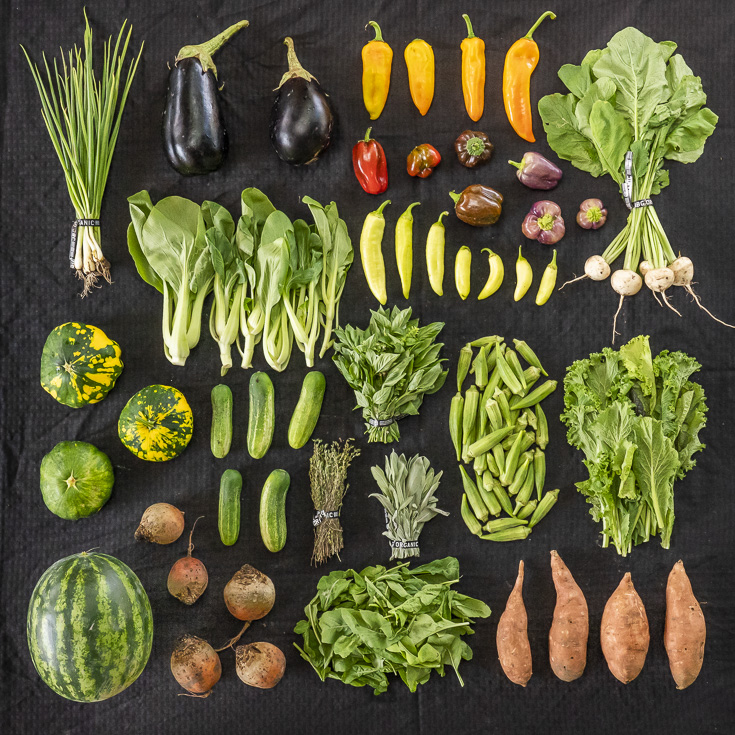 CSA Box Contents Week of Aug 31st
CSA Box Contents Week of Aug 31st
Large Box
Bok Choy, Baby
Eggplant
Greens, Arugula
Greens, Farmers Choice
Herb, Farmers Choice
Melon, Watermelon, Red
Okra
Pepper, Sweet Medley
Potato
Radish
Squash. Summer Medley
ITALIAN GRILLED TEXAS OKRA + SQUASH
09/03/20 — Heydon Hatcher
By Isaac + Heydon
A little over a year ago, we made a celebratory trip to explore, imbibe, and devour our way through some of the larger port cities peppered around the Mediterranean Sea. Seems like a far-flung fantasy these days; however, we sashayed our way through a week of European euphoria and found ourselves in Rome’s Trastevere neighborhood on the final day of our adventure. We were sipping prosecco in the late afternoon sun when a plate of sliced and grilled artichokes served with lemon, olive oil, and parmesan slid in front of us and changed all three of our lives forever (pictured below). How could something so simple and straightforward be so delicious? I was in a daze for the rest of the afternoon as a result and am in a daze now just reliving it in my memories. This experience of pure and blissful epicurean simplicity was Isaac’s inspiration for the following recipe which is a showstopping and absolutely delightful way to use all the late summer okra and squash. Enjoy and happy September!
![]() Yum.
Yum.
INGREDIENTS
SAUCE INGREDIENTS
TOPPERS
Grill the okra and squash and put a little bit of melted butter over them to encourage some flame, scorching them every few minutes. The okra only needs about 8-10 minutes on the grill, and the squash needs a bit more time. Push on them every once in a while, if they feel a little wilted and soft, they are ready to go. After you pull them off the grill add 3 or 4 grinds of salt and pepper on the vegetables. If you are including the bacon in this recipe, prepare this ingredient simultaneous of the grilling process, and make sure it is crispy. Prepare the sauce ingredients all together in a bowl.
Chop up the squash and plate it with the grilled okra. Drizzle the sauce over the veggies, and top the dish with chopped pieces of bacon, lemon zest, and grated parmesan cheese. Eat!
![]() The artichokes that started it all.
The artichokes that started it all.
A little over a year ago, we made a celebratory trip to explore, imbibe, and devour our way through some of the larger port cities peppered around the Mediterranean Sea. Seems like a far-flung fantasy these days; however, we sashayed our way through a week of European euphoria and found ourselves in Rome’s Trastevere neighborhood on the final day of our adventure. We were sipping prosecco in the late afternoon sun when a plate of sliced and grilled artichokes served with lemon, olive oil, and parmesan slid in front of us and changed all three of our lives forever (pictured below). How could something so simple and straightforward be so delicious? I was in a daze for the rest of the afternoon as a result and am in a daze now just reliving it in my memories. This experience of pure and blissful epicurean simplicity was Isaac’s inspiration for the following recipe which is a showstopping and absolutely delightful way to use all the late summer okra and squash. Enjoy and happy September!
 Yum.
Yum.
INGREDIENTS
- 4 squash
- Bag of okra
- 2 pieces of thickly cut bacon (we LOVE Kiolbassa Bacon from San Antonio)
SAUCE INGREDIENTS
- 3 green onions, chopped thinly
- 1 clove of garlic, finely minced
- Half to ¾ of a lemon, juiced
- 4 pinches of salt
- A healthy pour of olive oil (probably half a cup)
- 1 ½ tablespoon of red pepper flakes
TOPPERS
- Small chopped bits of bacon
- Lemon zest
- A light grate of parmesan cheese
Grill the okra and squash and put a little bit of melted butter over them to encourage some flame, scorching them every few minutes. The okra only needs about 8-10 minutes on the grill, and the squash needs a bit more time. Push on them every once in a while, if they feel a little wilted and soft, they are ready to go. After you pull them off the grill add 3 or 4 grinds of salt and pepper on the vegetables. If you are including the bacon in this recipe, prepare this ingredient simultaneous of the grilling process, and make sure it is crispy. Prepare the sauce ingredients all together in a bowl.
Chop up the squash and plate it with the grilled okra. Drizzle the sauce over the veggies, and top the dish with chopped pieces of bacon, lemon zest, and grated parmesan cheese. Eat!
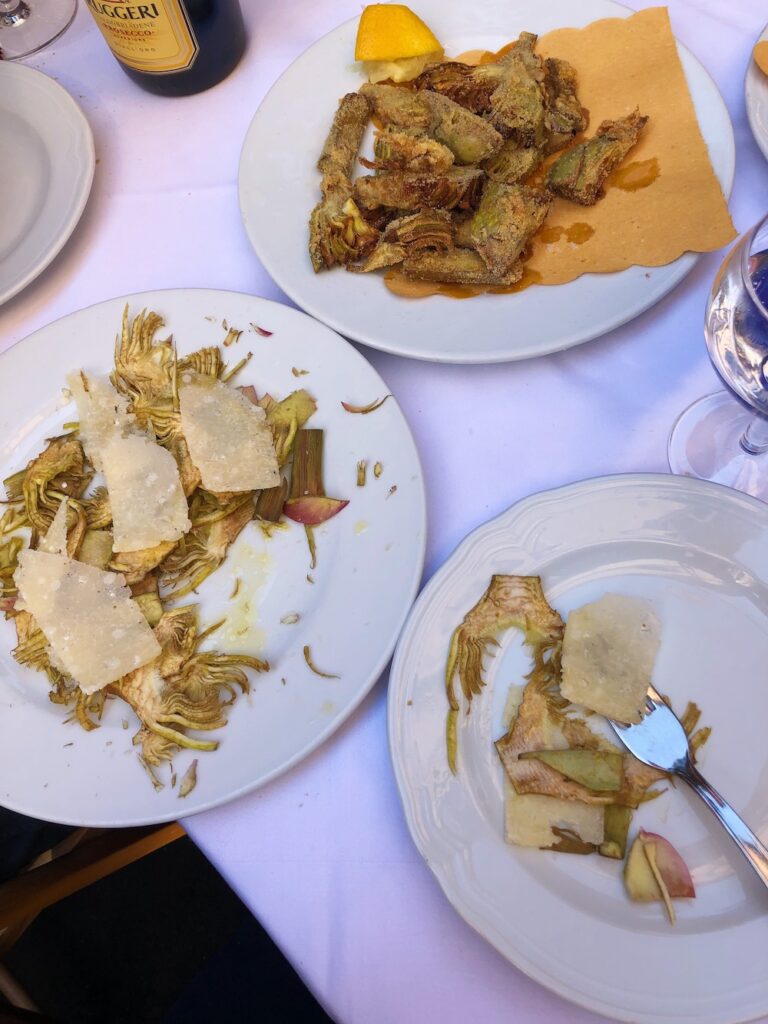 The artichokes that started it all.
The artichokes that started it all.A TREE HOUSE CHAT WITH FARMER TRACY
09/03/20 — Ada Broussard
In case you missed it, last week we went to Garfield to catch up with Farmer Brenton, who has been focused on the farm’s battle with pigweed and our plan to tackle this pesky plant and ensure a healthy fall crop. This week, we met up with Farmer Tracy, the barn manager at our Hergotz Packing Shed, who, for the past few weeks has turned his attention to the here and now: what vegetables are currently thriving in the fields, how to get them harvested efficiently while maintaining the quality, and how to incorporate these exciting vegetables into our CSA Program and farmers’ market stalls.
We chatted with Tracy at the end of the day in Hergotz’s beloved tree house - a paradise Brenton built for his kids 10+ years ago, but has since been taken over by tired farmers looking for a playful spot to rest, and maybe slide, or zipline or swing. Tracy is our farm’s barn manager and his role is one of a master conductor. Here are some of the main operations Tracy helps to orchestrate: he contributes to crop planning, coordinates the daily harvest needs with Vicente, works with Vicente, Temo, Jack, and Brenton to keep an eye on the fields and progression of upcoming crops, works with Ricky and the barn crew to keep the cooler inventory accurate and updated, works with the CSA Packing Manager, Andrew, to plan and execute the weekly boxes, works with the wholesale, restaurants, and farmers’ market departments to determine and communicate what veggies they need from the fields, and when. Tracy also works with Krishna to troubleshoot staffing at the packing shed- making sure we have enough hands to make light-ish the work and also works with Faith to intercept any quality concerns from our CSA Program. If that sounds like a lot, it is. Despite this complex symphony of systems that Tracy keeps track of, his head always seems organized, and his message clear.
Here is what Farmer Tracy wants you to remember at this moment in the season.
![]() Tracy, on the phone with the farm and likely signaling to a driver that he's successfully backed up the reefer tuck to the loading dock. Photo by Scott David Gordon.
Tracy, on the phone with the farm and likely signaling to a driver that he's successfully backed up the reefer tuck to the loading dock. Photo by Scott David Gordon.
ONE: WINTER IS COMING.
We know that at this point in the summer season, it can be easy to grow fatigued by seemingly endless okra and eggplant (we’ve got recipes for that!). If you’ve been outside between the hours of 9am and 6 pm, you’re no doubt aware that it’s hot outside. The truth is, summer is the hardest season for our farm. There are only a limited number of crops that can stand up to the sometimes oppressive temperatures, and we’re growing just about all of them!
Farmer Tracy has a great perspective on this late summer monotony: “It might take you a few months into the CSA to really feel this way, but the feeling of drudgery is one of the beautiful things, I think, about the program. There is the time of anticipation which is the same that we, as farmers, experience - we’re anticipating what crops are going to come of our work. And then there is the point in the growing season when all the box contents all feel like a breath of fresh air, the boxes are full of very high-quality stuff... And then there is a period of drudgery and monotony. And I don’t mean it in such a negative sense. But even as farmers…. like, man, it’s SO hot… we’ve been doing this every day, in the heat… or maybe it’s really cold… and that work can feel like drudgery, too. And the customers are sharing this experience with us and that makes us connected in a way... And it's a circle that keeps going around, with the seasons. And rather than going to a place of pure boredom and drudgery, and least you can ride the rollercoaster right round, baby, right round.”
The take-home message from Farmer Tracy? Cool-season crops are on their way, in fact, they’re beginning to trickle in, and before you know it you’ll be drowning in kale and dreaming of earthy eggplant.
![]() Baby bok choy, mustard, turnips, and arugula: just some of the cool-season crops that are trickling into CSA boxes and market stands, alike. Photo by Scott David Gordon
Baby bok choy, mustard, turnips, and arugula: just some of the cool-season crops that are trickling into CSA boxes and market stands, alike. Photo by Scott David Gordon
TWO: BELIEVE US: WE’RE DOING EVERYTHING WE CAN TO BRING YOU VARIETY
If you’re a locavore or home gardener who truly has a pulse on what is possible in the summer months, you may have noticed some surprisingly green guests in your CSA box these past few weeks. Arugula, bok choy, and mustard greens have made their late August, early-September debut in CSA boxes and market stands, alike. The journey of these leafy greens, however, was anything but simple. We are constantly testing the limits of planting windows, always with the goal to maybe, just maybe, bring you tomatoes in May or arugula in early September. Often, we don’t count on these plantings and view their potential success as somewhat experimental.
A week or so ago, it was a miraculous sight to see beds blanketed in bright green arugula, bok choy, and mustards. But it shouldn’t have been too much of a surprise - when we planted these greens, there was a concerted effort on the farm to keep a close eye on these crops, adjust watering schedules if needed, and keep the weeds at bay. This effort paid off, and we had succeeded in growing a successful crop on the fridge of a season! But, that was just part one in getting these crops into your kitchen. Tracy tells me the story of the bok choy: “We all agreed that if we were going to plant these things early, we’d have to adjust our harvest schedule a bit to accommodate for these more delicate crops being ready in the middle of the summer. They can’t be harvested and spend any time in the sun… I mean, it’s over 100 degrees almost every day, and it’s in the 90s by 8 or 9 in the morning. When are we going to harvest them? It can’t spend any time in the field (after it’s picked) or it will be toast. So we had to switch the schedule up - rather than harvesting squash first in the morning, we’d harvest the greens first thing while it’s still cool outside.” Harvesting bok choy early in the morning (at sunrise!) before harvesting squash may sound like a simple adjustment, but this one change can have ripple effects for our operation. For example, if squash was listed on the Whole Foods or Central Market distribution list for the day, the packing crew who meticulously puts these labor-intensive orders together would be behind schedule, waiting on squash.
![]() We know we've been talking about baby bok choy, but there are obviously some big boys, too. Photo by Scott David Gordon.
We know we've been talking about baby bok choy, but there are obviously some big boys, too. Photo by Scott David Gordon.
There are more adjustments that have to happen in the fields to make this bok choy, for example, happen, “To harvest this stuff and be happy with the quality, we had to make sure we had tractors and trailers out in the fields waiting for the harvest to be complete so that the second it was done, it was being trucked to the coolers.” Other summer crops like squash and melons can withstand a little bit of time in the sun, and our harvest crew can simply stack full bins near the end of the rows, and a tractor can scoop them up when it’s available. But for a leafy green like bok choy, it truly must be put in the cooler moments after it’s cut from the ground, else customers would be receiving pre-cooked baby bok choy, and we’re not really a meal-delivery company.
Once bok choy arrives at our packing shed, these tiny stalks are immediately dunked in cold water to remove the field heat. After a cool dunk, the bok choy is stored in the cooler, where we now pack our CSA shares, and remains in this cooler until it's transported to your doorstep or neighborhood. Tracy concludes the bok choy backstory by reiterating the whole-farm effort necessary to get an edge on seasonality, “From beginning to end, we gotta have that circle of communication from the farm to the barn to make it happen.”
![]() Farmer Tracy going over some of the numbers for the day. Photo by Scott David Gordon.
Farmer Tracy going over some of the numbers for the day. Photo by Scott David Gordon.
WE PROMISE WE HAVE OUR REASONS
When chatting with Tracy about the beautiful bok choy, it was clear that making this particular harvest happen was a labor of love. An early-season gift from the JBG Farmers to our CSA Members, and a gift that we’re proud of and excited to produce! But remember how we mentioned that plantings like this are somewhat experimental? When planning out our CSA Box Contents for August and September, the sudden availability of baby bok choy, for example, wasn’t accounted for.
![]() CSA Shares ready for pickup at the Mueller Farmers Market last weekend. Photo by Scott David Gordon.
CSA Shares ready for pickup at the Mueller Farmers Market last weekend. Photo by Scott David Gordon.
Tracy reflects on the decision to include the bok choy, anyway: “Something Brenton said to me years ago was on my mind this week. He was kind of talking about his core beliefs and ideas about the CSA and said, ‘Tracy, if this is ready and this is ready… let’s harvest it!’ And I’m like, ‘Brenton, I know it’s ready, but what are we going to do with it if you harvest it? We’ve already planned out the CSA contents, and we’re several days into finalizing the logistics. We’d have to change the harvest schedule, update the website, and possibly deal with upset customers who are trying to meal plan.’ And Brenton responded, ‘I understand all of this and those are all important… but these crops are amazing! They’re the best we have to offer right now, and I really want the best of what we have to go into the CSA boxes regardless of when it becomes ready. I don’t want our CSA members to miss out.’”
Planning the box contents for so many families, the building blocks of their weekly meals, is something we take very seriously. We promise that if you ever receive something in your share that you weren’t expecting, it’s there for a reason and it’s something we thought long and hard about; we’re not switching veggies on a whim and are always trying to find a balance between delivering exactly what we said we would, and also making sure you don’t miss out on the firsts of the season. Plants don’t always grow like we think they will, and our farm systems (and CSA box contents) sometimes have to adjust accordingly.
![]() Dunked baby bok choy. Photo by Scott David Gordon.
Dunked baby bok choy. Photo by Scott David Gordon.
IN CONCLUSION
For years, we’ve grown, harvested, and packed for a pretty consistent number of CSA boxes. About 6 months ago, the number of CSA boxes we were packing on a daily basis doubled. Now, with a bit of distance from the 2020 March to remember, we’ve finally adjusted to this new volume, both from the planting and packing perspective. For those of you that may be new to the CSA, we want to thank you for supporting our local and organic farm! We know that making the shift to a more seasonally-focused diet can sometimes feel limiting compared to the endless isles of imported produce at the grocery store. You may wonder why one week you got huge honkers of sweet potatoes, and the next week you got a bundle of baby sweet potats. And the simple answer is beautiful - because they’re coming straight from the farm! Grocery stores have very strict size (and cosmetic) standards for the produce they’re willing to buy from farmers, but there are plenty of harvested crops that don’t qualify for that beauty pageant. As a member of our CSA Program, you are committing to supporting our whole farm and its whole harvest. You’ll start to notice how even the size of certain crops, like peppers, can change along with the season. Usually, at the beginning of the season when the plants are at their healthiest, peppers come in very large. The same pepper plant that produced ribbon-winning peppers at the beginning of the season will usually produce smaller peppers further into the summer. But Farmer Tracy wants to make sure you know that we’re always going to maintain the value of your CSA share and adjust for the changes in crop size. Smaller peppers in the field simply mean you get more peppers - equal to the volume of the early-season giants.
![]() Same potato crop, different sizing possibilities... all delicious and nutritious! Photo by Scott David Gordon
Same potato crop, different sizing possibilities... all delicious and nutritious! Photo by Scott David Gordon
Farmer Tracy is setting the tone for this seasonal shift, and we’re eager to follow along, “Fall is so close. It’s going to be one of the best. There’s no such thing as luck. It’s preparation meets opportunity. We’re so prepared, top down!” If you’ve made it to the bottom of this post, we just want to say thank you for following along. And also! If you’re a CSA Member, we’ve got a little secret to tell you: Customization is OPEN! We’re not quite ready to shout it from the rooftops, yet, but if you happen to be reading this discreet announcement we want you to log in to your account and customize to your heart’s desire. This somewhat secret and slow return of our customization feature will help our CSA crew adjust to this big change and work out any kinks. Thanks for your support along the way!
As always, thanks for reading. Have a happy Labor Day!
Love, Your Farmers
![]() Farmer Tracy and his two kids, Obi and Eden, at our Garfield Farm back in March of 2019. Photo by Scott David Gordon.
Farmer Tracy and his two kids, Obi and Eden, at our Garfield Farm back in March of 2019. Photo by Scott David Gordon.
We chatted with Tracy at the end of the day in Hergotz’s beloved tree house - a paradise Brenton built for his kids 10+ years ago, but has since been taken over by tired farmers looking for a playful spot to rest, and maybe slide, or zipline or swing. Tracy is our farm’s barn manager and his role is one of a master conductor. Here are some of the main operations Tracy helps to orchestrate: he contributes to crop planning, coordinates the daily harvest needs with Vicente, works with Vicente, Temo, Jack, and Brenton to keep an eye on the fields and progression of upcoming crops, works with Ricky and the barn crew to keep the cooler inventory accurate and updated, works with the CSA Packing Manager, Andrew, to plan and execute the weekly boxes, works with the wholesale, restaurants, and farmers’ market departments to determine and communicate what veggies they need from the fields, and when. Tracy also works with Krishna to troubleshoot staffing at the packing shed- making sure we have enough hands to make light-ish the work and also works with Faith to intercept any quality concerns from our CSA Program. If that sounds like a lot, it is. Despite this complex symphony of systems that Tracy keeps track of, his head always seems organized, and his message clear.
Here is what Farmer Tracy wants you to remember at this moment in the season.
 Tracy, on the phone with the farm and likely signaling to a driver that he's successfully backed up the reefer tuck to the loading dock. Photo by Scott David Gordon.
Tracy, on the phone with the farm and likely signaling to a driver that he's successfully backed up the reefer tuck to the loading dock. Photo by Scott David Gordon.
ONE: WINTER IS COMING.
We know that at this point in the summer season, it can be easy to grow fatigued by seemingly endless okra and eggplant (we’ve got recipes for that!). If you’ve been outside between the hours of 9am and 6 pm, you’re no doubt aware that it’s hot outside. The truth is, summer is the hardest season for our farm. There are only a limited number of crops that can stand up to the sometimes oppressive temperatures, and we’re growing just about all of them!
Farmer Tracy has a great perspective on this late summer monotony: “It might take you a few months into the CSA to really feel this way, but the feeling of drudgery is one of the beautiful things, I think, about the program. There is the time of anticipation which is the same that we, as farmers, experience - we’re anticipating what crops are going to come of our work. And then there is the point in the growing season when all the box contents all feel like a breath of fresh air, the boxes are full of very high-quality stuff... And then there is a period of drudgery and monotony. And I don’t mean it in such a negative sense. But even as farmers…. like, man, it’s SO hot… we’ve been doing this every day, in the heat… or maybe it’s really cold… and that work can feel like drudgery, too. And the customers are sharing this experience with us and that makes us connected in a way... And it's a circle that keeps going around, with the seasons. And rather than going to a place of pure boredom and drudgery, and least you can ride the rollercoaster right round, baby, right round.”
The take-home message from Farmer Tracy? Cool-season crops are on their way, in fact, they’re beginning to trickle in, and before you know it you’ll be drowning in kale and dreaming of earthy eggplant.
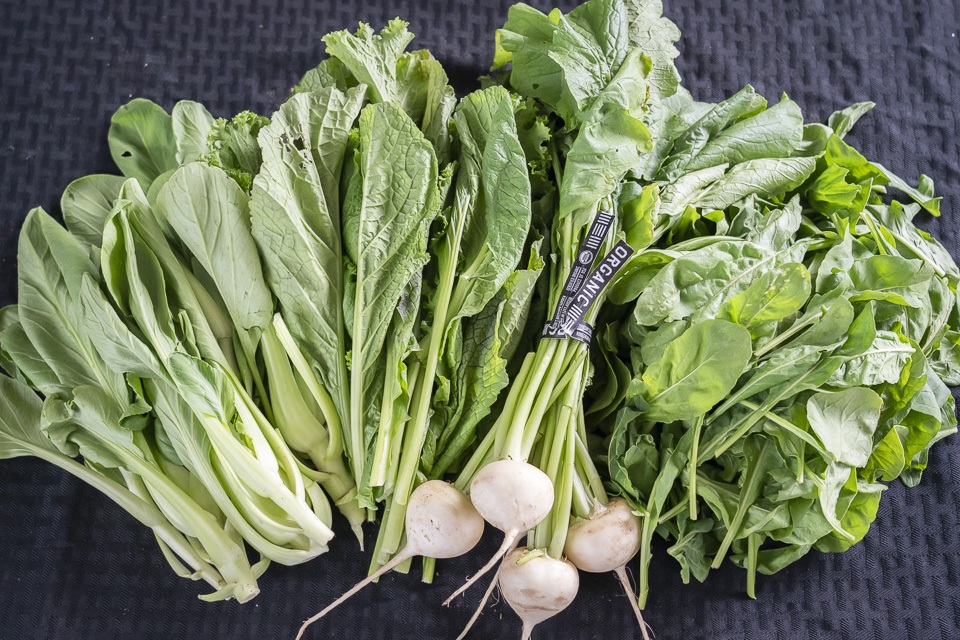 Baby bok choy, mustard, turnips, and arugula: just some of the cool-season crops that are trickling into CSA boxes and market stands, alike. Photo by Scott David Gordon
Baby bok choy, mustard, turnips, and arugula: just some of the cool-season crops that are trickling into CSA boxes and market stands, alike. Photo by Scott David Gordon
TWO: BELIEVE US: WE’RE DOING EVERYTHING WE CAN TO BRING YOU VARIETY
If you’re a locavore or home gardener who truly has a pulse on what is possible in the summer months, you may have noticed some surprisingly green guests in your CSA box these past few weeks. Arugula, bok choy, and mustard greens have made their late August, early-September debut in CSA boxes and market stands, alike. The journey of these leafy greens, however, was anything but simple. We are constantly testing the limits of planting windows, always with the goal to maybe, just maybe, bring you tomatoes in May or arugula in early September. Often, we don’t count on these plantings and view their potential success as somewhat experimental.
A week or so ago, it was a miraculous sight to see beds blanketed in bright green arugula, bok choy, and mustards. But it shouldn’t have been too much of a surprise - when we planted these greens, there was a concerted effort on the farm to keep a close eye on these crops, adjust watering schedules if needed, and keep the weeds at bay. This effort paid off, and we had succeeded in growing a successful crop on the fridge of a season! But, that was just part one in getting these crops into your kitchen. Tracy tells me the story of the bok choy: “We all agreed that if we were going to plant these things early, we’d have to adjust our harvest schedule a bit to accommodate for these more delicate crops being ready in the middle of the summer. They can’t be harvested and spend any time in the sun… I mean, it’s over 100 degrees almost every day, and it’s in the 90s by 8 or 9 in the morning. When are we going to harvest them? It can’t spend any time in the field (after it’s picked) or it will be toast. So we had to switch the schedule up - rather than harvesting squash first in the morning, we’d harvest the greens first thing while it’s still cool outside.” Harvesting bok choy early in the morning (at sunrise!) before harvesting squash may sound like a simple adjustment, but this one change can have ripple effects for our operation. For example, if squash was listed on the Whole Foods or Central Market distribution list for the day, the packing crew who meticulously puts these labor-intensive orders together would be behind schedule, waiting on squash.
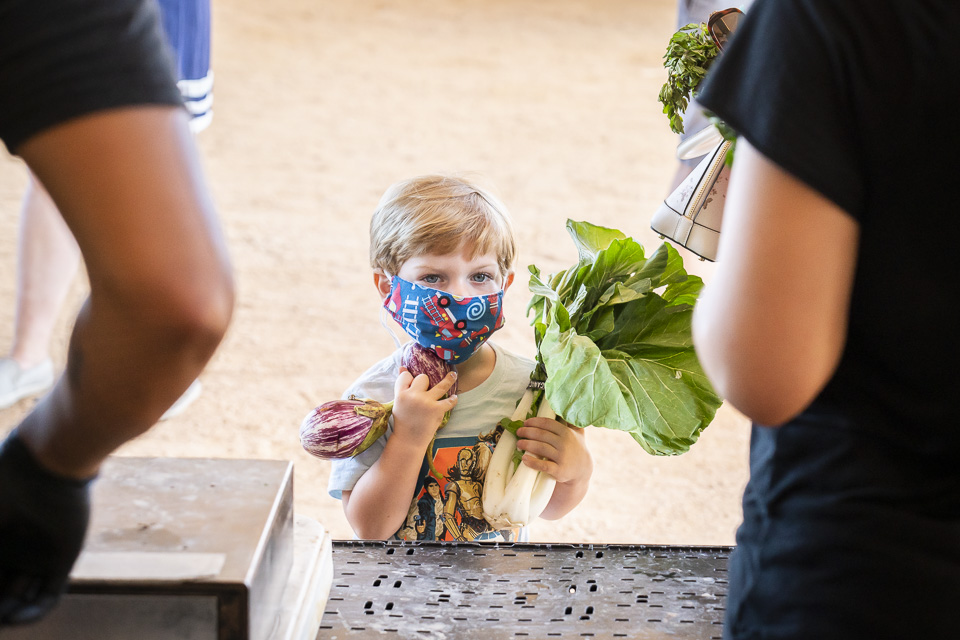 We know we've been talking about baby bok choy, but there are obviously some big boys, too. Photo by Scott David Gordon.
We know we've been talking about baby bok choy, but there are obviously some big boys, too. Photo by Scott David Gordon.
There are more adjustments that have to happen in the fields to make this bok choy, for example, happen, “To harvest this stuff and be happy with the quality, we had to make sure we had tractors and trailers out in the fields waiting for the harvest to be complete so that the second it was done, it was being trucked to the coolers.” Other summer crops like squash and melons can withstand a little bit of time in the sun, and our harvest crew can simply stack full bins near the end of the rows, and a tractor can scoop them up when it’s available. But for a leafy green like bok choy, it truly must be put in the cooler moments after it’s cut from the ground, else customers would be receiving pre-cooked baby bok choy, and we’re not really a meal-delivery company.
Once bok choy arrives at our packing shed, these tiny stalks are immediately dunked in cold water to remove the field heat. After a cool dunk, the bok choy is stored in the cooler, where we now pack our CSA shares, and remains in this cooler until it's transported to your doorstep or neighborhood. Tracy concludes the bok choy backstory by reiterating the whole-farm effort necessary to get an edge on seasonality, “From beginning to end, we gotta have that circle of communication from the farm to the barn to make it happen.”
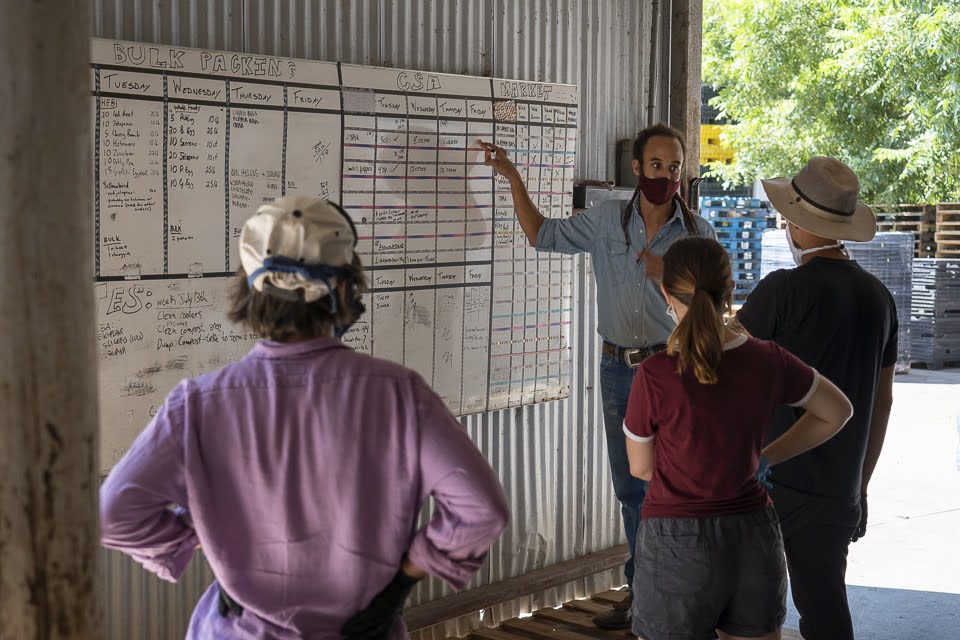 Farmer Tracy going over some of the numbers for the day. Photo by Scott David Gordon.
Farmer Tracy going over some of the numbers for the day. Photo by Scott David Gordon.
WE PROMISE WE HAVE OUR REASONS
When chatting with Tracy about the beautiful bok choy, it was clear that making this particular harvest happen was a labor of love. An early-season gift from the JBG Farmers to our CSA Members, and a gift that we’re proud of and excited to produce! But remember how we mentioned that plantings like this are somewhat experimental? When planning out our CSA Box Contents for August and September, the sudden availability of baby bok choy, for example, wasn’t accounted for.
 CSA Shares ready for pickup at the Mueller Farmers Market last weekend. Photo by Scott David Gordon.
CSA Shares ready for pickup at the Mueller Farmers Market last weekend. Photo by Scott David Gordon.
Tracy reflects on the decision to include the bok choy, anyway: “Something Brenton said to me years ago was on my mind this week. He was kind of talking about his core beliefs and ideas about the CSA and said, ‘Tracy, if this is ready and this is ready… let’s harvest it!’ And I’m like, ‘Brenton, I know it’s ready, but what are we going to do with it if you harvest it? We’ve already planned out the CSA contents, and we’re several days into finalizing the logistics. We’d have to change the harvest schedule, update the website, and possibly deal with upset customers who are trying to meal plan.’ And Brenton responded, ‘I understand all of this and those are all important… but these crops are amazing! They’re the best we have to offer right now, and I really want the best of what we have to go into the CSA boxes regardless of when it becomes ready. I don’t want our CSA members to miss out.’”
Planning the box contents for so many families, the building blocks of their weekly meals, is something we take very seriously. We promise that if you ever receive something in your share that you weren’t expecting, it’s there for a reason and it’s something we thought long and hard about; we’re not switching veggies on a whim and are always trying to find a balance between delivering exactly what we said we would, and also making sure you don’t miss out on the firsts of the season. Plants don’t always grow like we think they will, and our farm systems (and CSA box contents) sometimes have to adjust accordingly.
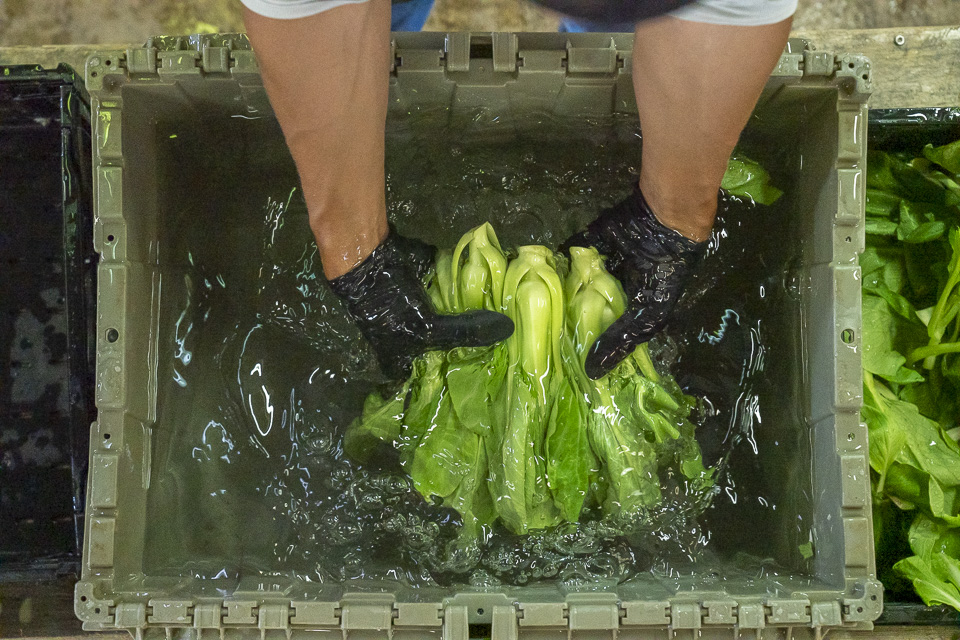 Dunked baby bok choy. Photo by Scott David Gordon.
Dunked baby bok choy. Photo by Scott David Gordon.
IN CONCLUSION
For years, we’ve grown, harvested, and packed for a pretty consistent number of CSA boxes. About 6 months ago, the number of CSA boxes we were packing on a daily basis doubled. Now, with a bit of distance from the 2020 March to remember, we’ve finally adjusted to this new volume, both from the planting and packing perspective. For those of you that may be new to the CSA, we want to thank you for supporting our local and organic farm! We know that making the shift to a more seasonally-focused diet can sometimes feel limiting compared to the endless isles of imported produce at the grocery store. You may wonder why one week you got huge honkers of sweet potatoes, and the next week you got a bundle of baby sweet potats. And the simple answer is beautiful - because they’re coming straight from the farm! Grocery stores have very strict size (and cosmetic) standards for the produce they’re willing to buy from farmers, but there are plenty of harvested crops that don’t qualify for that beauty pageant. As a member of our CSA Program, you are committing to supporting our whole farm and its whole harvest. You’ll start to notice how even the size of certain crops, like peppers, can change along with the season. Usually, at the beginning of the season when the plants are at their healthiest, peppers come in very large. The same pepper plant that produced ribbon-winning peppers at the beginning of the season will usually produce smaller peppers further into the summer. But Farmer Tracy wants to make sure you know that we’re always going to maintain the value of your CSA share and adjust for the changes in crop size. Smaller peppers in the field simply mean you get more peppers - equal to the volume of the early-season giants.
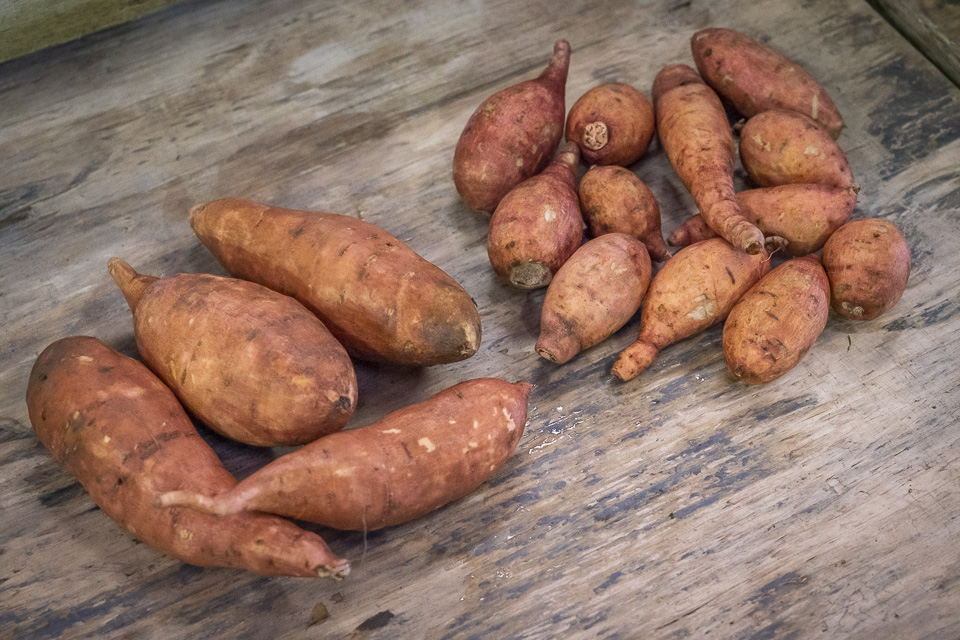 Same potato crop, different sizing possibilities... all delicious and nutritious! Photo by Scott David Gordon
Same potato crop, different sizing possibilities... all delicious and nutritious! Photo by Scott David Gordon
Farmer Tracy is setting the tone for this seasonal shift, and we’re eager to follow along, “Fall is so close. It’s going to be one of the best. There’s no such thing as luck. It’s preparation meets opportunity. We’re so prepared, top down!” If you’ve made it to the bottom of this post, we just want to say thank you for following along. And also! If you’re a CSA Member, we’ve got a little secret to tell you: Customization is OPEN! We’re not quite ready to shout it from the rooftops, yet, but if you happen to be reading this discreet announcement we want you to log in to your account and customize to your heart’s desire. This somewhat secret and slow return of our customization feature will help our CSA crew adjust to this big change and work out any kinks. Thanks for your support along the way!
As always, thanks for reading. Have a happy Labor Day!
Love, Your Farmers
 Farmer Tracy and his two kids, Obi and Eden, at our Garfield Farm back in March of 2019. Photo by Scott David Gordon.
Farmer Tracy and his two kids, Obi and Eden, at our Garfield Farm back in March of 2019. Photo by Scott David Gordon.
PHOTOS FROM THE FARM: 9.4.2020
09/04/20 — Ada Broussard
This week Scott caught up with our Farmer's Market Crew at the Mueller Farmers Market. During certain parts of the year, our booth is setup under the old airport hanger, and we're certainly grateful for the added shade!
![]() Both our Small and Individual CSA shares are packed in these red boxes. Here is a healthy stack, ready for pickup! Photo by Scott David Gordon.
Both our Small and Individual CSA shares are packed in these red boxes. Here is a healthy stack, ready for pickup! Photo by Scott David Gordon.
![]() The Mueller market is on Sundays from 10am-2pm.
The Mueller market is on Sundays from 10am-2pm.
![]() We are still operating our booth following our COVID-19 protocol: customers are not allowed to browse our stall, and instead they "order" what they'd like from our register. In this photo you see Devon making up a customer's order! Photo by Scott David Gordon.
We are still operating our booth following our COVID-19 protocol: customers are not allowed to browse our stall, and instead they "order" what they'd like from our register. In this photo you see Devon making up a customer's order! Photo by Scott David Gordon.
![]() Photo by Scott David Gordon.
Photo by Scott David Gordon.
![]() What a colorful bounty this week! Photo by Scott David Gordon.
What a colorful bounty this week! Photo by Scott David Gordon.
![]() Mint, please! Photo by Scott David Gordon.
Mint, please! Photo by Scott David Gordon.
![]() Bok choy and eggplant, too. Wonder what he's cooking? Photo by Scott David Gordon.
Bok choy and eggplant, too. Wonder what he's cooking? Photo by Scott David Gordon.
![]() Don't forget to bring a bag so you can leave your CSA box! Photo by Scott David Gordon.
Don't forget to bring a bag so you can leave your CSA box! Photo by Scott David Gordon.
![]() Scott caught in the act! Photo by Scott David Gordon.
Scott caught in the act! Photo by Scott David Gordon.
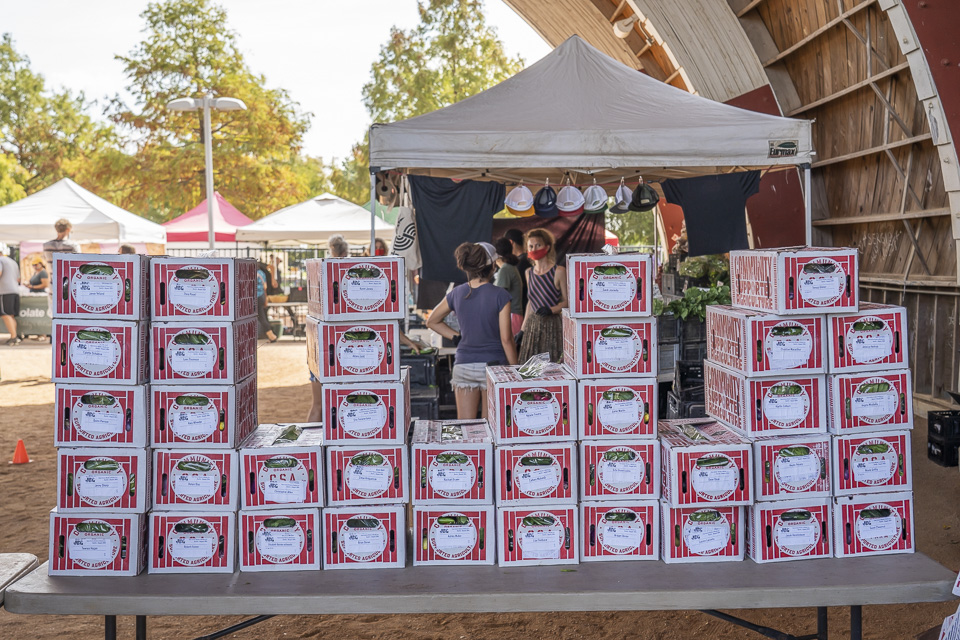 Both our Small and Individual CSA shares are packed in these red boxes. Here is a healthy stack, ready for pickup! Photo by Scott David Gordon.
Both our Small and Individual CSA shares are packed in these red boxes. Here is a healthy stack, ready for pickup! Photo by Scott David Gordon.
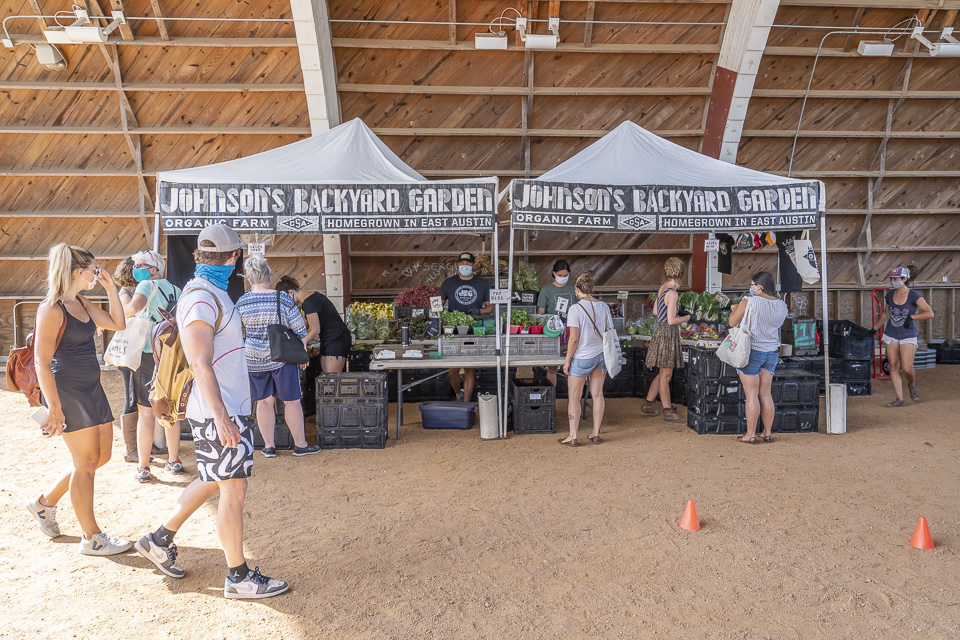 The Mueller market is on Sundays from 10am-2pm.
The Mueller market is on Sundays from 10am-2pm.
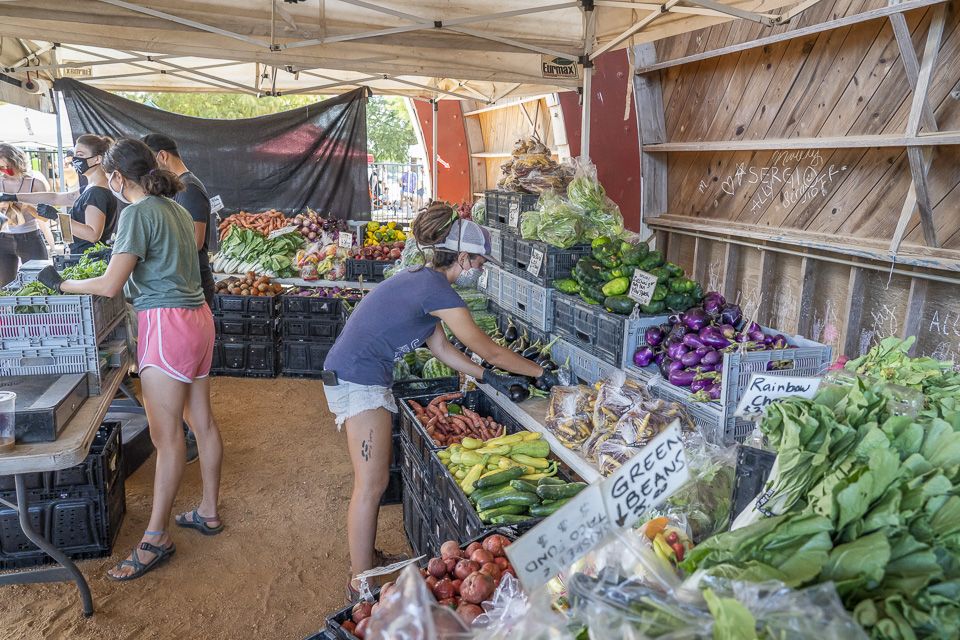 We are still operating our booth following our COVID-19 protocol: customers are not allowed to browse our stall, and instead they "order" what they'd like from our register. In this photo you see Devon making up a customer's order! Photo by Scott David Gordon.
We are still operating our booth following our COVID-19 protocol: customers are not allowed to browse our stall, and instead they "order" what they'd like from our register. In this photo you see Devon making up a customer's order! Photo by Scott David Gordon.
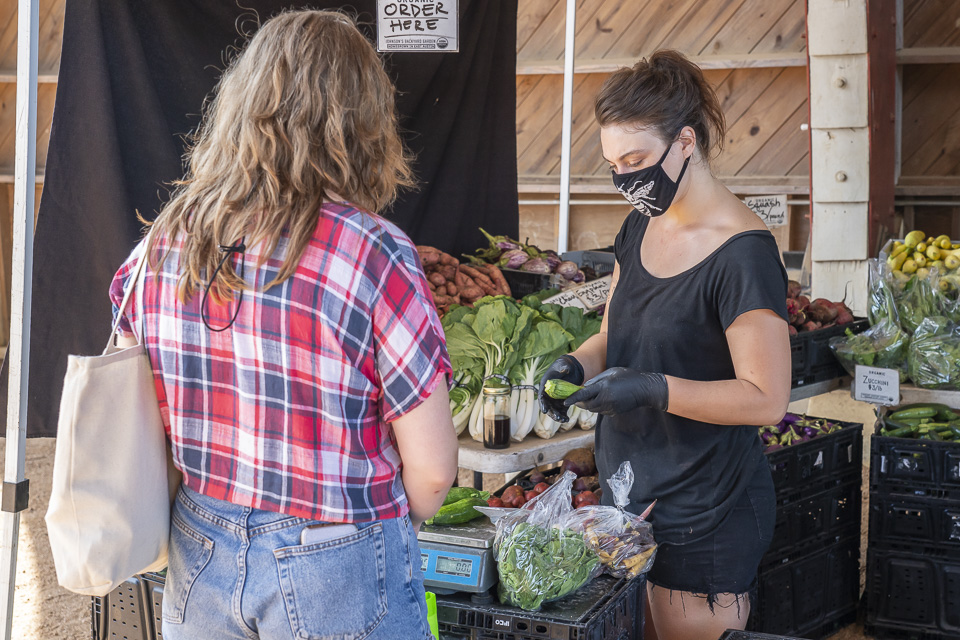 Photo by Scott David Gordon.
Photo by Scott David Gordon.
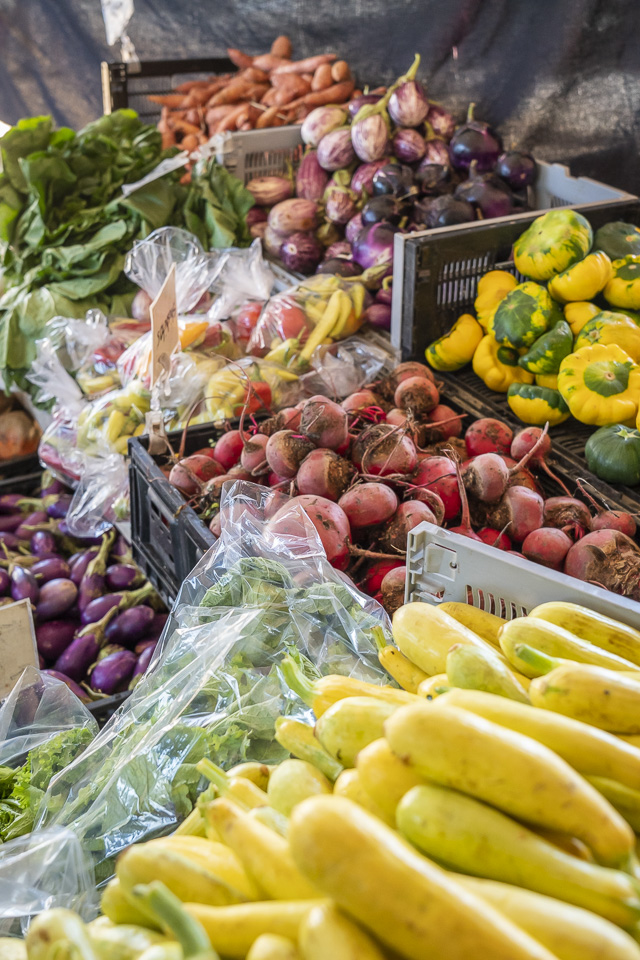 What a colorful bounty this week! Photo by Scott David Gordon.
What a colorful bounty this week! Photo by Scott David Gordon.
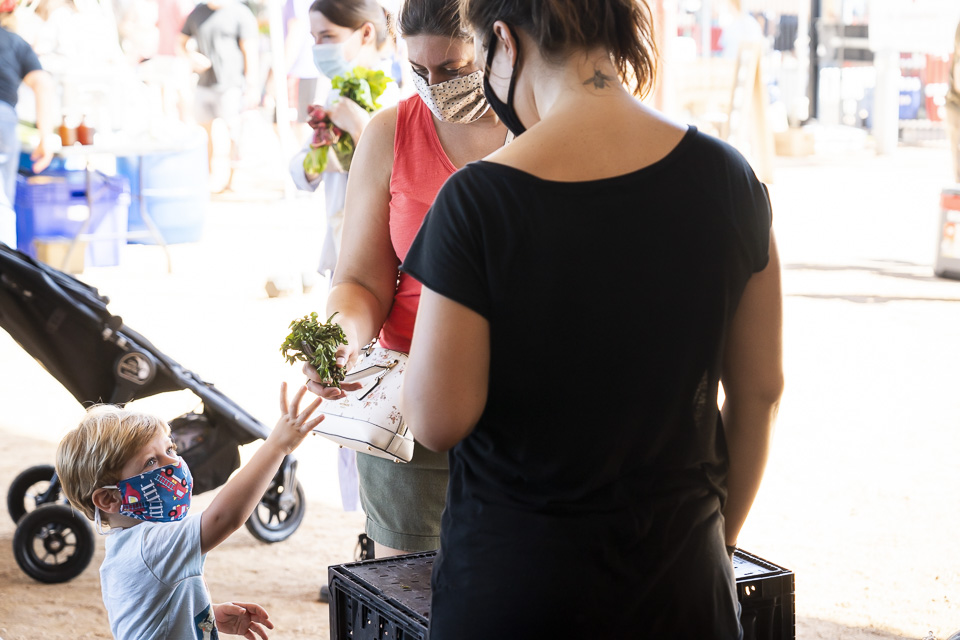 Mint, please! Photo by Scott David Gordon.
Mint, please! Photo by Scott David Gordon.
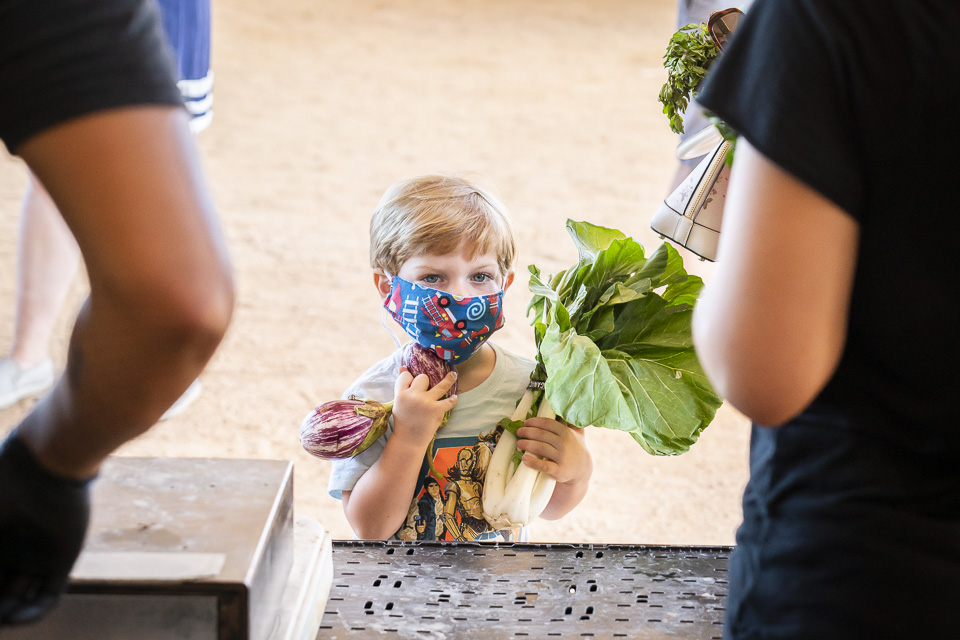 Bok choy and eggplant, too. Wonder what he's cooking? Photo by Scott David Gordon.
Bok choy and eggplant, too. Wonder what he's cooking? Photo by Scott David Gordon.
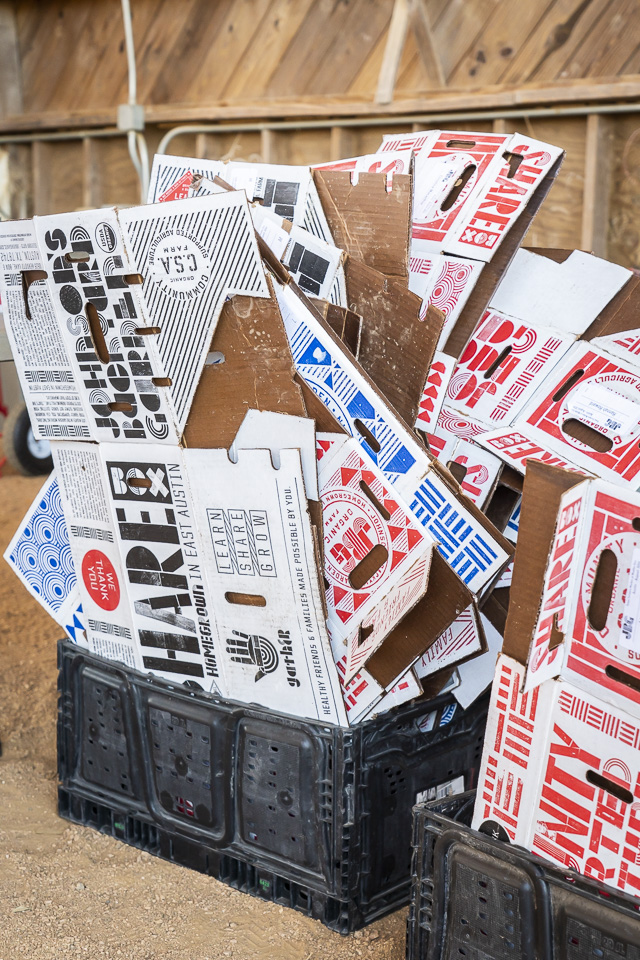 Don't forget to bring a bag so you can leave your CSA box! Photo by Scott David Gordon.
Don't forget to bring a bag so you can leave your CSA box! Photo by Scott David Gordon.
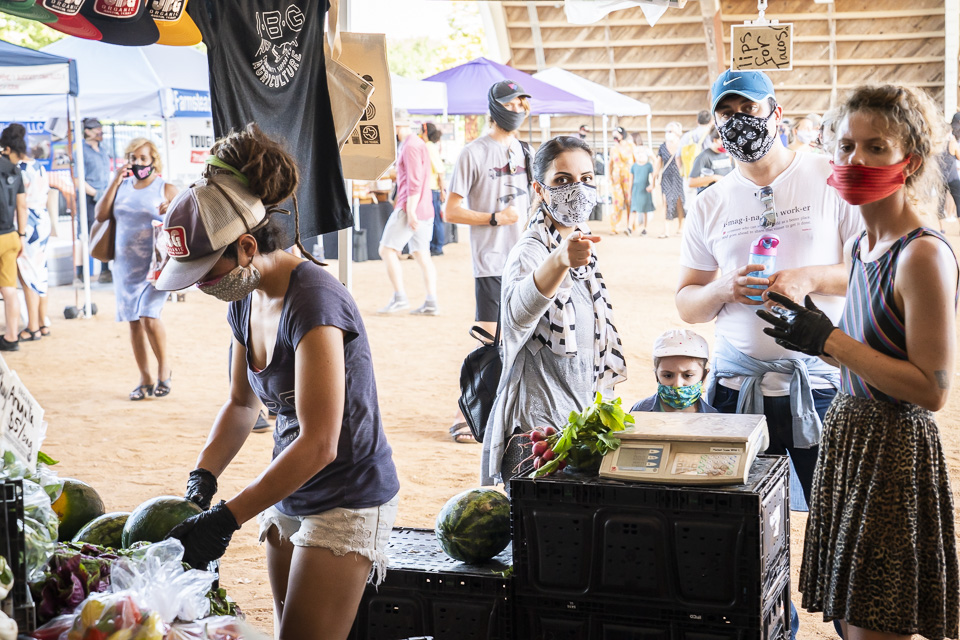 Scott caught in the act! Photo by Scott David Gordon.
Scott caught in the act! Photo by Scott David Gordon.
NOW HIRING CSA PACKING CREW!
09/04/20 — Farm
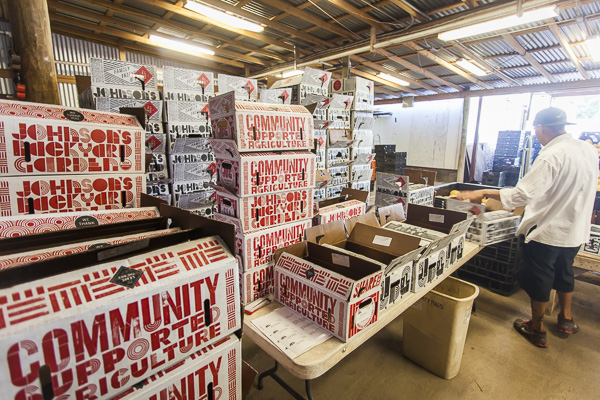
Position Title: CSA Packing Crew
Location: Austin, TX
Reports To: CSA Packing Manager
Position Summary:
JBG Organic is seeking an individual to join the CSA packing crew. The packing crew will be responsible for washing, processing, and packing vegetables harvested on the farm, including preparing wholesale and Community Supported Agriculture (CSA) orders. This position is also responsible for ensuring produce quality and compliance with health regulations. The worker will work closely with the barn manager, wholesale coordinator, and CSA manager to guarantee that operations and orders are completed correctly and in a timely manner. All farm employees are expected to be courteous, demonstrate a strong work ethic and attention to detail. We take pride on the farm in producing the highest quality vegetables through quality work.
Responsibilities:
- Receive, process, and package vegetables harvested on the farm
- Maintain a clean and sanitary working environment
- Ensure quality of all produce
- Prepare and package CSA orders and boxes for distribution
- Ensure that CSA boxes are packed according to customers’ customization and farms’ quality standards
Required:
- No previous experience required, only a desire to produce industry and farm work.
- Keen sense of detail and ability to apply this to packing standards
- Availability Monday-Friday 5:30am - 12:30pm
- A mantra that “Teamwork doesn’t seem like work!”
Physical Requirements:
- Ability to repeatedly lift 50lbs
- Ability to repeatedly kneel, bend, and squat
- Ability to withstand exposure to varying weather conditions
- Ability to withstand prolonged sitting, standing, or walking
- Ability or willingness to be trained on a forklift
Compensation & Benefits: $12/hr. Paid bi-weekly. Permanent employees are eligible for Individual Health Plan benefits. Full time employees also receive a weekly share of vegetables, and eggs on a bi-weekly basis.
Directions for Applying:
Please send an email to jobs@jbgorganic.com with the following format. Following specific directions is the first way to impress us!
Subject Line should read “CSA Packing Crew”
Email body should be short & sweet - help us notice you! Ensure that it contains your contact information and your resume.
Thank you for your interest in JBG Organic! You will be contacted for further information if we find that you might be a good fit for this position.
The responsibilities & duties listed above are intended to communicate general priorities of this position, but should not be understood as an exhaustive list of all work requirements to be completed at JBG Organic. Farms require flexibility! We are committed to training, developing, and promoting from within the company based on performance.
JBG Organic provides equal employment opportunities (EEO) to all employees and applicants for employment without regard to race, color, religion, gender, sex, national origin, age, disability, genetics, marital status, or sexual orientation.
CSA BOX CONTENTS WEEK OF SEPT 7TH
09/07/20 — Scott
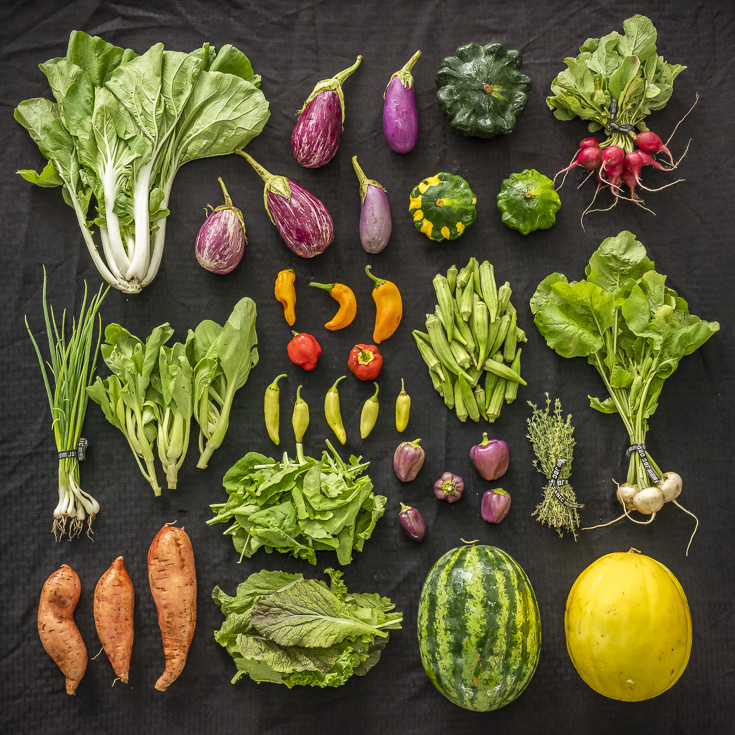 CSA Box Contents Week of Sept 7th
CSA Box Contents Week of Sept 7th
Large Box
Beets
Bok Choy
Cucumber
Greens, Farmers Choice
Greens, Mizuna
Herb
Melon
Onion, Multiplying
Pepper, Hot Medley
Potato, Sweet
Summer Squash
Turnip
Beets
Bok Choy
Cucumber
Greens, Farmers Choice
Greens, Mizuna
Herb
Melon
Onion, Multiplying
Pepper, Hot Medley
Potato, Sweet
Summer Squash
Turnip
Medium Box
Beets
Bok Choy, Baby
Eggplant
Greens, Farmers Choice
Herb
Okra
Onion, Multiplying
Pepper, Hot Medley
Summer Squash
Turnip
Beets
Bok Choy, Baby
Eggplant
Greens, Farmers Choice
Herb
Okra
Onion, Multiplying
Pepper, Hot Medley
Summer Squash
Turnip
Small Box
Bok Choy
Eggplant
Greens, Farmers Choice
Herb
Pepper, Sweet
Potato, Sweet
Turnip
Bok Choy
Eggplant
Greens, Farmers Choice
Herb
Pepper, Sweet
Potato, Sweet
Turnip
Individual Box
Bok Choy, Baby
Greens, Farmers Choice
Pepper, Sweet
Potato, Sweet
Radish
Bok Choy, Baby
Greens, Farmers Choice
Pepper, Sweet
Potato, Sweet
Radish
CSA BOX CONTENTS WEEK OF SEPT 7TH
09/08/20 — Scott
 CSA Box Contents Week of Sept 7th
CSA Box Contents Week of Sept 7th
Large Box
Bok Choy
Eggplant
Greens, Farmers Choice
Greens, Mizuna
Herb
Melon
Okra
Onion, Multiplying
Pepper, Sweet
Summer Squash
Turnip, White Japanese
ROSEMARY FONDANT SWEET POTATOES
09/09/20 — Ada Broussard
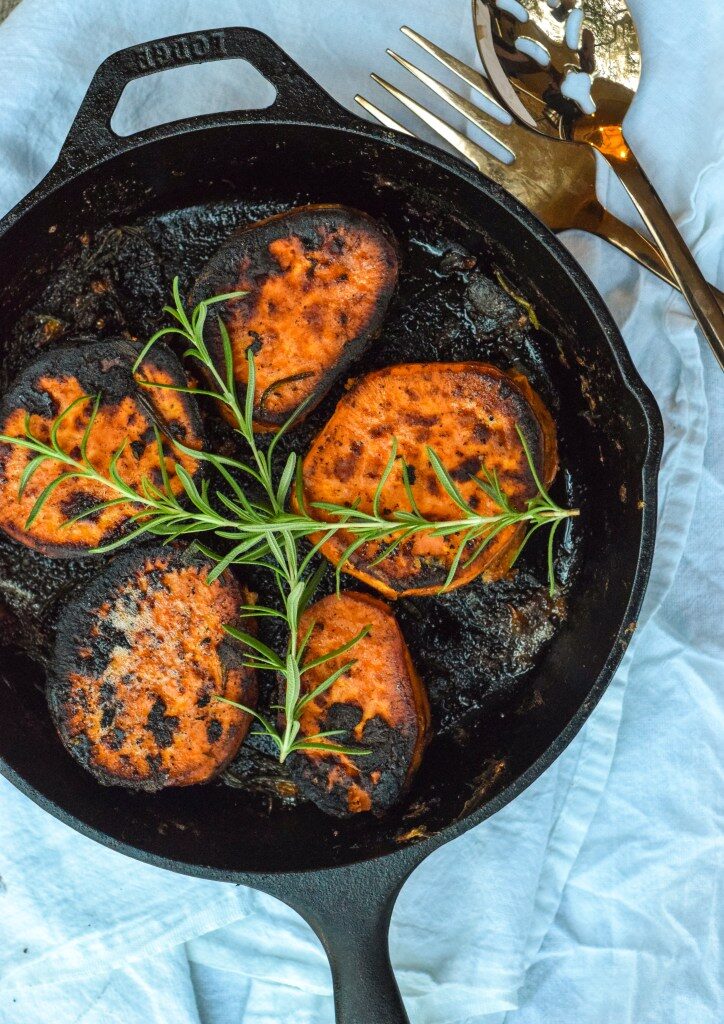 Photos and recipe by: The Migoni Kitchen
Photos and recipe by: The Migoni Kitchen
Fall is officially here! Time for all of the pumpkin, sweet potato, and squash dishes your heart desires. We love sweet potatoes, but like to mix things up in how we prepare them. Instead of simply roasting them or mashing them, we love these rosemary fondant sweet potatoes. They have a soft inside, but a crispy exterior, giving you the best of both worlds.
Fondant potatoes are a French preparation that involve searing the potatoes in butter, and then allowing them to simmer in broth and herbs to cook through on the inside. It takes a bit more effort than just simply roasting them, but is worth it in the end. You can absolutely prepare regular potatoes this way as well, but we love the flavor when done with sweet potatoes. We used chicken broth, rosemary, and garlic to infuse our potatoes, but you can use any flavors or herbs that you like. It’s a great side dish to impress guests for a dinner party and can be made ahead!
Ingredients:
- 1-2 Large Sweet Potatoes Peeled and sliced into 2 inch rounds
- 3 Tablespoons Unsalted Butter
- 2 Cups Chicken Stock
- 3 Cloves Garlic
- 3 Sprigs Fresh Rosemary
- Salt and Pepper To Taste
Instructions:
- Heat a large non-stick pan over medium-high heat and add in the butter.
- Once the butter begins to bubble, add in your sweet potato rounds and brown on each side for 3-4 minutes. While the sweet potatoes are browning, season with salt and pepper.
- Add garlic and half of the rosemary in between the sweet potatoes and allow to cook for 1 minute.
- Next, lower the heat and add the broth to cover about ¾ of the potatoes. Allow to simmer and reduce until the liquid is nearly absorbed, about 25 minutes.
- Once the liquid has absorbed, you'll notice the potatoes start to caramelize. Once they take on a darker color, flip them and allow to brown on the other side.
- Remove from heat and top with remaining rosemary. Add additional salt and pepper to taste.
HOME SCHOOLIN' WITH JBG
09/11/20 — Ada Broussard
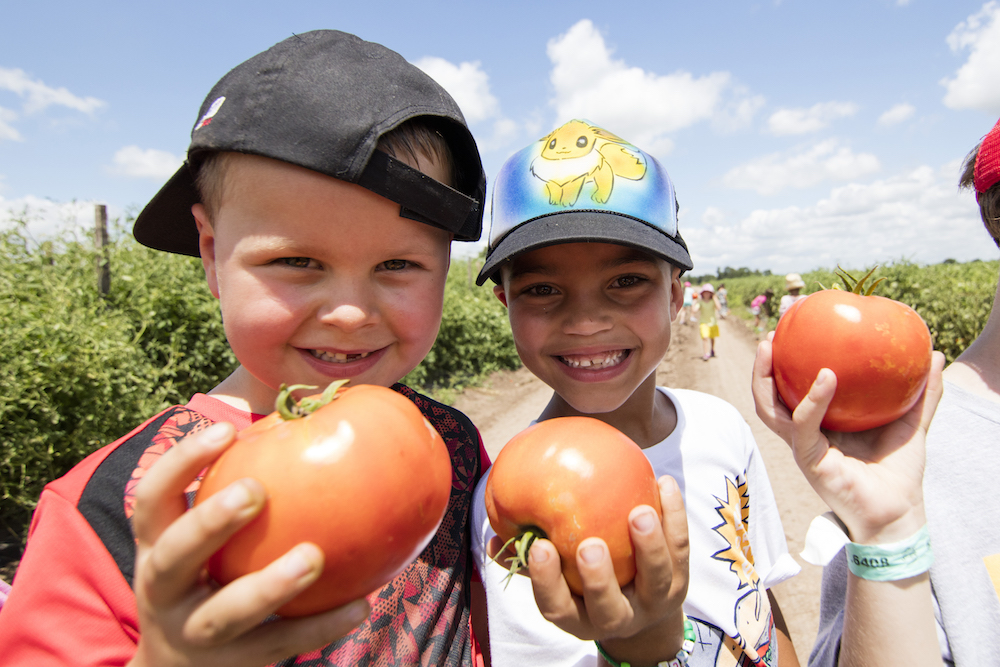 Once upon a time, we hosted an actual field trip to the farm. Photo by Casey Degman.
Once upon a time, we hosted an actual field trip to the farm. Photo by Casey Degman.
This is certainly a bizarre back to school season, to say the least. Are you feeling stretched for time as you adjust to this new school year? If so, check out the very simple meal plan we put together featuring late summer veggies. Feeling the need to provide some at-home learning opportunities for your littles? Even as adults, we’re constantly learning here on the farm, and there is no reason you can’t draw some inspiration from the wonders of the farm-life, too.
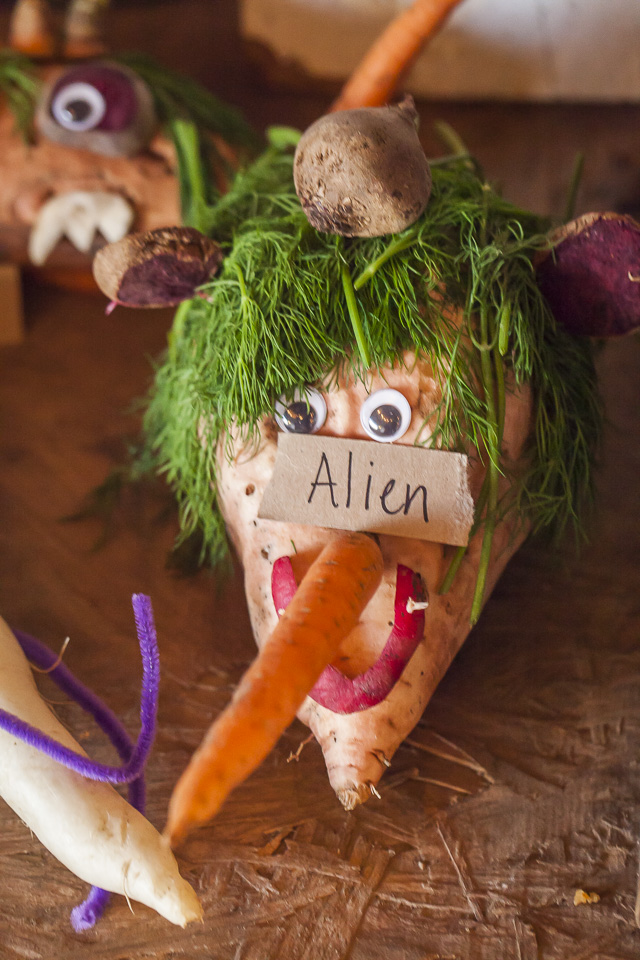 We fully endorse a bit of play with your food.
We fully endorse a bit of play with your food.
The number of free farm and ag-related educational materials on the internet is truly stunning. If you’re a seasoned home-school teacher, maybe you already have your favorite resources that cover farm-related topics. But we approached this idea as many of you might be - as a complete novice. And really, it was somewhat overwhelming. So, if you’re a parent reading this, we first and foremost applaud you, and secondly, we hope you are cutting yourself a big break. And maybe a slice of sweet potato pie ?
Without further ado, a JBG lesson plan:
SCIENCE: Is there any better illustration of the wonders of science and prowess of mother nature than planting a seed and having it turn into a vegetable-producing plant? If you have your own garden, you already know what to do. And if you’ve never grown a thing in your life, you can get started with this powerful science lesson using only a couple of pots, some soil, and some cool-weather vegetable seeds.
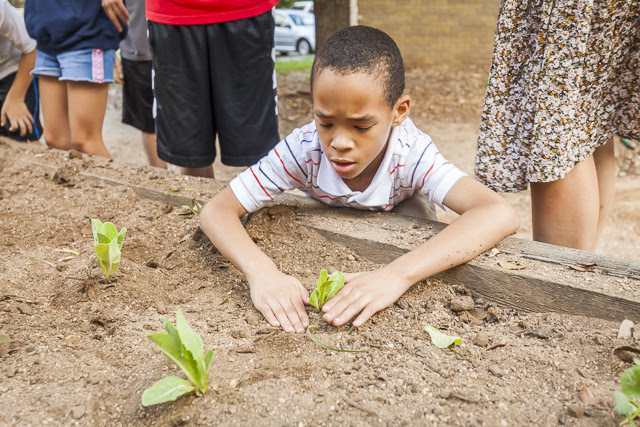 Lettuce is a great vegetable to plant in a teaching garden. It's easy to grow and easy to prepare.. just add ranch! Photo by Scott David Gordon.
Lettuce is a great vegetable to plant in a teaching garden. It's easy to grow and easy to prepare.. just add ranch! Photo by Scott David Gordon.
ALL AGES: When deciding what to plant in your garden, follow your farmers’ lead and use this Travis County seeding chart. Studying this chart with your kiddo is the perfect introduction to seasonality. If you checkout the chart, you’ll notice that now is the time to plant many fall vegetables. Germination is a vocabulary word worth teaching, but if you want to skip the seed portion of this lesson, most local gardening centers have cool-weather transplants that are ready to plop into the ground.
PRESCHOOL AND UP: To lay the groundwork for your gardening lesson, we enthusiastically recommend the book How Groundhog’s Garden Grew by Lynn Cherry. In this book, Little Groundhog learns how to grow his own vegetables (and stop eating the vegetables from his neighbor’s garden). Together with his animal friends, Little Groundhog leans about planting, tending to, harvesting, and even cooking a cornucopia of vegetables. You can watch a read-along of this book here. The illustrations are beautiful! Thanks to Growing Minds (an online educational resource) for suggesting this book. Their website has a ton of lesson plan ideas, also.
 We LOVE the illustrations in this book! Checkout the read along on Youtube!
We LOVE the illustrations in this book! Checkout the read along on Youtube!
GRADES 2-5: The folks at Whole Kids Foundation have put together this (free!) and comprehensive set of lessons to accompany a school garden. There are over 35 creative and cross-curricular lesson plans geared for grades Pre-K through 5 in this resource, and if you’re growing anything at home, this is an incredible collection of enrichment opportunities. One of our favorite lessons is on page 30 and is titled “Seed Packets, Things to Know Before You Grow”. This one hit close to home. If you intend to plant some seeds in the next couple of weeks, follow this lesson plan (and accompanying worksheets) to have your child understand things like germination rates, planting depth, planting spacing, days to maturity, and more. The lesson plan has great suggestions on adding some math into the experience… specifically some of the same calculations that professional farmers do all the time: If beets are planted 3 inches apart and my row is 90 feet long, how many beets will fit in a row? What about if there are two rows per bed? One bunch of beets equals three beets. How many beds would it take to fill 1,000 CSA shares with 1 bunch of beets each? And if I wanted to put the beets in CSA boxes on November 9th, what day would I have to plant the beets? You get the idea.
We can’t say enough about the Whole Kids Foundation resource; it’s one of our favorites that we came across. Another lesson that we really liked can be found on page 122: “A Food Critic in the Garden”. This plan is complete with a formidable vocabulary list for the next generation of food critics and food writers!
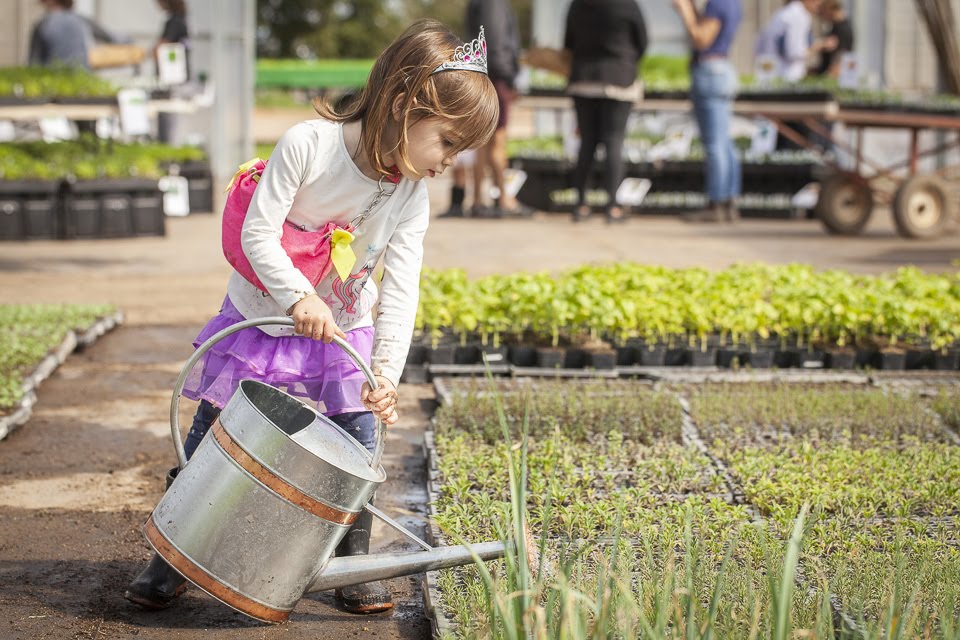
HISTORY: When researching varieties of seed to plant and try out at the farm, we inevitably end up doing a lot of historical research. Not only do particular varieties of a vegetable usually have an interesting origin story, but the domestication of the veggies themselves is the perfect portal to lessons in world history, trade, and the migration of peoples across our globe.
GRADES 5 AND UP: Have your kiddos help you unpack your next CSA share, and encourage them identify one (or all!) of the unfamiliar vegetables in the box. Research a vegetable’s history. When was it domesticated, and how did it get to North America? What other foods were transported with this vegetable and how did the vegetable change as it moved around? What are some ways to prepare the vegetable in the region where it originates? Page 175 of this PDF has a lesson plan titled “Food From Around the World” including a worksheet that makes this large topic a bit more digestible.
MATH: What better way to brush up on your math skills than to do some cooking? Both baking and pickling would lend themselves well to lessons on conversions, fractions, telling time and even shapes.
 Hectors beet muffins, pre-bake.
Hectors beet muffins, pre-bake.
ANY GRADE? Here is a great recipe for Hector’s Beet Muffins from the JBG Recipe Archive. The ingredients in this recipe are listed in milliliters, making this a great opportunity to practice conversions to more familiar teaspoon and tablespoon measurements.
No time to whip up some beet muffins? Here is a cute, seemingly-Italian (cartoon) chef named Tiggly who is teaching preschoolers some addition while making a kiwi and salami soup.
ART: We don’t see any reason you shouldn’t play a bit with your food. Before you store your farmers’ market haul or CSA box contents in the fridge, work with your child to create a large mandala-like design with all of the vegetables.
ALL AGES… ADULTS, TOO!: Spread your vegetables out on a large table cloth or sheet, painting patterns with your colorful haul. Consider getting some dinner prep completed and have our child chop some of your veggies into different shapes and sizes, revealing the vibrant colors inside. Pretend like you’re a farm photographer and get up high to capture the image (and please, email us the pic if you do!). Or, take this veggie play in a different direction and make veggie monsters. Vegetables, toothpicks, and maybe some wooden skewers are about all you need for this project. Set a station up (with some supervision if a knife is involved) and we promise your kiddo will know what to do. Here are some photos of JBG veggie monsters from seasons past for some inspiration. https://jbgorganic.com/blog/2018/11/jbg-fall-open-house-thanks-recap/ Bonus points if googly eyes are involved!
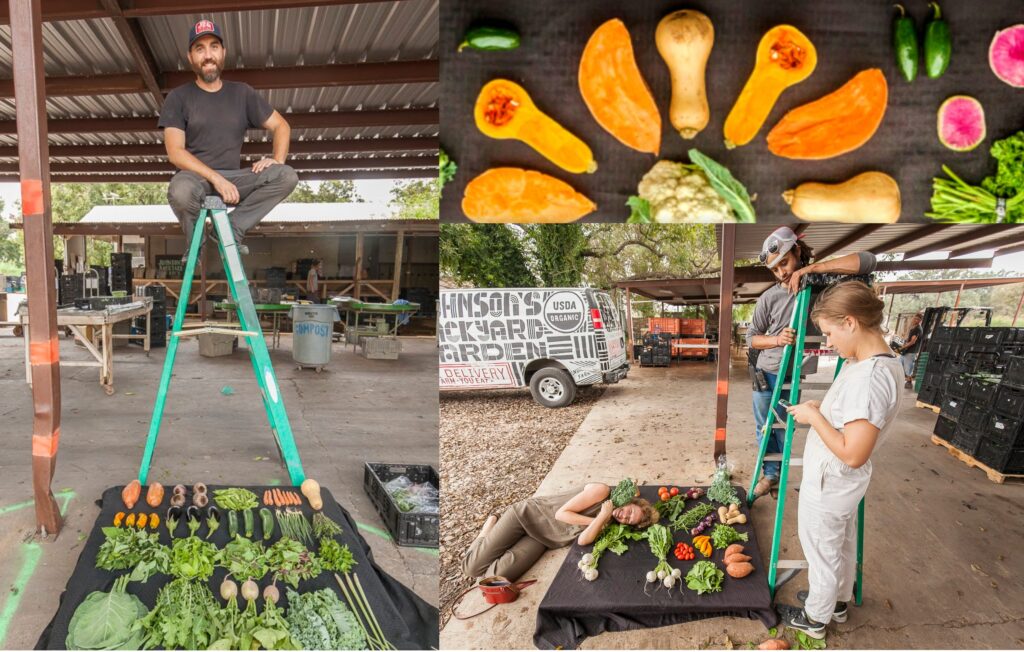 We certainly sneak in a bit of play with our work.
We certainly sneak in a bit of play with our work.
FIELD TRIP: Did you know that one of our Community Pickup Locations for our CSA boxes is actually at our Garfield (River Road) farm? This pickup is on Fridays from 11am to 2pm, and when you scoop up your box at the farm you’re more than welcome to stretch your legs and meander about the fields. Scout the fields, and get excited for upcoming crops! Adam, one of Garfield team members, is usually around to direct you a luscious patch of herbs that you’re welcome to pick a a bundle from. There is a mighty team of tractors and a motley group of trucks always in motion and there to behold. If you’d like to field trip out to the farm for your CSA share one week, simply shoot Faith an email a few days before your regularly scheduled box and she can make the switch. You can email Faith at farm@jbgorganic.com Protip: Wear mud boots if it’s been a rainy week, and make sure your GPS is directing you to our farm in Garfield - Google may lead you to our other location!
 Scoop up your CSA box and enjoy the wide open spaces our Garfield farm has to offer! Photo by Scott David Gordon.
Scoop up your CSA box and enjoy the wide open spaces our Garfield farm has to offer! Photo by Scott David Gordon.
CSA BOX CONTENTS WEEK OF SEPT 14
09/14/20 — Ada Broussard
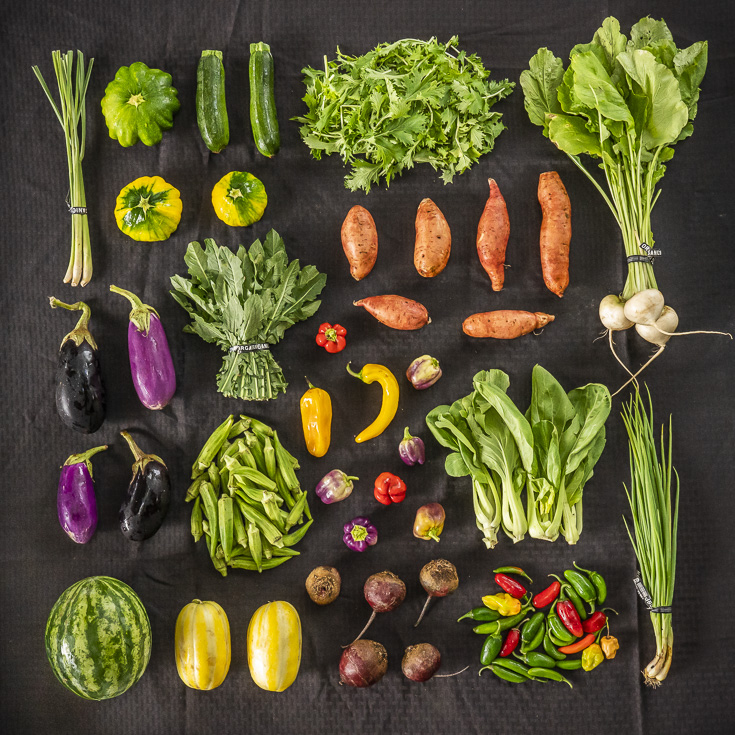 CSA Box Contents Week of Sept 14th
CSA Box Contents Week of Sept 14th
Large:
Beets
Bok Choy
Cucumber
Greens, Farmers Choice
Mizuna
Herb
Melon
Multiplying Onion
Hot Pepper Medley
Sweet Potato
Summer Squash
Turnip
CSA BOX CONTENTS WEEK SEPT 14
09/14/20 — Ada Broussard
 CSA Box Contents Week of Sept 14th
CSA Box Contents Week of Sept 14th
Large: Beets, Bok Choy, Cucumber, Farmers' Choice of Greens, Mizuna, Herb, Melon, Multiplying Onion, Hot Pepper Medley, Sweet Potato, Summer Squash, Turnip
Medium: Beets, Baby Bok Choy, Herb, Okra, Multiplying Onion, Hot Pepper Medley, Summer Squash, Turnip
Small: Bok Choy, Eggplant, Farmer's Choice of Greens, Herb, Sweet Peppers, Sweet Potato, Turnip
Individual: Baby Bok Choy, Farmer's Choice of Greens, Sweet Potato, Radish
NOW HIRING CSA COORDINATOR/OFFICE ADMINISTRATOR!
09/17/20 — Farm

Position Title: CSA Coordinator/Office Administrator Location: 9515 Hergotz Lane Department: CSA Reports to: Operations Manager
Position Summary: Our Hergotz location is the home to our main farm office, packing shed, and distribution hub. The Office Administrator is the backbone of our CSA customer service program and right hand of the delivery logistics. This individual is responsible for managing the farm’s main phone and e-mail communications and also for running bi-weekly payroll. This individual is also assist in overseeing: office operations, basic accounting, CSA sites, CSA delivery logistics, basic HR tasks, and merchandising. This position is one of considerable responsibility, and we’re looking for a real all-star: someone who is reliable, proactive, and enthusiastic about our mission.
Responsibilities
- Provide prompt and courteous replies to all farm e-mails, phone calls, and voicemails
- Assist occasional walk-in visitors to Hergotz office
- Communicate quality complaints to CSA Packing Manager and Barn Manager
- Prepare CSA labels, driver paperwork, and delivery routes daily
- Monitor and maintain inventory of add on items, merchandise, and office supplies
- Track new membership, referrals, and weekly delivery numbers
- Manage driver communications/schedules and track vehicle maintenance records
- Coordinate establishment of new CSA sites and maintain relationships with existing sites
- Manage and fulfill all online merchandise orders
- Coordinate fulfillment for annual bulk sales
- Assist with identifying and solving problems in CSA customer management software
- Assist in the coordination of CSA marketing and engagement campaigns
- Assist with bi-weekly payroll of all employees and process new employee paperwork
- Assist with driver and operations expenditure reports and other financial tasks
- Assist with HR duties including posting job descriptions and scheduling interviews
- Occasionally assist with running deliveries, errands, and other miscellaneous tasks as assigned by the Operations Manager
- Possess an interest in organic agriculture, as well as a willingness to learn
- Excellent customer service skills
- Excellent writing skills
- Excellent verbal communicator
- Proficiency in Microsoft and Google programs, and an overall proficiency in computer technology
- Ability to multi-task and problem solve
- Ability to adapt to high-stress environment
- Highly organized and detail-oriented
- Self-Motivated
- Positive attitude and interest in having fun while working hard
- Ability to prioritize tasks and balance friendliness with efficiency and focus
- Experience in accounting and payroll management
- Previous experience in an administrative role
- Experience with ADP or similar payroll systems
- Familiarity with organic agriculture and interest in local farming
- Experience in customer service and management
- Experience in administrative database management
Compensation and Benefits: Pay negotiable depending on experience. All full-time JBG employees also receive a weekly CSA share, eggs on a bi-weekly basis, and are eligible for our group health coverage.
Directions for Applying: Please send an email to jobs@jbgorganic.com with the following format. Following specific directions is the first way to impress us!
- Subject Line should read CSA Administrator
- Email body should be short & sweet - help us notice you! Ensure that it contains your contact information.
- Attach three documents to your email, ensuring that their file names are clear: 1) Cover Letter 2) Resume 3) List containing contact information of two professional references
The responsibilities & duties listed above are intended to communicate general priorities of this position, but should not be understood as an exhaustive list of all work requirements to be completed at JBG Organic. Farms require flexibility! We are committed to training, developing, and promoting from within the company based on performance.
JBG Organic provides equal employment opportunities (EEO) to all employees and applicants for employment without regard to race, color, religion, gender, sex, national origin, age, disability, genetics, marital status, or sexual orientation.
OTTOLENGHI'S EGGPLANT WITH GARLICKY BUTTERMILK YOGURT SAUCE
09/17/20 — Ada Broussard
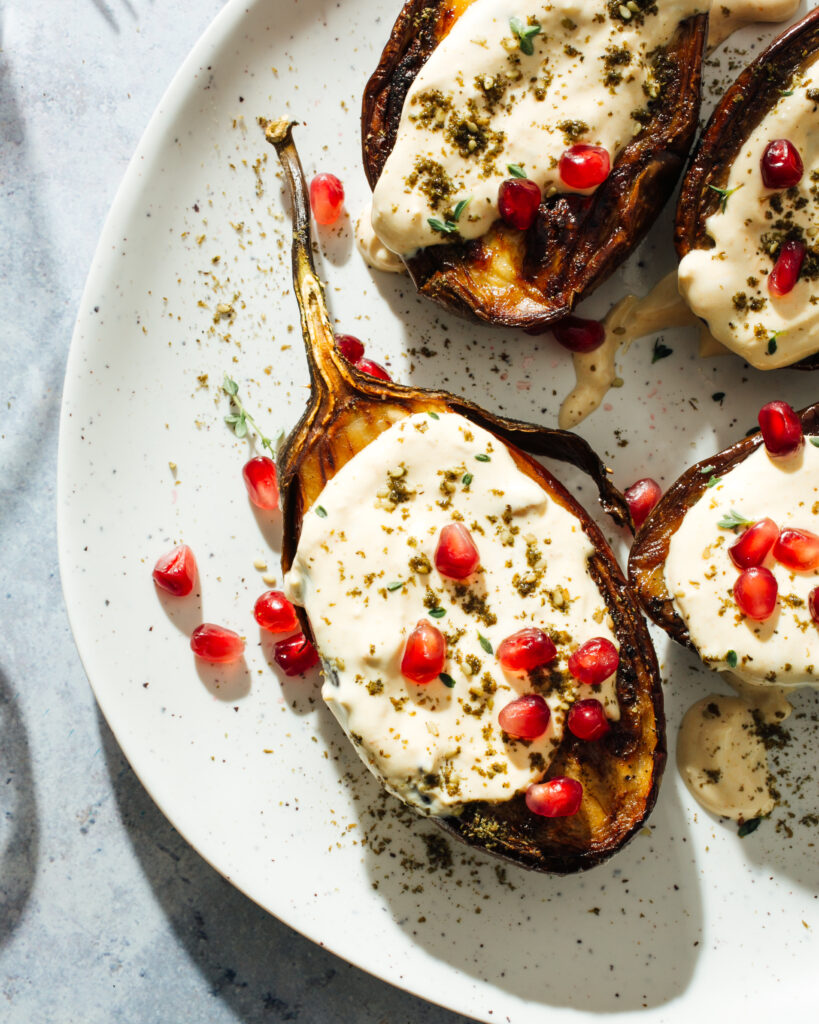 Photo by Mackenzie Smith Kelley. Recipe written by Yotam Ottolenghi, shared by Mackenzie.
Photo by Mackenzie Smith Kelley. Recipe written by Yotam Ottolenghi, shared by Mackenzie.
Ottolenghi's Eggplant with Garlicky Buttermilk Yogurt Sauce This recipe for slow-roasted eggplants and a garlicky buttermilk yogurt sauce is originally from Yotam Ottolenghi’s first cookbook, “Plenty: Vibrant Vegetable Recipes”. I have been making a similar version of this perfect-way-to-cook-an-eggplant since I first read this recipe back when the book was published in 2010. The original recipe calls for 2 large, long eggplants, but I have found that roasting smaller ones works just as well, though the cooking time should be adjusted based on the size and amount of eggplants you are roasting (smaller or less, reduce cooking time). The amount of olive oil may seem excessive, and as someone who has made this recipe for years, I had made it with less than ⅓ of a cup, and it still works, though the eggplant won't be quite as silky from all that olive oil. If you don’t have as much olive oil as the recipe calls for, do your best to make sure the incisions on the eggplant are absorbing some of the oil.
The buttermilk yogurt sauce is truly perfect as-is, but as a self-proclaimed lemon-head, I have convinced myself over the years that a teaspoon or two of lemon zest belongs there, too. And recently, when I didn’t have a single clove of fresh garlic in my kitchen (gasp, I know), I stirred in a spoonful of roasted garlic achaar, which satisfied the need for garlic and brought even more flavor to the table.
Ingredients
5-6 small eggplants or 2 large, long ones
1/3 cup olive oil
1 1/2 tsp lemon thyme leaves, plus a few whole sprigs to garnish
Maldon sea salt and black pepper
1 pomegranate
1 tsp za'atar
Sauce:
9 tbsp buttermilk
1/2 cup Greek yogurt
1 1/2 tbsp olive oil, plus a drizzle to finish
1 small garlic clove, crushed
1-2 teaspoons of lemon zest
Pinch of salt
Preparation
Preheat the oven to 200°F. Cut the eggplants in half lengthways, cutting straight through the green stalk (the stalk is for the look; don't eat it). Use a small sharp knife to make three or four parallel incisions in the cut side of each eggplant half, without cutting through to the skin. Repeat at a 45-degree angle to get a diamond-shaped pattern.
Place the eggplant halves, cut-side up, on a baking sheet lined with parchment paper. Brush them with olive oil—keep on brushing until all of the oil has been absorbed by the flesh. Sprinkle with the lemon thyme leaves and some salt and pepper. Roast for 35 to 40 minutes, at which point the flesh should be soft, flavorful and nicely browned. Remove from the oven and allow to cool down completely
While the eggplants are in the oven, cut the pomegranate into two horizontally. Hold one half over a bowl, with the cut side against your palm, and use the back of a wooden spoon or a rolling pin to gently knock on the pomegranate skin. Continue beating with increasing power until the seeds start coming out naturally and falling through your fingers into the bowl. Once all are there, sift through the seeds to remove any bits of white skin or membrane.
To make the sauce. Whisk together all of the ingredients. Taste for seasoning, then keep cold until needed.
To serve, spoon plenty of buttermilk sauce over the eggplant halves without covering the stalks. Sprinkle za'atar and plenty of pomegranate seeds on top and garnish with lemon thyme. Finish with a drizzle of olive oil.
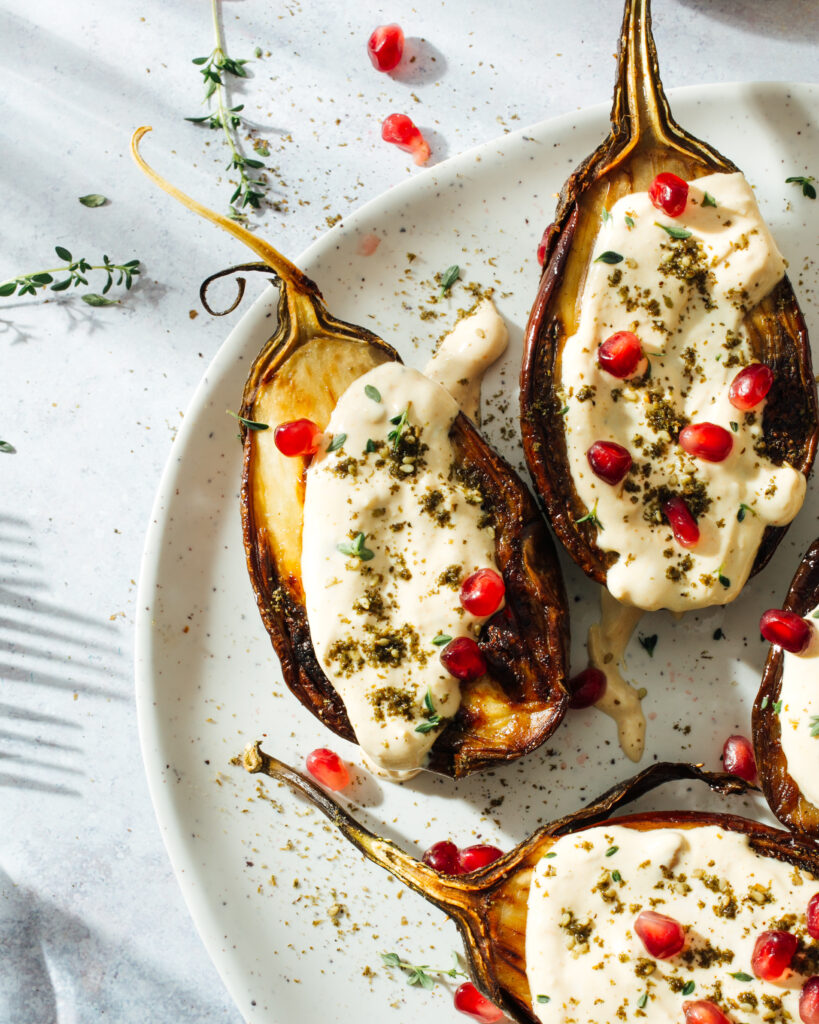 Photo by Mackenzie Smith.
Photo by Mackenzie Smith.WEIRD FOOD NEWS
09/18/20 — Ada Broussard
Hello! You made it to Friday, and for your reward we’re sharing some food news we’ve harvested from across the internet. Some of it’s salty, some sweet, and most of it is arguably not very important. But entertaining? Yes! It’s entertaining. As a small farm, we interact with just a tiny sliver of the food system including a modest number of restaurants, a handful of local grocery stores, and of course directly with our wonderful customers, most of whom live in the same city in which we farm. Our vegetables get their start and their finish all within our localized food system and Austin-based supply chain. For this reason, it’s easy to forget about the very weird and wide world of food that exists beyond our rows of kale local delivery routes . But that doesn’t mean this news isn't interesting to us. So this week, we thought we share the weird food stories that we're reading and wondering about.
![]() The original watermelon ham was conceived at Ducks Eatery in New York City. Photo taken from their Instagram.
The original watermelon ham was conceived at Ducks Eatery in New York City. Photo taken from their Instagram.
![]() Photo courtesy of The Atlantic. The experimental archaeologist Farrell Monaco uses ancient Roman baking techniques to re-create classic breads, such as the panis quadratus.. Photo by FARRELL MONACO.
Photo courtesy of The Atlantic. The experimental archaeologist Farrell Monaco uses ancient Roman baking techniques to re-create classic breads, such as the panis quadratus.. Photo by FARRELL MONACO.
![]() Photo from the original article, as seen in Mordern Farmer.
Photo from the original article, as seen in Mordern Farmer.
![]() Photo courtesy of C4/LOVE PRODUCTIONS/MARK BOURDILLON
Photo courtesy of C4/LOVE PRODUCTIONS/MARK BOURDILLON
![]() Pepsi's new sleep aid drink is called Driftwell.
Pepsi's new sleep aid drink is called Driftwell.
![]() Mosa Meat "clean" hamburger MOSA MEAT
Mosa Meat "clean" hamburger MOSA MEAT
![]() The display at Central Market Westgate is beautiful! Just look at those pots swimming in habaneros!
The display at Central Market Westgate is beautiful! Just look at those pots swimming in habaneros!
![]() It's so fun to see our branded boxes displayed so prominently! Makes us very proud! Thanks, Central Market!
It's so fun to see our branded boxes displayed so prominently! Makes us very proud! Thanks, Central Market!
![]() At Central Market on Lamar, there is this very cute cartoon of Farmer Brenton. How do we know it's him? It's wearing the Brenton uniform! Denim shirt and green JBG hat.
At Central Market on Lamar, there is this very cute cartoon of Farmer Brenton. How do we know it's him? It's wearing the Brenton uniform! Denim shirt and green JBG hat.
1. "Hot Watermelon is Unlikely. That Doesn’t Mean it’s Wrong."
Here at the farm, we eat watermelon raw. Sometimes, it’s still warm with field heat garnered from the sun... but this isn’t the type of hot watermelon this article is talking about. Apparently, people are taking the juicy fruit and turning it into smoked hams. And burgers. And steaks. If this sounds like you’re thing, by all means fire up the smoker, set aside 8+ hours, and let us know how it goes. Watermelon ham how-to video here, full article about hot watermelon here.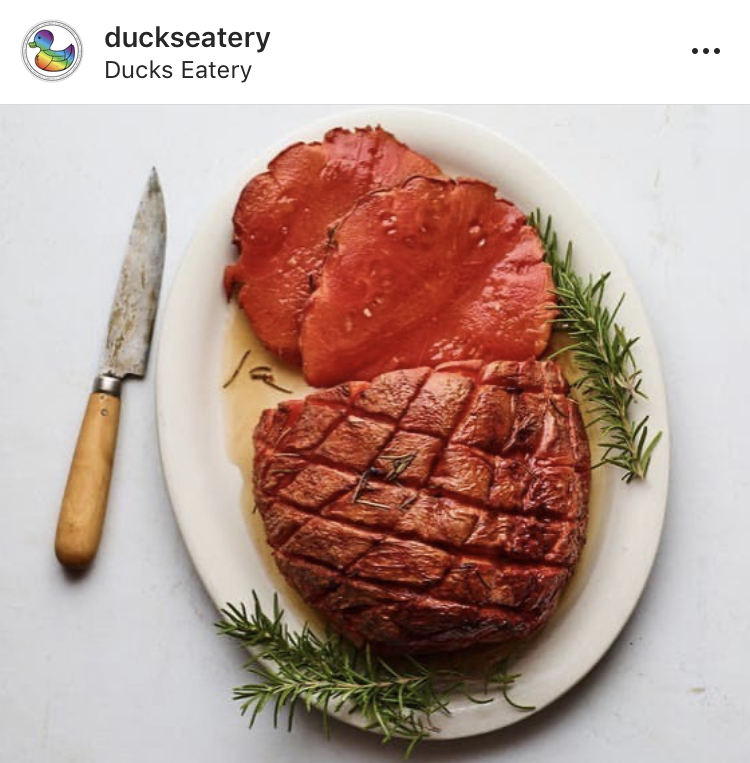 The original watermelon ham was conceived at Ducks Eatery in New York City. Photo taken from their Instagram.
The original watermelon ham was conceived at Ducks Eatery in New York City. Photo taken from their Instagram.
2. "How an archaeologist and the creator of the Xbox brought an ancient Egyptian sourdough starter back to life."
Seamus Blackley, best known for creating the Xbox, took the quarantine sourdough craze to a new level when he baked a loaf of bread using 4,000 year old yeast extracted from chambers buried underneath the temple of Pharaoh Mentuhotep II. Seamus wasn’t the only archaeologists exploring ancient baking methods during quarantine, and there were even online classes where you could learn to bake like a 1st century Roman. Read the full story here. Photo courtesy of The Atlantic. The experimental archaeologist Farrell Monaco uses ancient Roman baking techniques to re-create classic breads, such as the panis quadratus.. Photo by FARRELL MONACO.
Photo courtesy of The Atlantic. The experimental archaeologist Farrell Monaco uses ancient Roman baking techniques to re-create classic breads, such as the panis quadratus.. Photo by FARRELL MONACO.
3. "Painting Eyes on Cows’ Butts Can Scare Away Predators"
How could we not include this click bait article from Modern Farmer? The headline, and the butt eyes, pretty much say it all.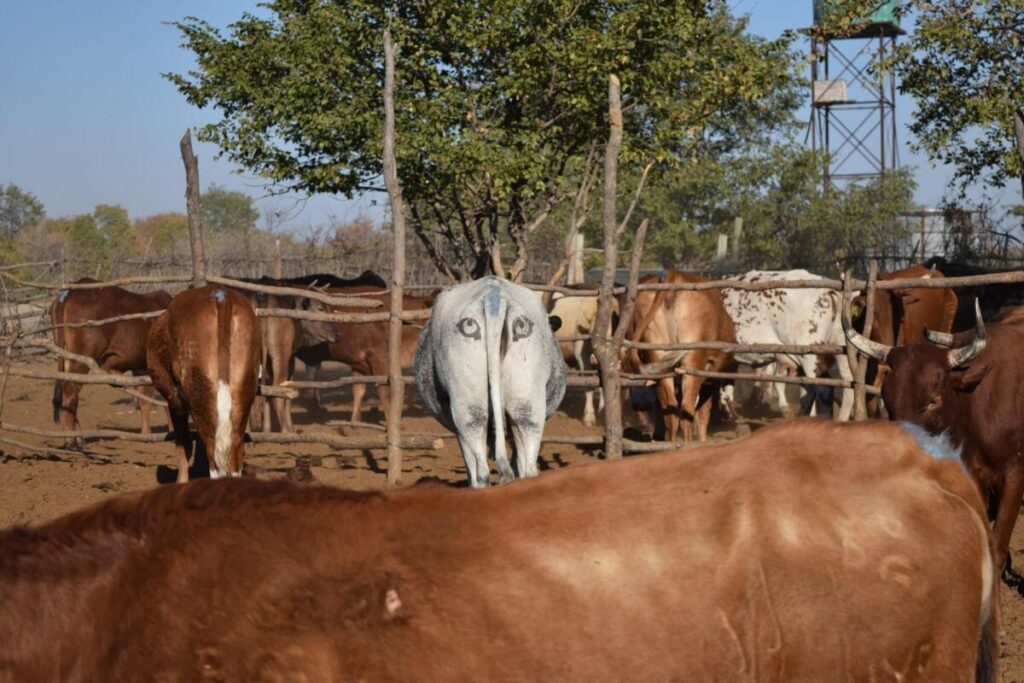 Photo from the original article, as seen in Mordern Farmer.
Photo from the original article, as seen in Mordern Farmer.
4. "I’m Surviving Quarantine by Cooking Gourmet Stoner Food for My 5-Year-Old Why my new kitchen mantra is #StonerFoodsOfTheApocalypse."
Okay, this isn’t really a news story, but we really loved this essay by Ivy Pochoda about how she’s cooking her 5 years old anything she wants, which happens to be lots of resourceful and creative combinations of ingredients. “while others are peddling black-market sourdough starter, proofing croissants, and making their own everything bagels, I’ve taken a track that provides immediate gratification, goofy joy, and has ushered in an era of peaceful meals.” See all the stoner food, here.5. "A New Season of ‘The Great British Bakeoff’ Is Coming This Month."
Are you a seasoned fan of this hit British baking show? Or perhaps you’ve never heard the declaration to “Ready, Set, Bake”! Either way, you should check out this new season of delightful home-bakers as they happily kneed and proof for the esteemed title of Star Baker. Apparently, this season was filmed during the pandemic and contestants and crew were in a baking bubble, which undoubtedly smelled of warmed cinnamon and buttery yeast rolls. Photo courtesy of C4/LOVE PRODUCTIONS/MARK BOURDILLON
Photo courtesy of C4/LOVE PRODUCTIONS/MARK BOURDILLON
6. "In 2020, Soda Is A Sleep Aid & Water Is Caffeinated, Because Of Course"
Two new products (and types of products) hit the shelves this week: soda that will put you to sleep, and water that will keep you up. Apparently, coffee and plain ole’ H20 aren’t doing the trick for consumers who are both anxious and sleepy all at once. Pepsi's new sleep aid drink is called Driftwell.
Pepsi's new sleep aid drink is called Driftwell.
7. "Is Cultured Meat The Answer To The World's Meat Problem?"
Promises of technology that can produce cultured meat isn’t exactly breaking news, but it’s weird food news, to be sure. Through this process, meat is grown using animal cells, not in a barnyard but in a high-tech laboratory. The first lab-grown burger was made in 2013, with the meat costing an estimated $1.2 million per pound. Advances in the production process are happening every day, and researchers hope that eventually the technology will catch up enough to create a lab-burger that rivals a regular (?) burger in price. But what about taste? Read the full story here. Mosa Meat "clean" hamburger MOSA MEAT
Mosa Meat "clean" hamburger MOSA MEAT
8. "Costco’s Wine Advent Calendar Is Back And Features Wine From All Over The World"
Somehow, we’ve reached that moment in the year when store windows and grocery shelves begin to hint at the holidays to come. Costco developed a wine advent calendar that features wines from all over the world, and apparently it was a smash. For those of you eager to begin your holiday shopping (ha!), get thyself to Costco before this best-seller is sold out.9. "A.I. Robot Serves Customers At Seoul Restaurant."
“A trolley-like robot is delivering food to customers at a restaurant in Seoul, in order to minimize human contact and help ensure social distancing.” Yep. You need see this robot in action for full the full Jetson experience. Full story and video here.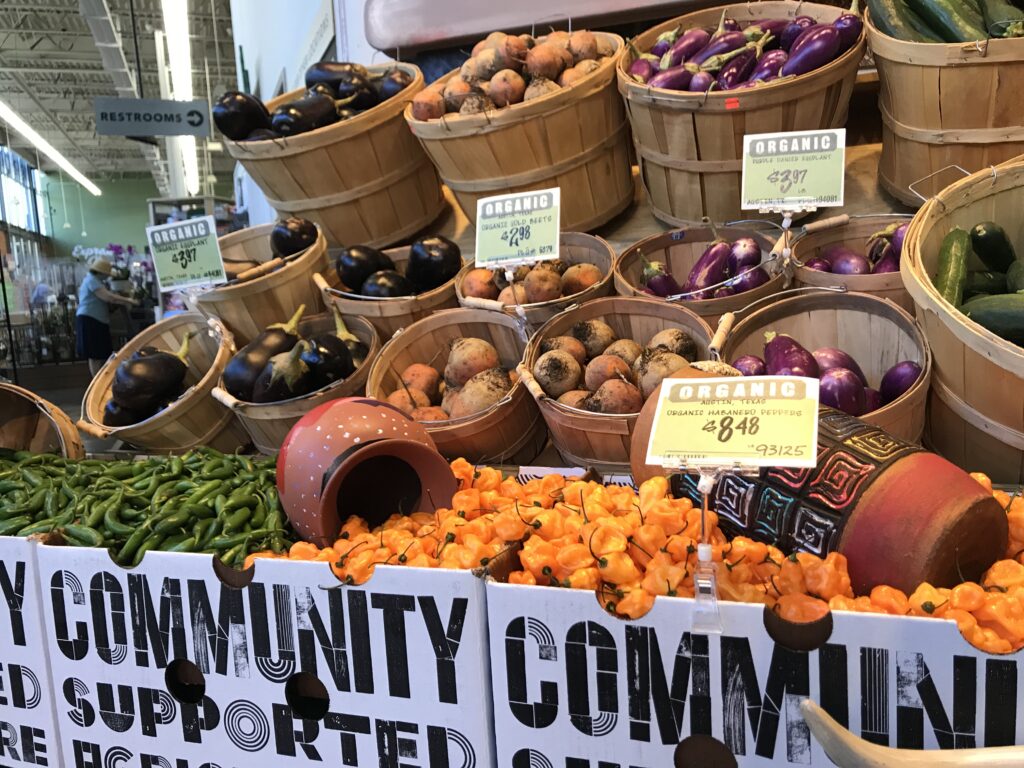 The display at Central Market Westgate is beautiful! Just look at those pots swimming in habaneros!
The display at Central Market Westgate is beautiful! Just look at those pots swimming in habaneros!
10. Central Market Presents Home Sweet Home Grown: Texas Farmers Market Week Sept. 16 - Oct. 6
Well, we couldn't help but include some local news that isn't necessarily weird, but does involve our veggies :) Central Market is currently running a special on our produce as a part of a two week promotion featuring Texas-made products. Both the Westgate and Lamar locations have beautiful displays of JBG produce including current crops like eggplant, habaneros, zucchini, beets, and more. It really feels like a farmers’ market in there, and there are tons of Texas-made and grown products to marvel. We first delivered veggies to Central Market in 2010 - about five cases of product. Over 10 years later, and Central Market has grown into one of our best grocery partners. We usually deliver upwards of 50 cases a week! Both the Westgate and Lamar locations in Austin regularly carry JBG produce, but the current selection is a stunner! Checkout the beautiful displays below! We can’t tell you how exciting it is for us to see our vegetables and our branded boxes displayed so prominently and beautifully at a local grocery store.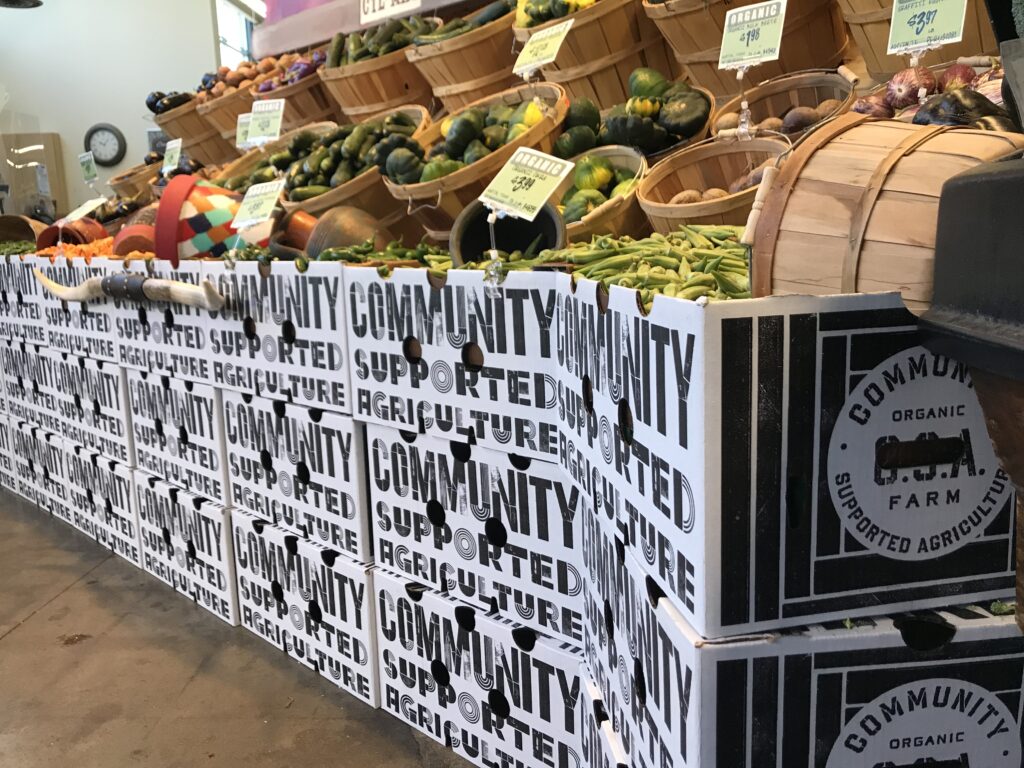 It's so fun to see our branded boxes displayed so prominently! Makes us very proud! Thanks, Central Market!
It's so fun to see our branded boxes displayed so prominently! Makes us very proud! Thanks, Central Market!
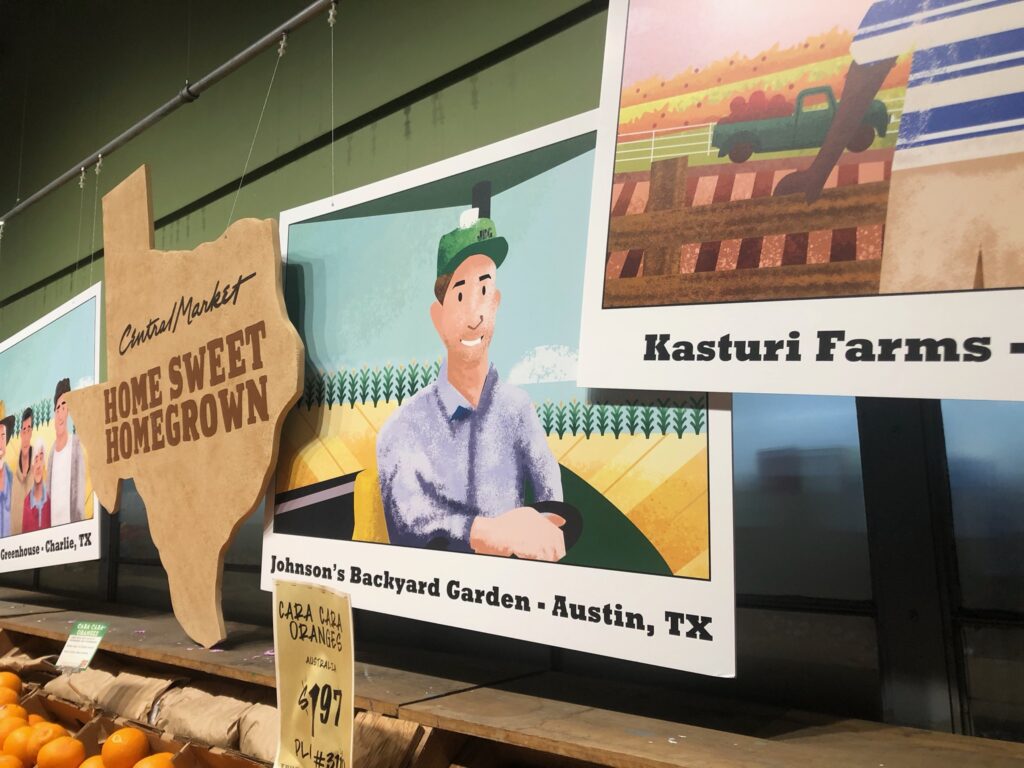 At Central Market on Lamar, there is this very cute cartoon of Farmer Brenton. How do we know it's him? It's wearing the Brenton uniform! Denim shirt and green JBG hat.
At Central Market on Lamar, there is this very cute cartoon of Farmer Brenton. How do we know it's him? It's wearing the Brenton uniform! Denim shirt and green JBG hat.
PHOTOS FROM THE FARM: 9.18.20
09/18/20 — Ada Broussard
Things at the farm are running like a well-oiled tractor. Scott captured happenings at both our Hergotz Packing Shed as well as our Garfield farm. Planning and planting, planting and planning. Late summer plantings of crops like okra and squash are dripping in fruit, and cool-season transplants like kohlrabi and cabbage are being planted everyday, all day. We're gearing up for fall, to be sure!
![]() Andrew and the CSA crew packing peppers. Photo by Scott David Gordon.
Andrew and the CSA crew packing peppers. Photo by Scott David Gordon.
![]() Sweet peppers, all the colors of the rainbow! Photo by Scott David Gordon.
Sweet peppers, all the colors of the rainbow! Photo by Scott David Gordon.
![]() Delivery driver meeting and training. Photo by Scott David Gordon.
Delivery driver meeting and training. Photo by Scott David Gordon.
![]() Photo by Scott David Gordon.
Photo by Scott David Gordon.
![]() Farmer Tracy leading the driver training, pictured in front of our breakroom. Do you spy the skateboard? Photo by Scott David Gordon.
Farmer Tracy leading the driver training, pictured in front of our breakroom. Do you spy the skateboard? Photo by Scott David Gordon.
![]() Transplants hardening off on the back of these flatbed trailers, soon to be planted! Photo by Scott David Gordon.
Transplants hardening off on the back of these flatbed trailers, soon to be planted! Photo by Scott David Gordon.
![]() Our late summer plantings of okra are looking particularly beautiful! Photo by Scott David Gordon.
Our late summer plantings of okra are looking particularly beautiful! Photo by Scott David Gordon.
![]() Squash, too! Photo by Scott David Gordon.
Squash, too! Photo by Scott David Gordon.
![]() Patty pan squash in its infancy. Photo by Scott David Gordon.
Patty pan squash in its infancy. Photo by Scott David Gordon.
![]() Green onions for days! Photo by Scott David Gordon.
Green onions for days! Photo by Scott David Gordon.
![]() One of the most versatile vegetables we grow, to be sure. Photo by Scott David Gordon.
One of the most versatile vegetables we grow, to be sure. Photo by Scott David Gordon.
![]() Holes punches, kohlrabi planted. Photo by Scott David Gordon.
Holes punches, kohlrabi planted. Photo by Scott David Gordon.
![]() A carpet of transplants by the satsuma trees. Photo by Scott David Gordon.
A carpet of transplants by the satsuma trees. Photo by Scott David Gordon.
![]() Giana, our greenhouse manager, is in her busiest season. Photo by Scott David Gordon.
Giana, our greenhouse manager, is in her busiest season. Photo by Scott David Gordon.
![]() Anna checking the transplanting going on behind her. Photo by Scott David Gordon.
Anna checking the transplanting going on behind her. Photo by Scott David Gordon.
![]()
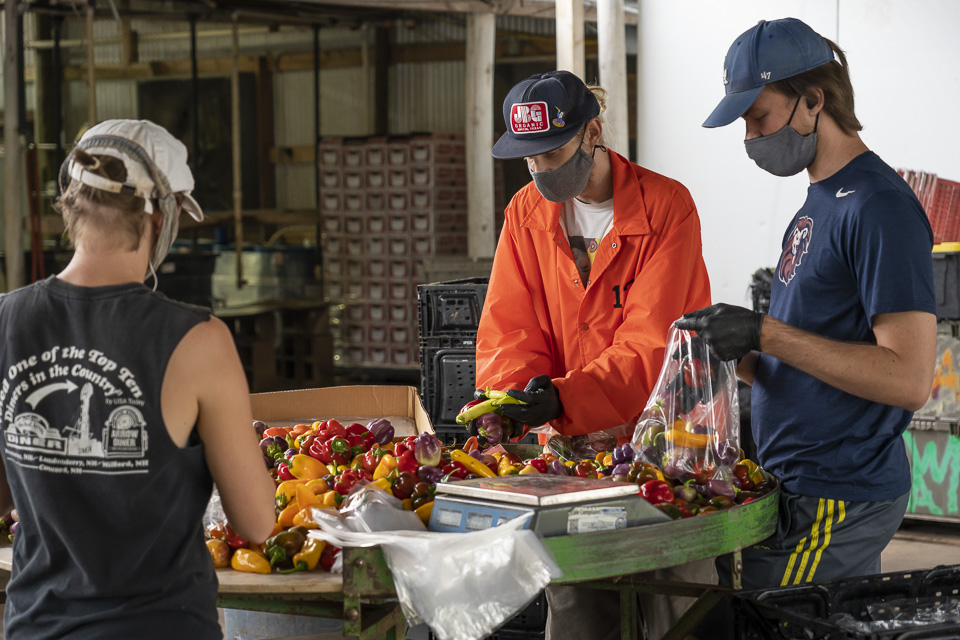 Andrew and the CSA crew packing peppers. Photo by Scott David Gordon.
Andrew and the CSA crew packing peppers. Photo by Scott David Gordon.
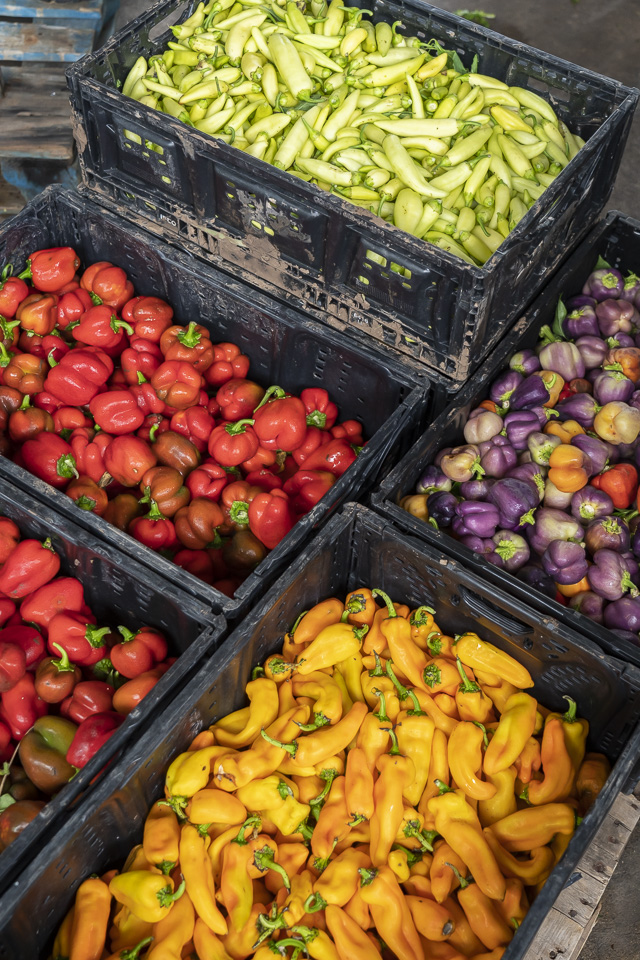 Sweet peppers, all the colors of the rainbow! Photo by Scott David Gordon.
Sweet peppers, all the colors of the rainbow! Photo by Scott David Gordon.
 Delivery driver meeting and training. Photo by Scott David Gordon.
Delivery driver meeting and training. Photo by Scott David Gordon.
 Photo by Scott David Gordon.
Photo by Scott David Gordon.
 Farmer Tracy leading the driver training, pictured in front of our breakroom. Do you spy the skateboard? Photo by Scott David Gordon.
Farmer Tracy leading the driver training, pictured in front of our breakroom. Do you spy the skateboard? Photo by Scott David Gordon.
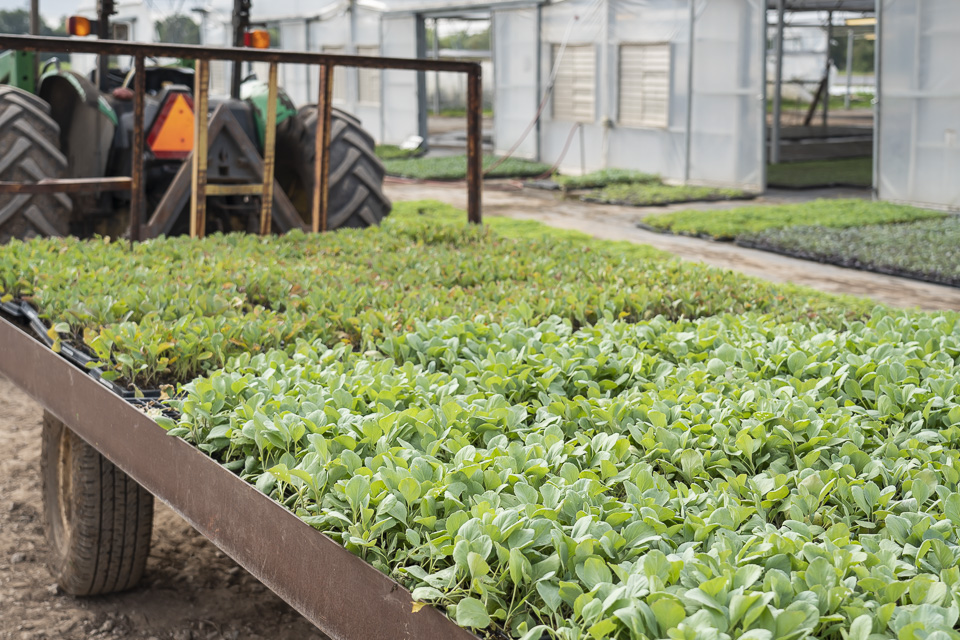 Transplants hardening off on the back of these flatbed trailers, soon to be planted! Photo by Scott David Gordon.
Transplants hardening off on the back of these flatbed trailers, soon to be planted! Photo by Scott David Gordon.
 Our late summer plantings of okra are looking particularly beautiful! Photo by Scott David Gordon.
Our late summer plantings of okra are looking particularly beautiful! Photo by Scott David Gordon.
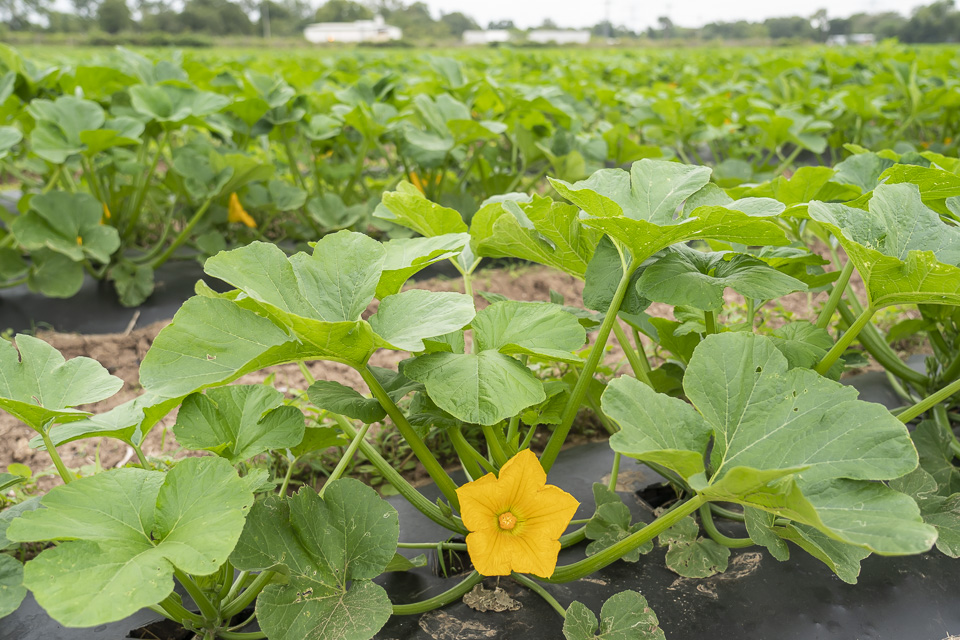 Squash, too! Photo by Scott David Gordon.
Squash, too! Photo by Scott David Gordon.
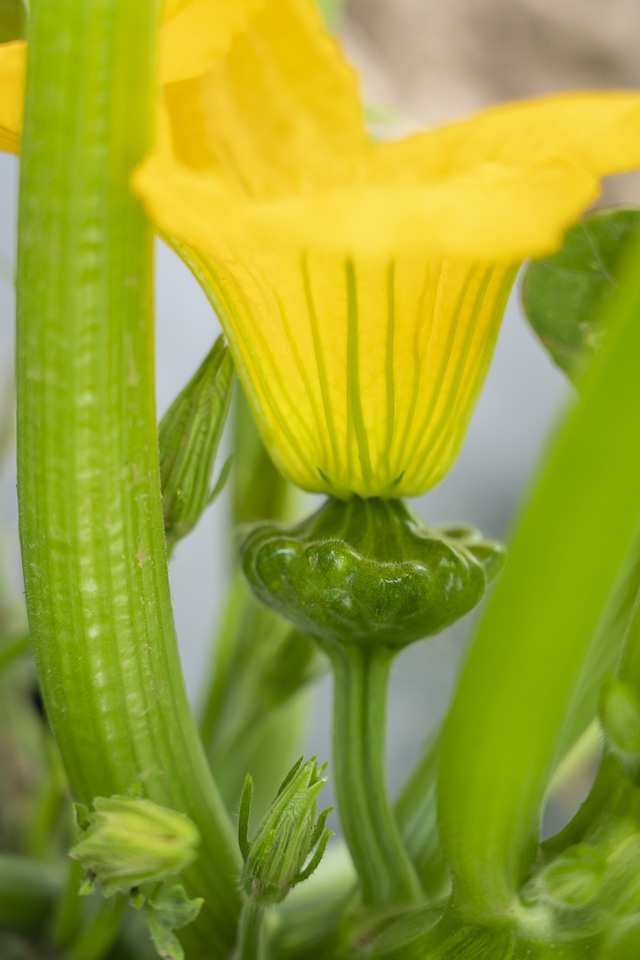 Patty pan squash in its infancy. Photo by Scott David Gordon.
Patty pan squash in its infancy. Photo by Scott David Gordon.
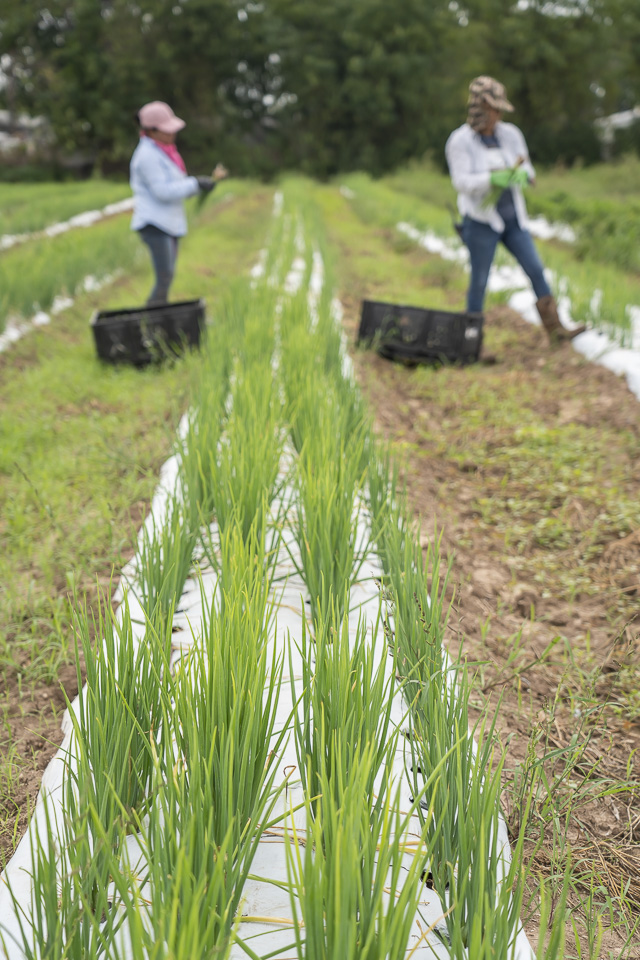 Green onions for days! Photo by Scott David Gordon.
Green onions for days! Photo by Scott David Gordon.
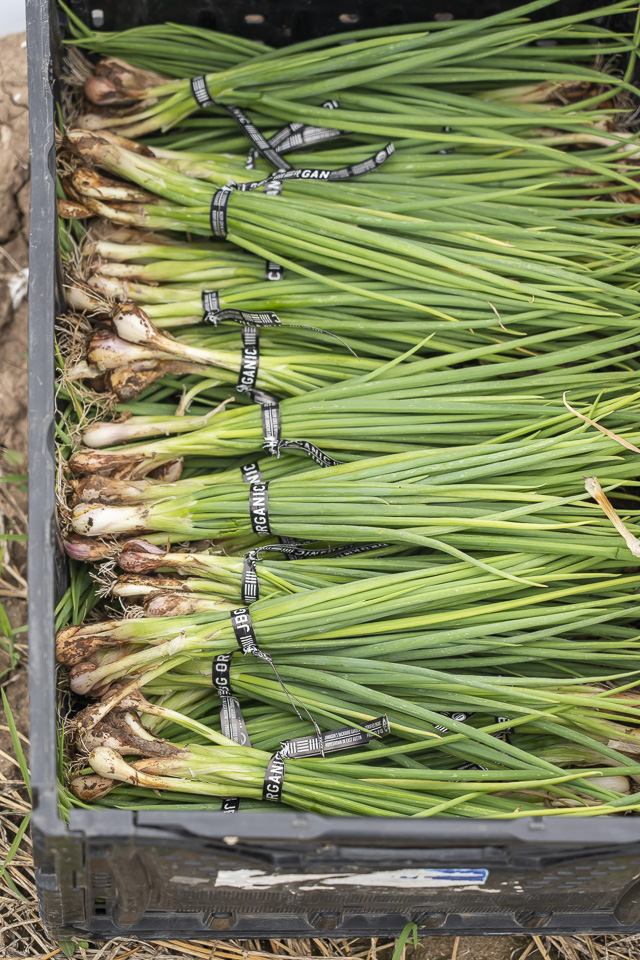 One of the most versatile vegetables we grow, to be sure. Photo by Scott David Gordon.
One of the most versatile vegetables we grow, to be sure. Photo by Scott David Gordon.
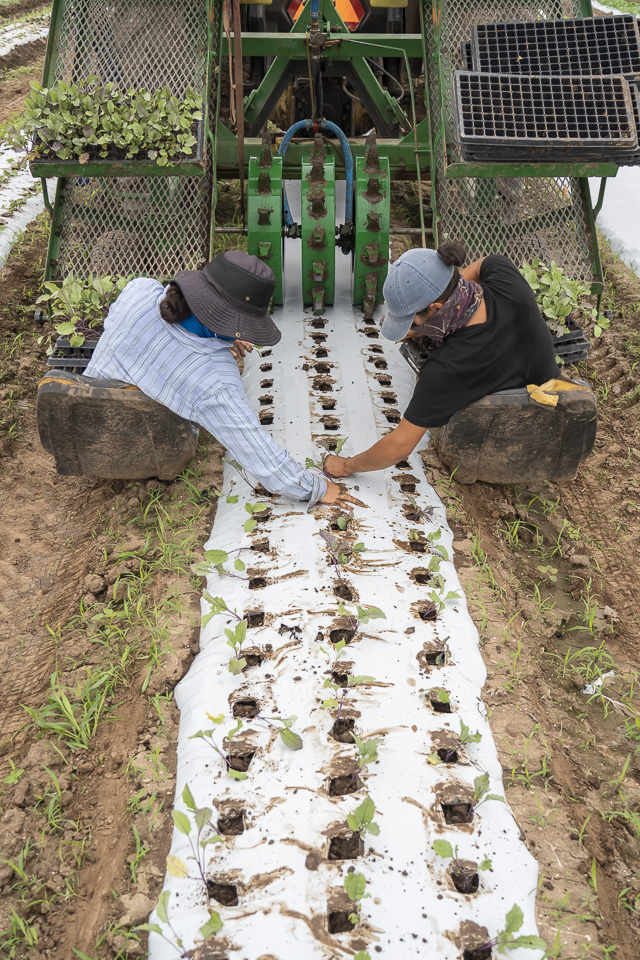 Holes punches, kohlrabi planted. Photo by Scott David Gordon.
Holes punches, kohlrabi planted. Photo by Scott David Gordon.
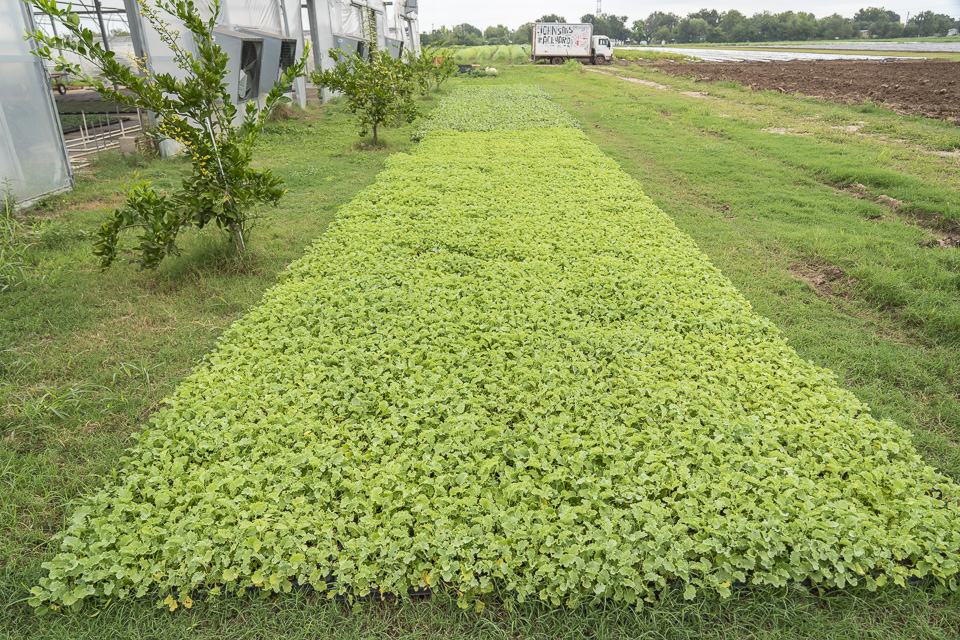 A carpet of transplants by the satsuma trees. Photo by Scott David Gordon.
A carpet of transplants by the satsuma trees. Photo by Scott David Gordon.
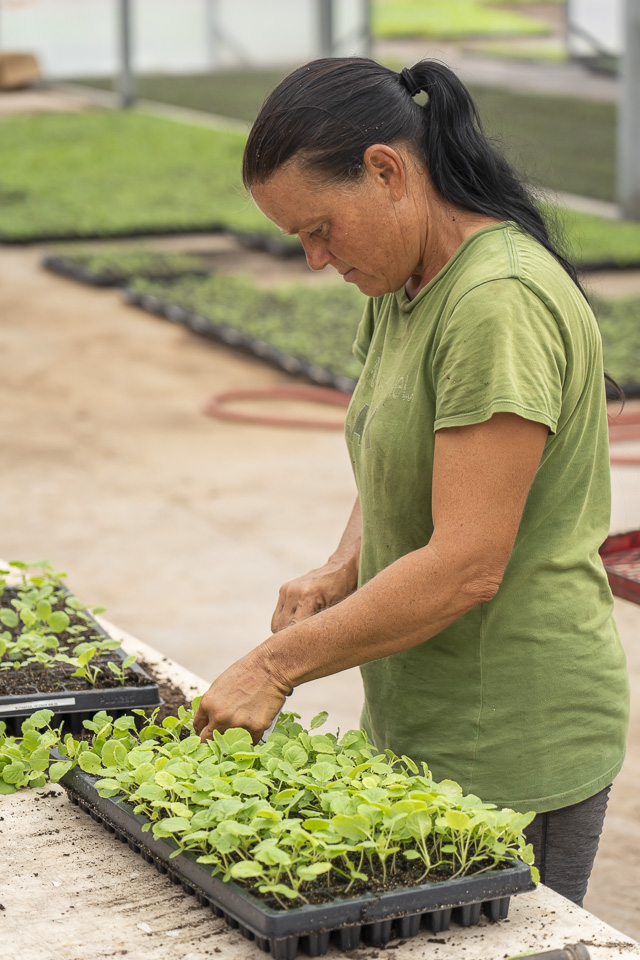 Giana, our greenhouse manager, is in her busiest season. Photo by Scott David Gordon.
Giana, our greenhouse manager, is in her busiest season. Photo by Scott David Gordon.
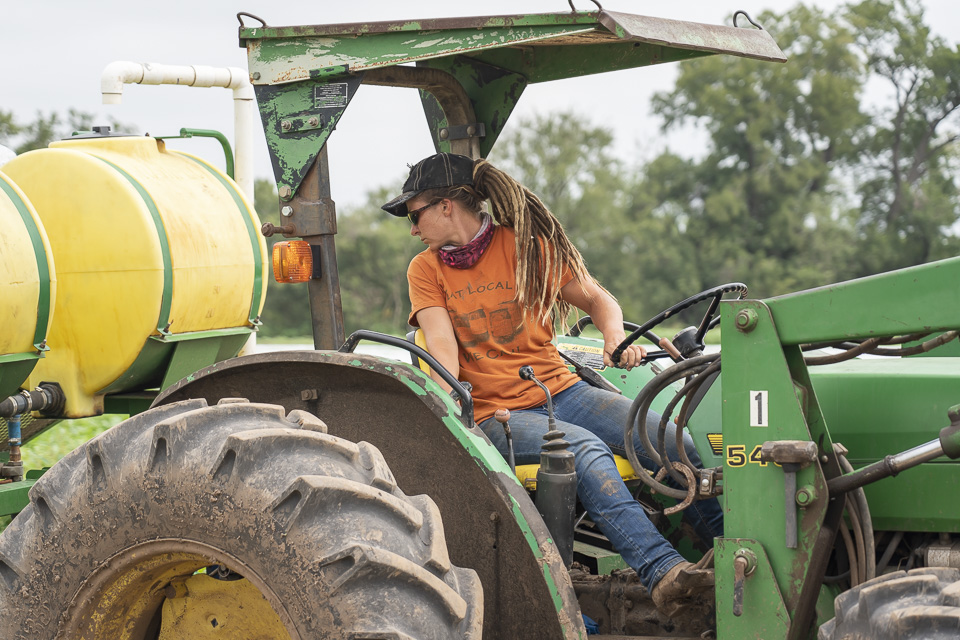 Anna checking the transplanting going on behind her. Photo by Scott David Gordon.
Anna checking the transplanting going on behind her. Photo by Scott David Gordon.

CSA CONTENTS WEEK OF SEPT 21ST
09/18/20 — Ada Broussard
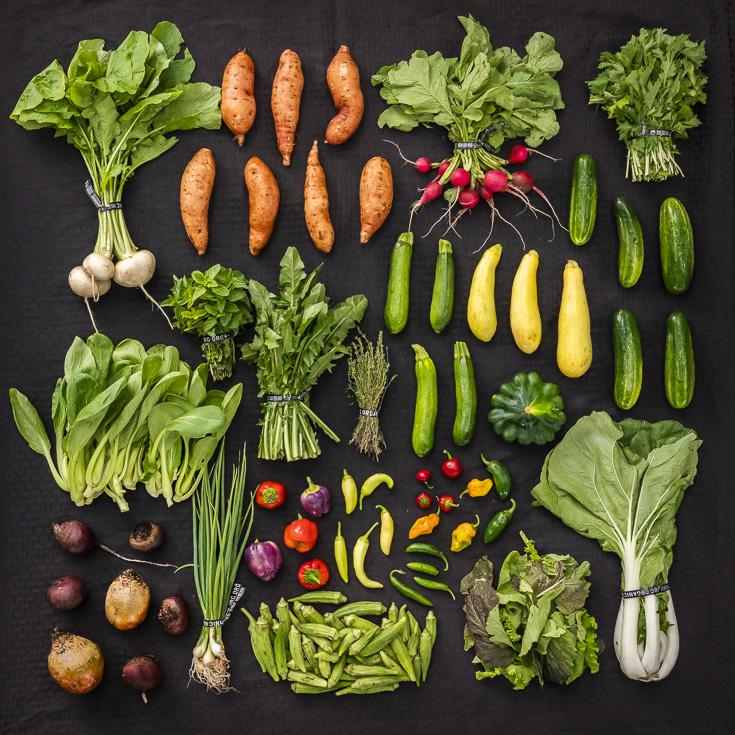 CSA Box Contents Week of Sept 21st
CSA Box Contents Week of Sept 21st
Large: Bok Choy Cucumber Greens Mustard Greens Herb Okra Multiplying Onion Sweet Pepper Sweet Potato Radish Summer Squash White Japanese Turnip
CSA CONTENTS WEEK OF SEPT 21ST
09/18/20 — Ada Broussard
 CSA Box Contents Week of Sept 21st
CSA Box Contents Week of Sept 21st
Individual: Okra, Hot Pepper Medley, Sweet Potato, Summer Squash, White Japanese Turnip Small: Greens, Herb, Okra, Sweet Potato, Radish, Summer Squash, White Japanese Turnip Medium: Beets, Farmers' Choice, Greens, Herb, Okra, Multiplying Onion, Sweet Peppers, Radish, Summer Squash, White Japanese Turnip Large: Bok Choy, Cucumber, Greens, Mustard Greens, Herb, Okra, Multiplying Onion, Sweet Pepper, Sweet Potato, Radish, Summer Squash, White Japanese Turnip
GRAMMA SANTIS ITALIAN STUFFED EGGPLANT
09/22/20 — Ada Broussard
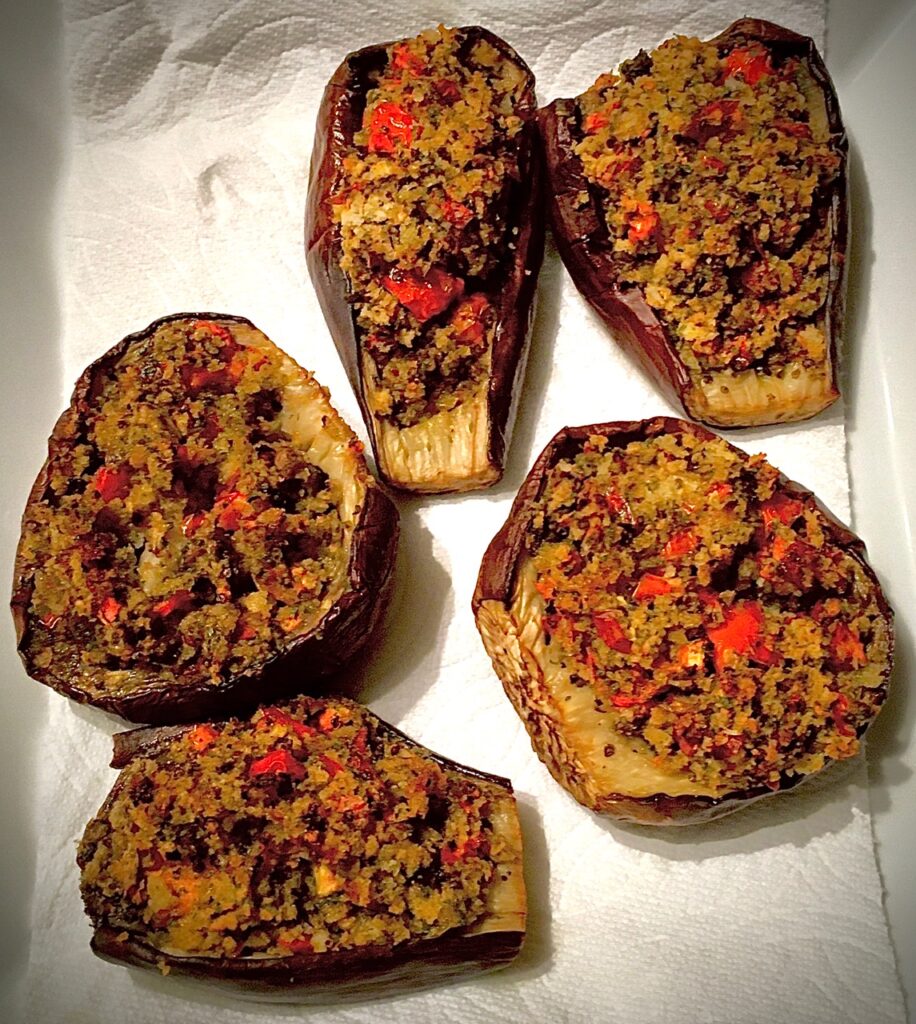
This recipe and photo was submitted by a CSA Member Melanie W. Thanks, Melanie for sharing your grandmothers recipe with us! How special! Do you have a recipe you'd like to share? Email us, making sure to include a high-quality photo of the dish. Protip: Use natural light to photograph your food for the best results!
Gramma Santi’s Italian Stuffed Eggplant
This is what I made last night. So delicious that I thought I’d share the recipe. It’s my little Italian grandmother’s recipe, and she never measured anything, so the directions are imprecise.
All my cousins called her Nona Dora, but to my brothers and I, she was simply Gramma. She lived with my family during my growing up years, so it was a normal occurrence to come home to homemade pasta drying on the back of kitchen chairs. She called them noodles. Spaghetti sauce was gravy. And eggplant was one of our favorites. Beautiful stuffed eggplant.
Gramma Santi was an amazing cook. She fed her family and friends, and during the Depression, her neighborhood. Dora had a way of making simple ingredients go a long way, and in her own words, "I don't waste nuttin".
EGGPLANT PREP
2 large eggplants, or a bunch of little ones
Slice eggplant lengthwise, put cut side down on oiled or spray oiled parchment paper in a 400 degree oven.
Cook until fork tender.
Cool.
Scoop out flesh, leaving enough of the side wall so that eggplant can hold stuffing.
STUFFING PREP
1 clove garlic, minced 2 tomatoes, diced 1 small onion, minced 1/2 of a bunch of parsley
Actually, I just put in however much of these ingredients I have on hand. If the mixture is too juicy, I let it drain in a strainer for a while. You’re going to add bread crumbs and eggplant so it kind of depends on the size of the eggplants you’re working with and how juicy the tomatoes are, etc.
Cut up the (cooked) flesh of the eggplant. Leave it chunky. Mix it into the stuffing mixture.
Add enough breadcrumbs so the mixture holds together, but not so much that it becomes mushy.
I use Panko. Gramma made her own breadcrumbs. If you make your own, don’t use soft breadcrumbs. Bake them in the oven so they are dried out first.
Spoon stuffing mixture into eggplant shells. Don’t pack it in, just kind of spoon it in so it’s got some room to breathe while it’s cooking.
Drizzle with olive oil.
Bake until the tops are crispy brown and the insides are heated throughout.
THE CUTEST BUNDLE OF FAN MAIL YOU'VE EVER SEEN
09/25/20 — Ada Broussard
Have you ever received a surprise piece of mail that truly delighted you? Maybe a care package from a friend or a letter from your grandmother? A few weeks ago we received an unexpected email from Stepping Stone School which contained a PDF that was 150 pages long. The contents were just too good not to share. We hope this selection of letters brings you even a sprinkle of the joy and entertainment that they brought us. Thanks to the teachers who put this practice of gratitude together. It truly made our day!
![]() Hey Rylan, we don't plan on stopping, so no worries there. Did you know "vegetables" like tomatoes, squash, cucumbers, and peppers are actually a fruit? We assume you mean those.
Hey Rylan, we don't plan on stopping, so no worries there. Did you know "vegetables" like tomatoes, squash, cucumbers, and peppers are actually a fruit? We assume you mean those.
![]() Edie, keritz happen to be one of our specialities. I hate to disappoint, but we don't grow carne, or corn, for that matter.
Edie, keritz happen to be one of our specialities. I hate to disappoint, but we don't grow carne, or corn, for that matter.
![]() Gunner, it sounds like you like a variety of foods from your potatoes to your tomatoes, and that makes us very happy. Happy to be at your survase.
Gunner, it sounds like you like a variety of foods from your potatoes to your tomatoes, and that makes us very happy. Happy to be at your survase.
![]() Hey Cash, we'd love for you and your dad to visit our farm one day. If he worked on a vegetable farm, he may be able to teach you some things. We appreciate your acknowledgment of the supply chain we work tirelessly to fulfill. Send Ada an e-mail if you'd like to visit, and have a good day yourself.
Hey Cash, we'd love for you and your dad to visit our farm one day. If he worked on a vegetable farm, he may be able to teach you some things. We appreciate your acknowledgment of the supply chain we work tirelessly to fulfill. Send Ada an e-mail if you'd like to visit, and have a good day yourself.
![]() Hey Joseph, thanks for thinking we're gart peperel. It's true, many farmers are salt-of-the-earth type. We are vegetable farmers, but it certainly does seem like hard work to turn a pig into a cow. Thanks for the encouragement.
Hey Joseph, thanks for thinking we're gart peperel. It's true, many farmers are salt-of-the-earth type. We are vegetable farmers, but it certainly does seem like hard work to turn a pig into a cow. Thanks for the encouragement.
![]() Yooooooooo Moc! U seem rly coooool too! We especially like your bat and cat drawings. Believe it or not, both animals are pretty useful to have on the farm - bats help pollinate plants, and cats help keep the mice away. We have lots of men that work here, and plenty of women, too. Just wanted to clarify.
Yooooooooo Moc! U seem rly coooool too! We especially like your bat and cat drawings. Believe it or not, both animals are pretty useful to have on the farm - bats help pollinate plants, and cats help keep the mice away. We have lots of men that work here, and plenty of women, too. Just wanted to clarify.
![]() Hey Rebeccca, thanks so much for your fan letter. We love you, too! Great question about the pet. We do have one small dog named Chuch that hangs around the barn and helps keep pests away. Do you have any pets?
Hey Rebeccca, thanks so much for your fan letter. We love you, too! Great question about the pet. We do have one small dog named Chuch that hangs around the barn and helps keep pests away. Do you have any pets?
![]() We love to groeng cariz, espeically the orange ones, but don't grow any corn.
We love to groeng cariz, espeically the orange ones, but don't grow any corn.
![]() Hello Julia! You're welcome. We don't grow lemons. These do better in parts of Texas where it stays a little warmer in the winter. Also, we mostly grow "row crops" or vegetables that are planted in the ground, again and again, each season. Lemons grow on trees and we don't really have too many trees here. We don't grow weat, either. We DO grow watermelon, and it's in season during the hot summer months. Most of us like most of the things we grow, but not everyone likes everything. Does that make sense?
Hello Julia! You're welcome. We don't grow lemons. These do better in parts of Texas where it stays a little warmer in the winter. Also, we mostly grow "row crops" or vegetables that are planted in the ground, again and again, each season. Lemons grow on trees and we don't really have too many trees here. We don't grow weat, either. We DO grow watermelon, and it's in season during the hot summer months. Most of us like most of the things we grow, but not everyone likes everything. Does that make sense?
![]() Great illustration, Ruby. We often wear straw hats to protect us from the sun. Is that a baby koala in the farmer's pocket?
Great illustration, Ruby. We often wear straw hats to protect us from the sun. Is that a baby koala in the farmer's pocket?
![]() Our favorite vetebel varies from farmer to farmer. Some love okra, and some prefer kale. And, now we do! We luv you right back, Alyssa.
Our favorite vetebel varies from farmer to farmer. Some love okra, and some prefer kale. And, now we do! We luv you right back, Alyssa.
![]() Amen, sister.
Amen, sister.
![]() Yes, we do support the local collective of rainbow cat farmers.
Yes, we do support the local collective of rainbow cat farmers.
![]() Hey Tyler, you're welcome. We try very hard to care for each and every plant we put into the ground.
Hey Tyler, you're welcome. We try very hard to care for each and every plant we put into the ground.
![]() Our pleasure.
Our pleasure.
![]() Hi Arvo. You've certainly said a lot with this spooky yet cheerful illustration. We get it. You're welcome.
Hi Arvo. You've certainly said a lot with this spooky yet cheerful illustration. We get it. You're welcome.
![]() Hi Genevieve, you're welcome. We're well, thanks for asking.
Hi Genevieve, you're welcome. We're well, thanks for asking.
![]() Now you've got us wondering if you ever got that banana bread. We're happy to report that we do like our job... most days. Glad to hear you're doing well. Keep up the wondering.
Now you've got us wondering if you ever got that banana bread. We're happy to report that we do like our job... most days. Glad to hear you're doing well. Keep up the wondering.
![]() Hi Abigail. We're so happy to hear you like milk so much.
Hi Abigail. We're so happy to hear you like milk so much.
![]() Hi Krismane, thanks for all the great questions. We grow vegetables at our farm, and don't have any chickens. Or eggs. BUT! We do have some farmer friends who produce eggs. We purchase these eggs from this farmer and provide them to our customers as well as our employees on pay-day. Most of the farmers that work here love to cook and to eat. We usually eat big lunches that were prepared with the vegetables we grow. Some days when we're less prepared, we eat P-Terry's from down the road. We farm on 183 acres. Appreciate the reminder to mask up. Stay safe, yourself.
Hi Krismane, thanks for all the great questions. We grow vegetables at our farm, and don't have any chickens. Or eggs. BUT! We do have some farmer friends who produce eggs. We purchase these eggs from this farmer and provide them to our customers as well as our employees on pay-day. Most of the farmers that work here love to cook and to eat. We usually eat big lunches that were prepared with the vegetables we grow. Some days when we're less prepared, we eat P-Terry's from down the road. We farm on 183 acres. Appreciate the reminder to mask up. Stay safe, yourself.
![]() William, you're certainly right. Forming is hord wrek, but all the cerits make it worth it.
William, you're certainly right. Forming is hord wrek, but all the cerits make it worth it.
![]() Hi Jadeh. We love your confidence. Our name is farmer.
Hi Jadeh. We love your confidence. Our name is farmer.
![]() Dominick: you're right: there is a lot of work left to do after a vegetable is picked, and our post-harvest operations employ about a third of our employees. We are very proud of our distribution relationship with HEB as well as Central Market. Your cursive is progressing along nicely.
Dominick: you're right: there is a lot of work left to do after a vegetable is picked, and our post-harvest operations employ about a third of our employees. We are very proud of our distribution relationship with HEB as well as Central Market. Your cursive is progressing along nicely.
![]() HI Eli. We truly hope you consider a career in agriculture. Goodness knows our region will need more good farmers in 20 years.
HI Eli. We truly hope you consider a career in agriculture. Goodness knows our region will need more good farmers in 20 years.
![]() Hi ALice, farm work can definitely be hard depending on the task at hand and the weather outside. We do use tools like tractors and forklifts to help with the heavy lifting Despite this farm work can be hard on the body. We'll do our best to keep the crafaf's coming.
Hi ALice, farm work can definitely be hard depending on the task at hand and the weather outside. We do use tools like tractors and forklifts to help with the heavy lifting Despite this farm work can be hard on the body. We'll do our best to keep the crafaf's coming.
![]() We do averting we can to be the best farmes we can be. np.
We do averting we can to be the best farmes we can be. np.
![]() De nada. ¡Nos encanta cosechar alimentos para todos!
De nada. ¡Nos encanta cosechar alimentos para todos!
![]() HEYELISWERANGEINAGEFROMABOUT20TOPROBABLY65ANDWEXOXOXOYOUTOO.
HEYELISWERANGEINAGEFROMABOUT20TOPROBABLY65ANDWEXOXOXOYOUTOO.
![]() Hey Reuygan - we appreciate your condolences. Lucky for you and me both, cooler weather is on its way.
Hey Reuygan - we appreciate your condolences. Lucky for you and me both, cooler weather is on its way.
![]() No, YOU are the best! We appreciate the love!
No, YOU are the best! We appreciate the love!
![]() Dear Ava, we love your egplat illustration. Did you know egplats are really fruots?
Dear Ava, we love your egplat illustration. Did you know egplats are really fruots?
![]() Hey Natalia, we actually do grow a small number of grapes and also, Spike Cats rule.
Hey Natalia, we actually do grow a small number of grapes and also, Spike Cats rule.
![]() I'm good.
I'm good.
![]() "Every one love's they." is music to our ears.
"Every one love's they." is music to our ears.
![]() It's usually more of a weekend activity for us, but we never regret it.
It's usually more of a weekend activity for us, but we never regret it.
![]() Krop till we drop.
Krop till we drop.
![]() Doing good. Green. Dog. Italian.
Doing good. Green. Dog. Italian.
 Hey Rylan, we don't plan on stopping, so no worries there. Did you know "vegetables" like tomatoes, squash, cucumbers, and peppers are actually a fruit? We assume you mean those.
Hey Rylan, we don't plan on stopping, so no worries there. Did you know "vegetables" like tomatoes, squash, cucumbers, and peppers are actually a fruit? We assume you mean those.
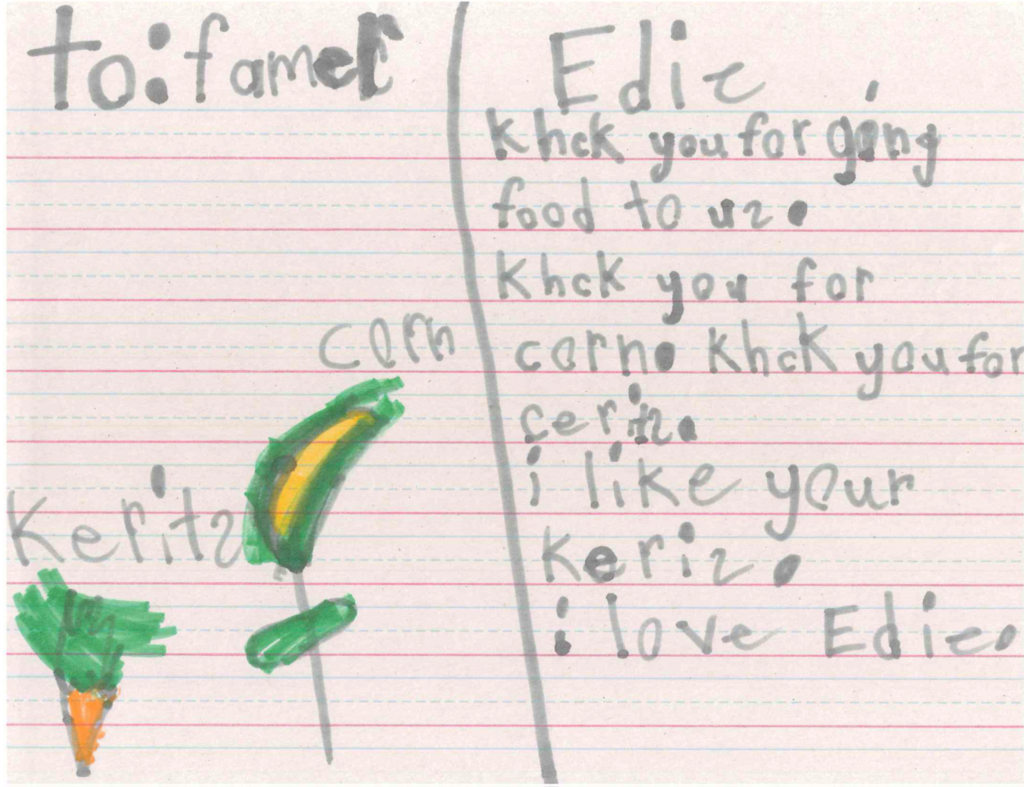 Edie, keritz happen to be one of our specialities. I hate to disappoint, but we don't grow carne, or corn, for that matter.
Edie, keritz happen to be one of our specialities. I hate to disappoint, but we don't grow carne, or corn, for that matter.
 Gunner, it sounds like you like a variety of foods from your potatoes to your tomatoes, and that makes us very happy. Happy to be at your survase.
Gunner, it sounds like you like a variety of foods from your potatoes to your tomatoes, and that makes us very happy. Happy to be at your survase.
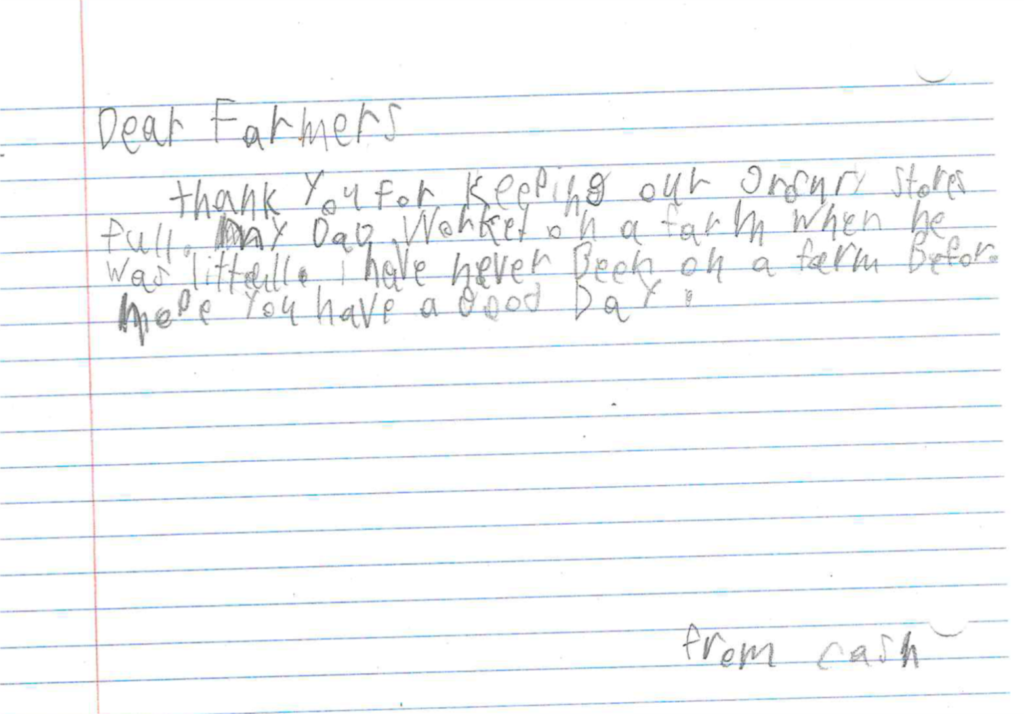 Hey Cash, we'd love for you and your dad to visit our farm one day. If he worked on a vegetable farm, he may be able to teach you some things. We appreciate your acknowledgment of the supply chain we work tirelessly to fulfill. Send Ada an e-mail if you'd like to visit, and have a good day yourself.
Hey Cash, we'd love for you and your dad to visit our farm one day. If he worked on a vegetable farm, he may be able to teach you some things. We appreciate your acknowledgment of the supply chain we work tirelessly to fulfill. Send Ada an e-mail if you'd like to visit, and have a good day yourself.
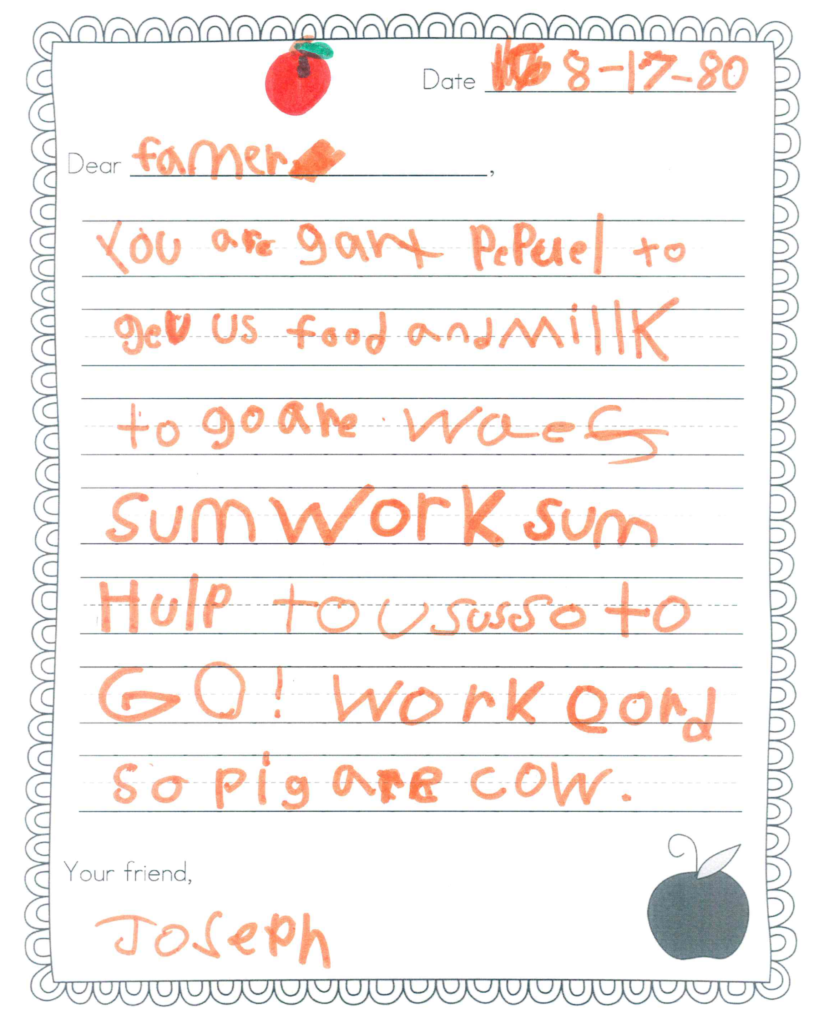 Hey Joseph, thanks for thinking we're gart peperel. It's true, many farmers are salt-of-the-earth type. We are vegetable farmers, but it certainly does seem like hard work to turn a pig into a cow. Thanks for the encouragement.
Hey Joseph, thanks for thinking we're gart peperel. It's true, many farmers are salt-of-the-earth type. We are vegetable farmers, but it certainly does seem like hard work to turn a pig into a cow. Thanks for the encouragement.
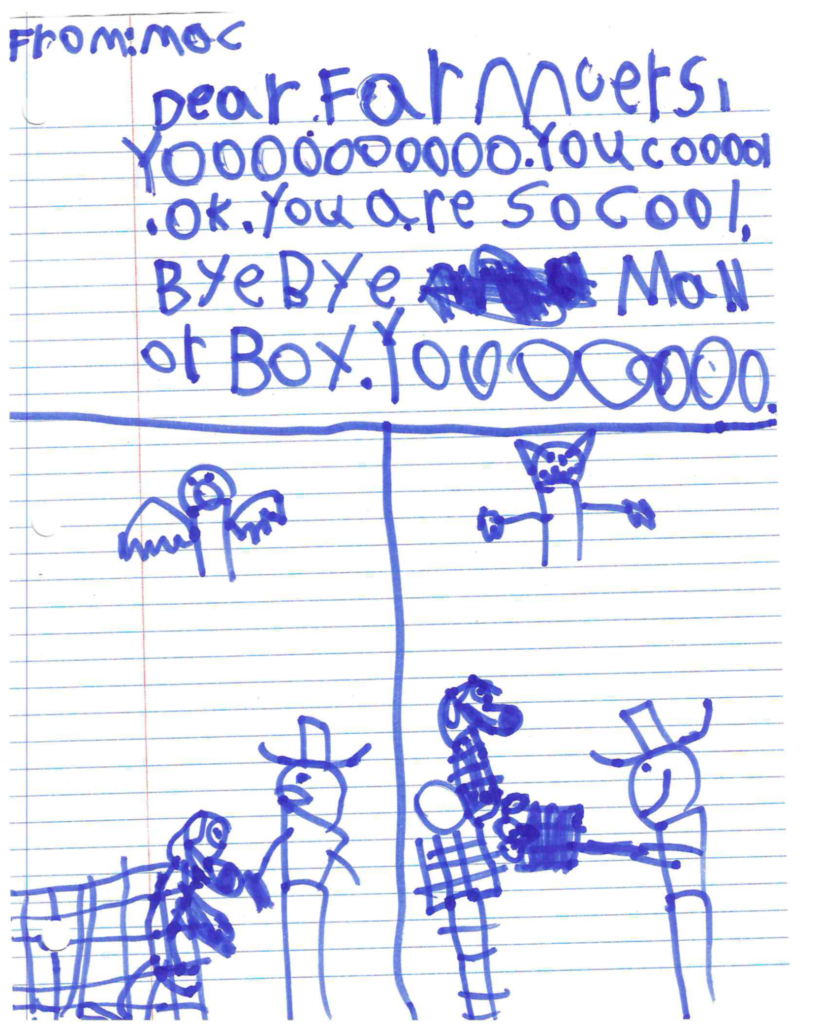 Yooooooooo Moc! U seem rly coooool too! We especially like your bat and cat drawings. Believe it or not, both animals are pretty useful to have on the farm - bats help pollinate plants, and cats help keep the mice away. We have lots of men that work here, and plenty of women, too. Just wanted to clarify.
Yooooooooo Moc! U seem rly coooool too! We especially like your bat and cat drawings. Believe it or not, both animals are pretty useful to have on the farm - bats help pollinate plants, and cats help keep the mice away. We have lots of men that work here, and plenty of women, too. Just wanted to clarify.
 Hey Rebeccca, thanks so much for your fan letter. We love you, too! Great question about the pet. We do have one small dog named Chuch that hangs around the barn and helps keep pests away. Do you have any pets?
Hey Rebeccca, thanks so much for your fan letter. We love you, too! Great question about the pet. We do have one small dog named Chuch that hangs around the barn and helps keep pests away. Do you have any pets?
 We love to groeng cariz, espeically the orange ones, but don't grow any corn.
We love to groeng cariz, espeically the orange ones, but don't grow any corn.
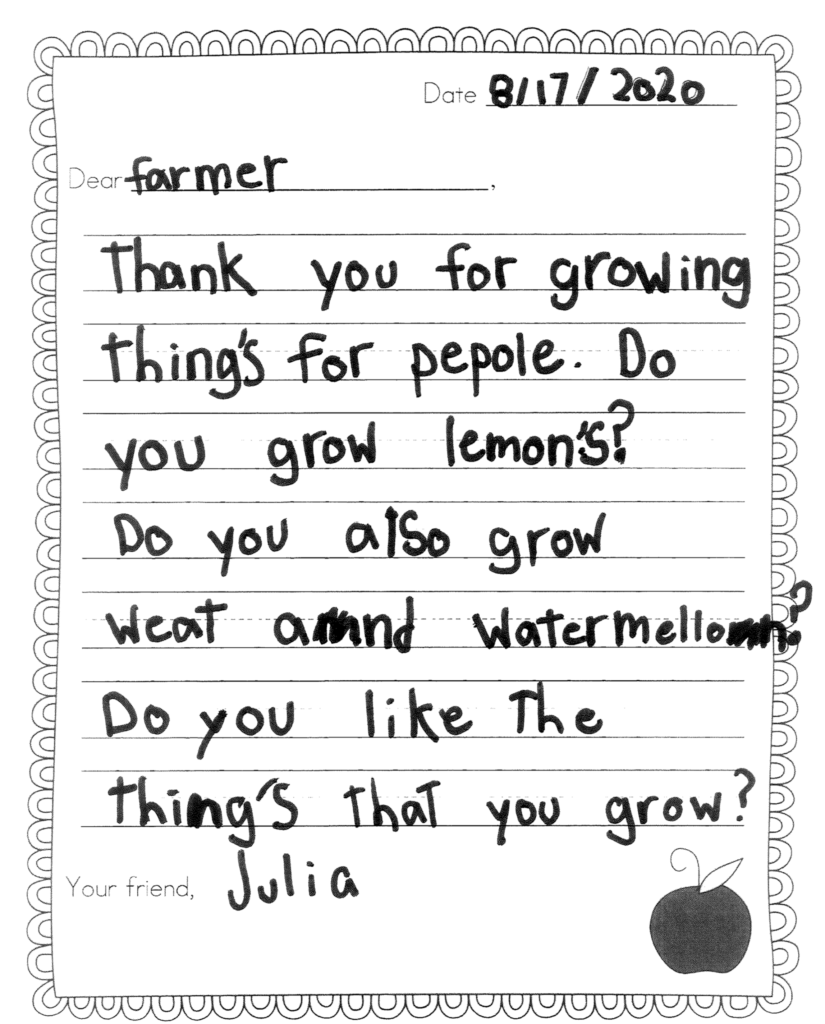 Hello Julia! You're welcome. We don't grow lemons. These do better in parts of Texas where it stays a little warmer in the winter. Also, we mostly grow "row crops" or vegetables that are planted in the ground, again and again, each season. Lemons grow on trees and we don't really have too many trees here. We don't grow weat, either. We DO grow watermelon, and it's in season during the hot summer months. Most of us like most of the things we grow, but not everyone likes everything. Does that make sense?
Hello Julia! You're welcome. We don't grow lemons. These do better in parts of Texas where it stays a little warmer in the winter. Also, we mostly grow "row crops" or vegetables that are planted in the ground, again and again, each season. Lemons grow on trees and we don't really have too many trees here. We don't grow weat, either. We DO grow watermelon, and it's in season during the hot summer months. Most of us like most of the things we grow, but not everyone likes everything. Does that make sense?
 Great illustration, Ruby. We often wear straw hats to protect us from the sun. Is that a baby koala in the farmer's pocket?
Great illustration, Ruby. We often wear straw hats to protect us from the sun. Is that a baby koala in the farmer's pocket?
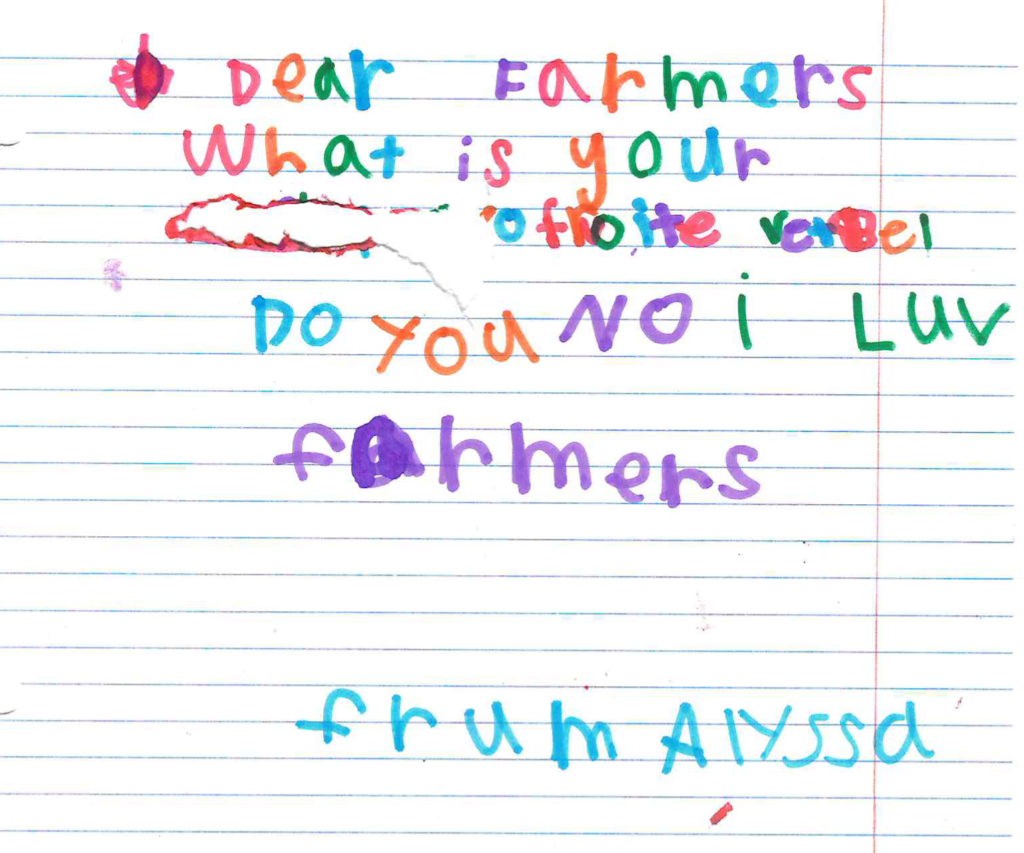 Our favorite vetebel varies from farmer to farmer. Some love okra, and some prefer kale. And, now we do! We luv you right back, Alyssa.
Our favorite vetebel varies from farmer to farmer. Some love okra, and some prefer kale. And, now we do! We luv you right back, Alyssa.
 Amen, sister.
Amen, sister.
 Yes, we do support the local collective of rainbow cat farmers.
Yes, we do support the local collective of rainbow cat farmers.
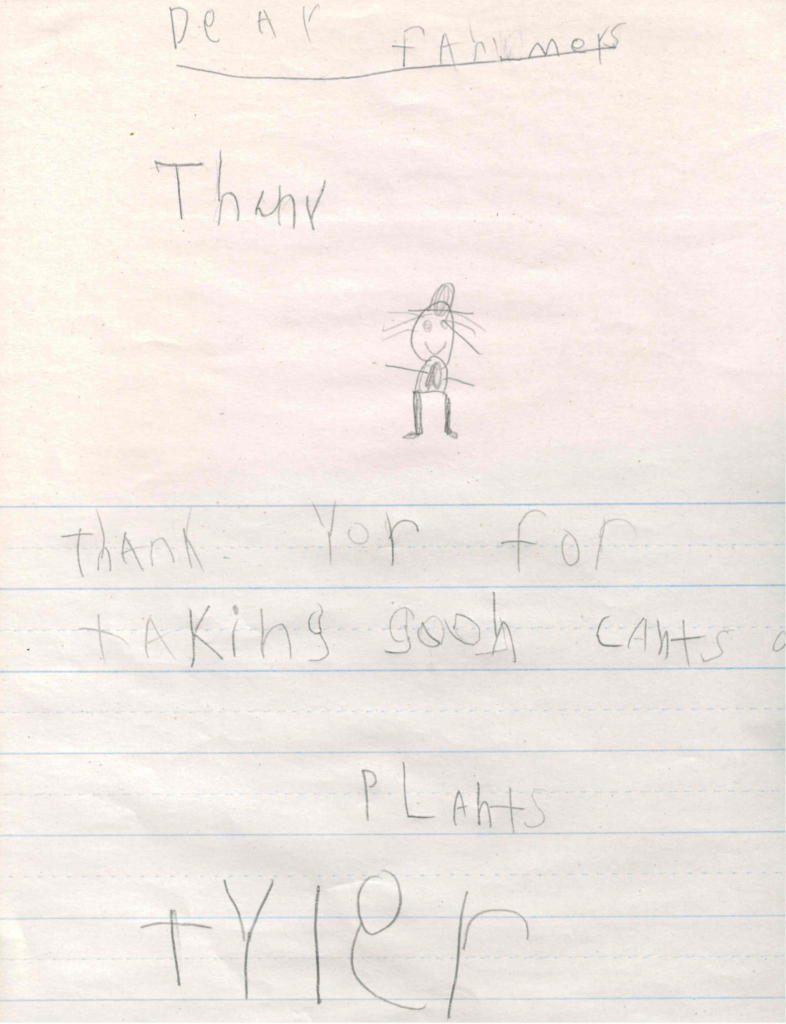 Hey Tyler, you're welcome. We try very hard to care for each and every plant we put into the ground.
Hey Tyler, you're welcome. We try very hard to care for each and every plant we put into the ground.
 Our pleasure.
Our pleasure.
 Hi Arvo. You've certainly said a lot with this spooky yet cheerful illustration. We get it. You're welcome.
Hi Arvo. You've certainly said a lot with this spooky yet cheerful illustration. We get it. You're welcome.
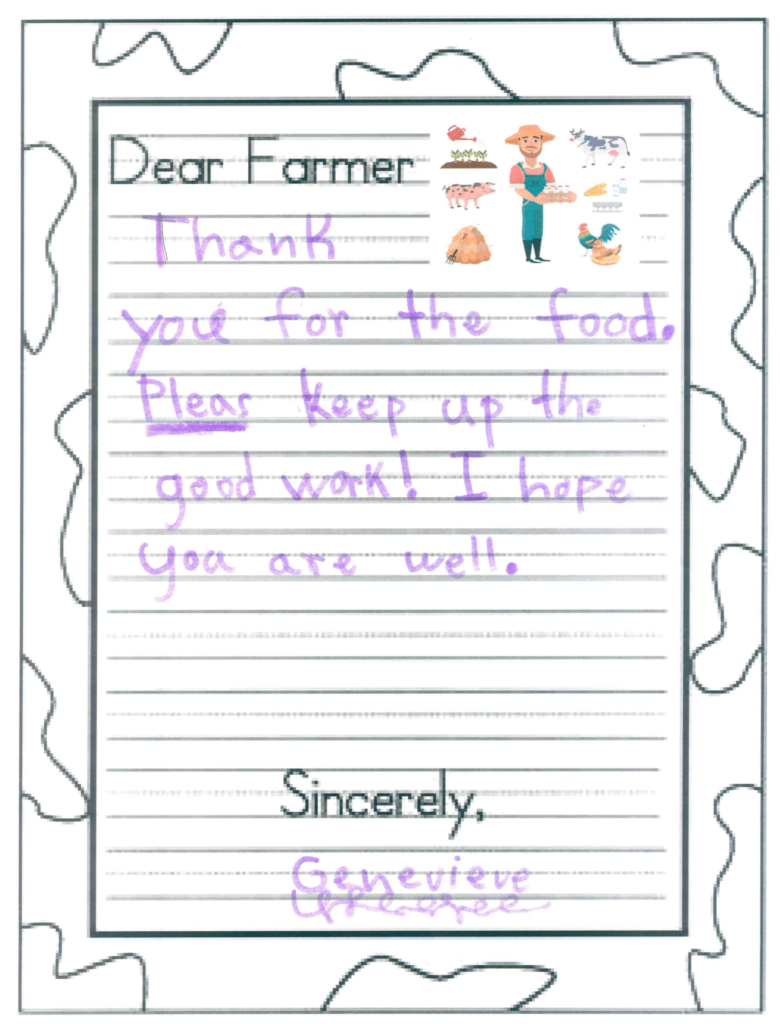 Hi Genevieve, you're welcome. We're well, thanks for asking.
Hi Genevieve, you're welcome. We're well, thanks for asking.
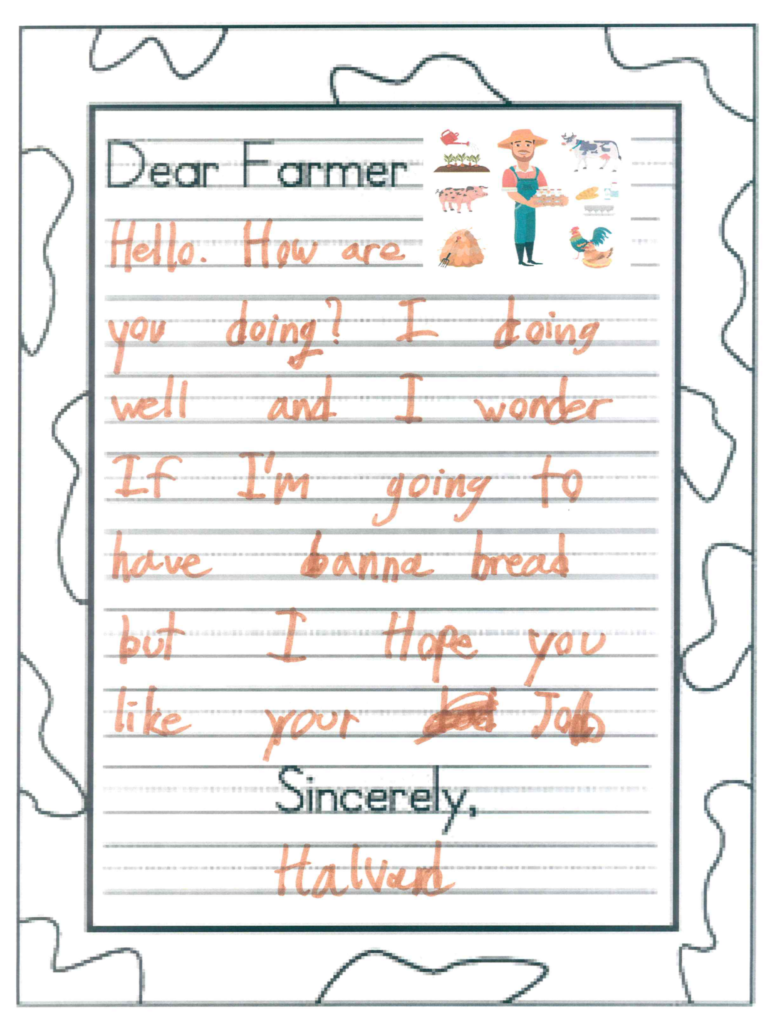 Now you've got us wondering if you ever got that banana bread. We're happy to report that we do like our job... most days. Glad to hear you're doing well. Keep up the wondering.
Now you've got us wondering if you ever got that banana bread. We're happy to report that we do like our job... most days. Glad to hear you're doing well. Keep up the wondering.
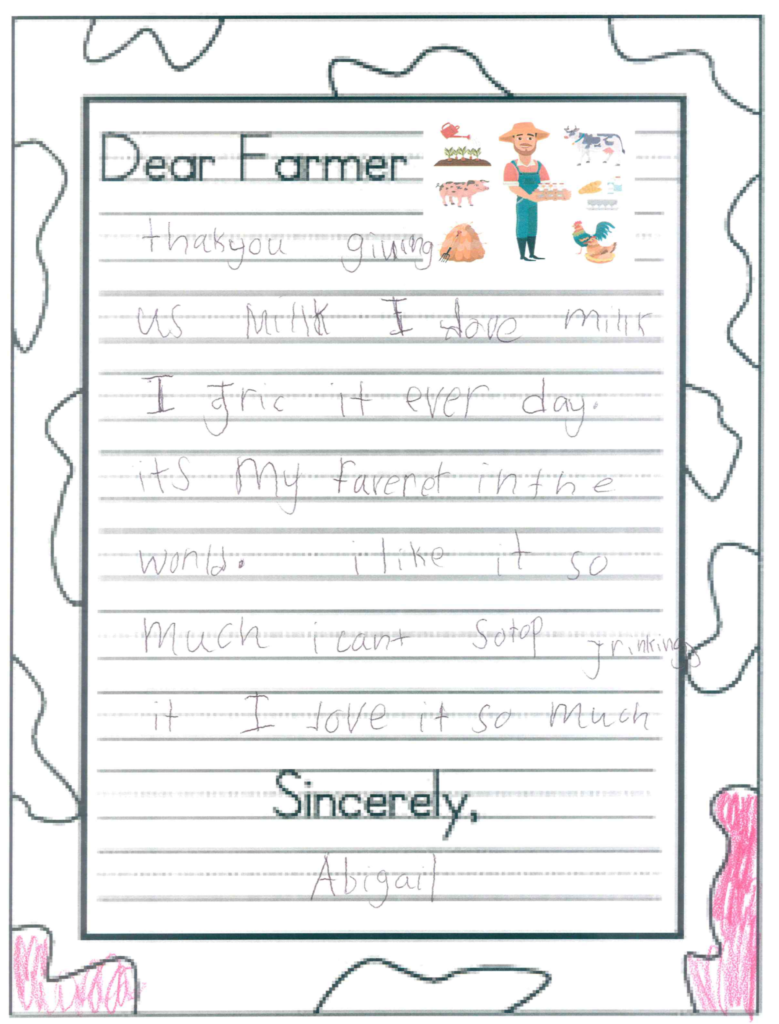 Hi Abigail. We're so happy to hear you like milk so much.
Hi Abigail. We're so happy to hear you like milk so much.
 Hi Krismane, thanks for all the great questions. We grow vegetables at our farm, and don't have any chickens. Or eggs. BUT! We do have some farmer friends who produce eggs. We purchase these eggs from this farmer and provide them to our customers as well as our employees on pay-day. Most of the farmers that work here love to cook and to eat. We usually eat big lunches that were prepared with the vegetables we grow. Some days when we're less prepared, we eat P-Terry's from down the road. We farm on 183 acres. Appreciate the reminder to mask up. Stay safe, yourself.
Hi Krismane, thanks for all the great questions. We grow vegetables at our farm, and don't have any chickens. Or eggs. BUT! We do have some farmer friends who produce eggs. We purchase these eggs from this farmer and provide them to our customers as well as our employees on pay-day. Most of the farmers that work here love to cook and to eat. We usually eat big lunches that were prepared with the vegetables we grow. Some days when we're less prepared, we eat P-Terry's from down the road. We farm on 183 acres. Appreciate the reminder to mask up. Stay safe, yourself.
 William, you're certainly right. Forming is hord wrek, but all the cerits make it worth it.
William, you're certainly right. Forming is hord wrek, but all the cerits make it worth it.
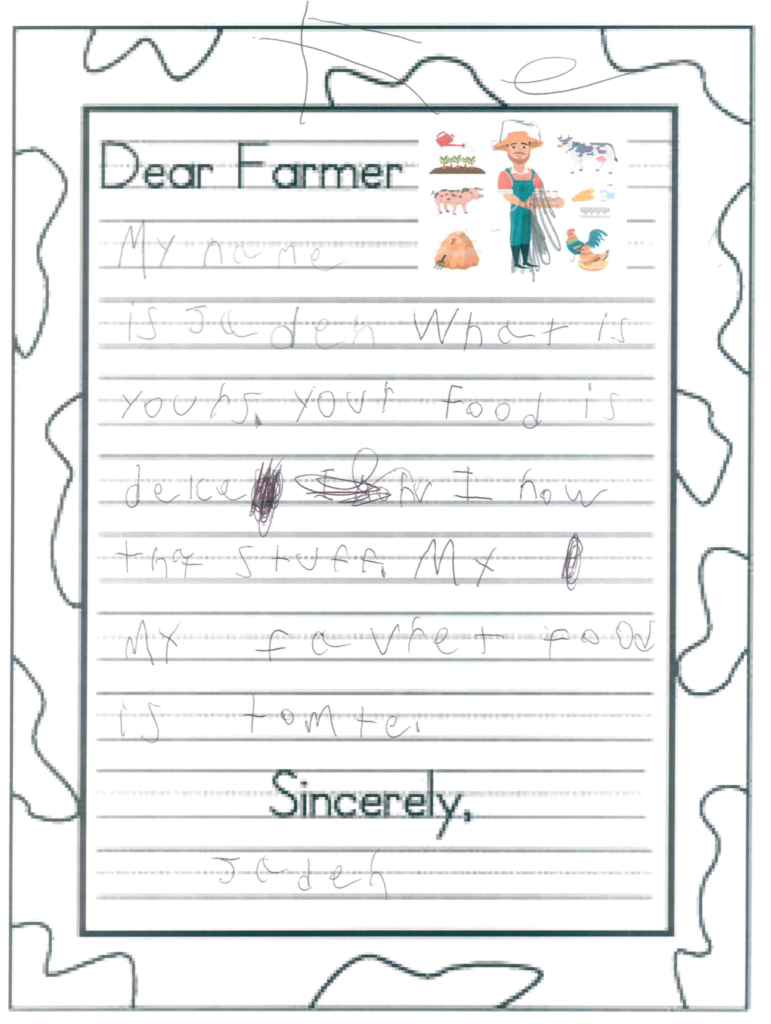 Hi Jadeh. We love your confidence. Our name is farmer.
Hi Jadeh. We love your confidence. Our name is farmer.
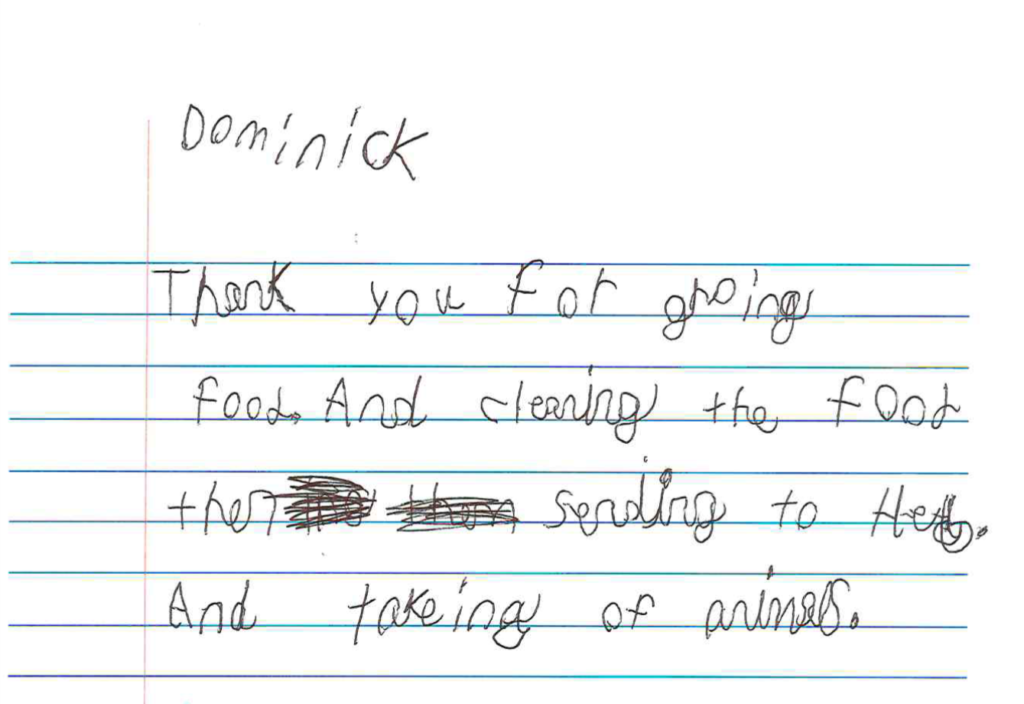 Dominick: you're right: there is a lot of work left to do after a vegetable is picked, and our post-harvest operations employ about a third of our employees. We are very proud of our distribution relationship with HEB as well as Central Market. Your cursive is progressing along nicely.
Dominick: you're right: there is a lot of work left to do after a vegetable is picked, and our post-harvest operations employ about a third of our employees. We are very proud of our distribution relationship with HEB as well as Central Market. Your cursive is progressing along nicely.
 HI Eli. We truly hope you consider a career in agriculture. Goodness knows our region will need more good farmers in 20 years.
HI Eli. We truly hope you consider a career in agriculture. Goodness knows our region will need more good farmers in 20 years.
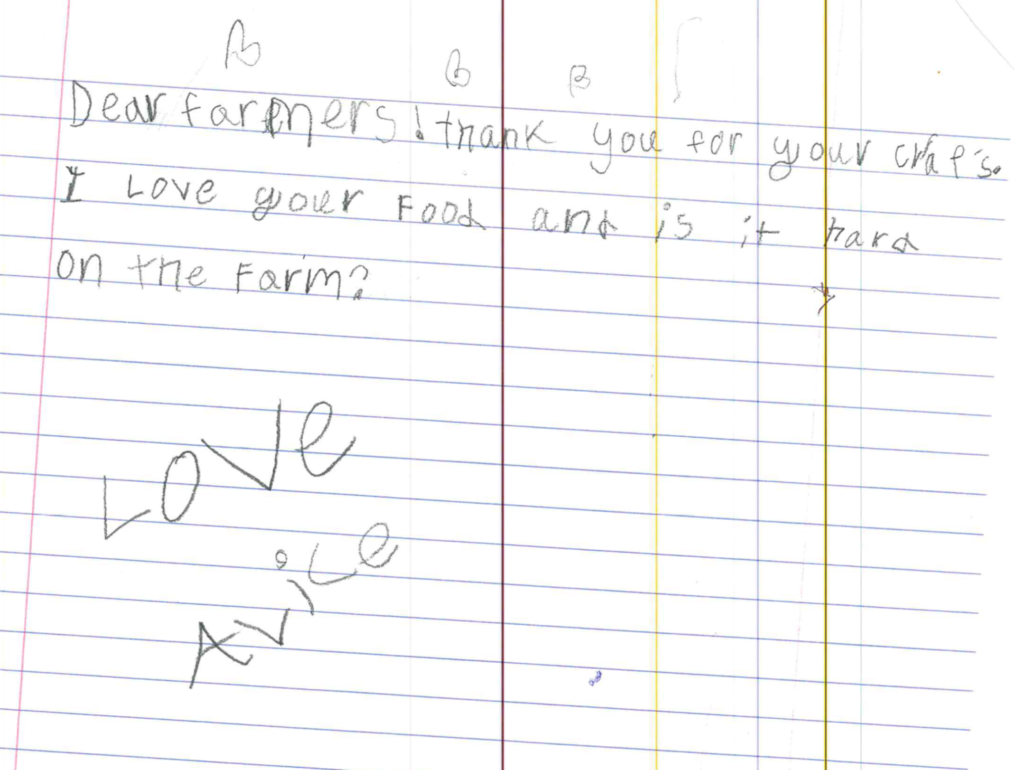 Hi ALice, farm work can definitely be hard depending on the task at hand and the weather outside. We do use tools like tractors and forklifts to help with the heavy lifting Despite this farm work can be hard on the body. We'll do our best to keep the crafaf's coming.
Hi ALice, farm work can definitely be hard depending on the task at hand and the weather outside. We do use tools like tractors and forklifts to help with the heavy lifting Despite this farm work can be hard on the body. We'll do our best to keep the crafaf's coming.
 We do averting we can to be the best farmes we can be. np.
We do averting we can to be the best farmes we can be. np.
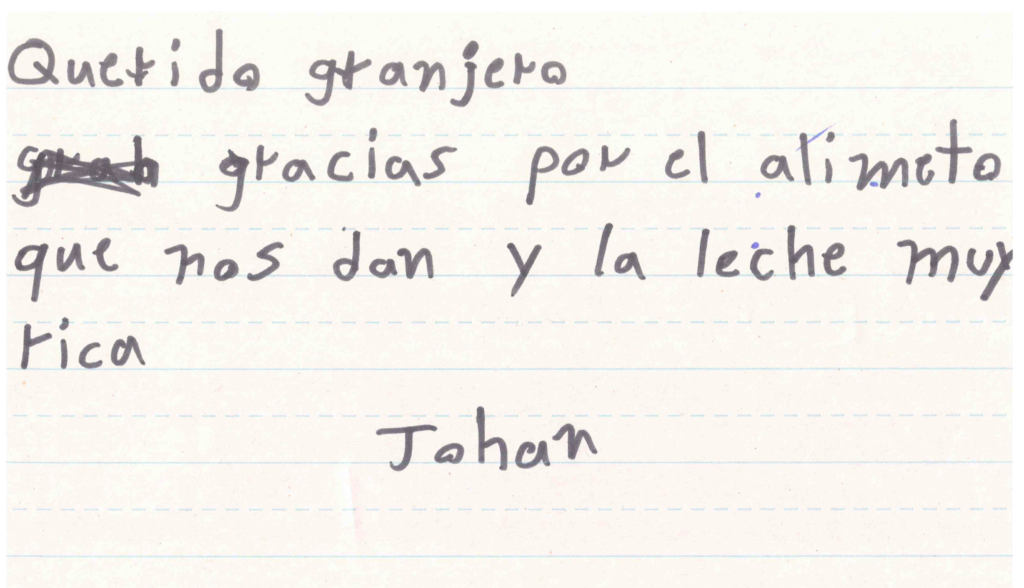 De nada. ¡Nos encanta cosechar alimentos para todos!
De nada. ¡Nos encanta cosechar alimentos para todos!
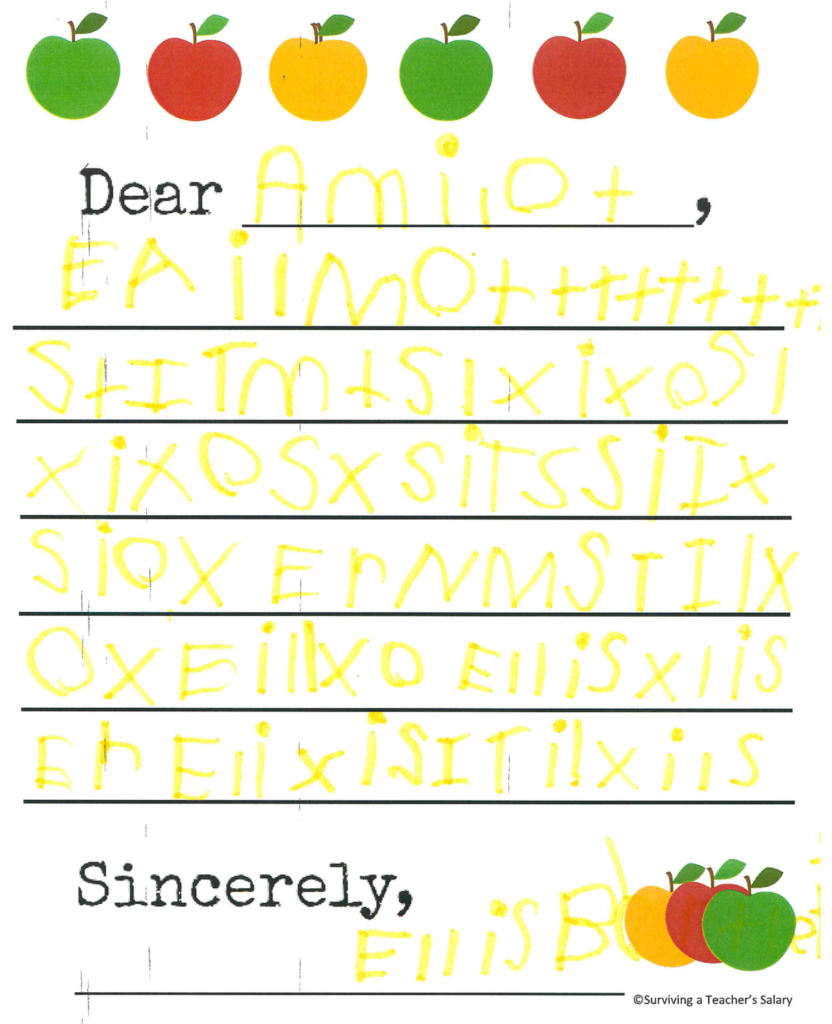 HEYELISWERANGEINAGEFROMABOUT20TOPROBABLY65ANDWEXOXOXOYOUTOO.
HEYELISWERANGEINAGEFROMABOUT20TOPROBABLY65ANDWEXOXOXOYOUTOO.
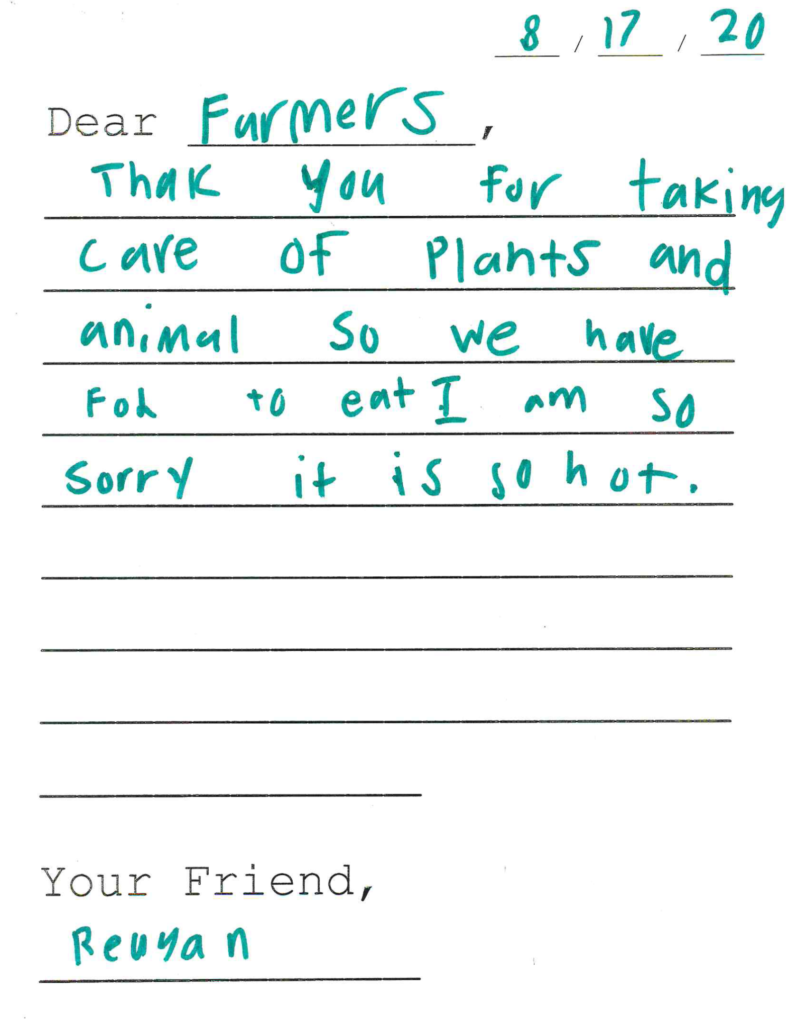 Hey Reuygan - we appreciate your condolences. Lucky for you and me both, cooler weather is on its way.
Hey Reuygan - we appreciate your condolences. Lucky for you and me both, cooler weather is on its way.
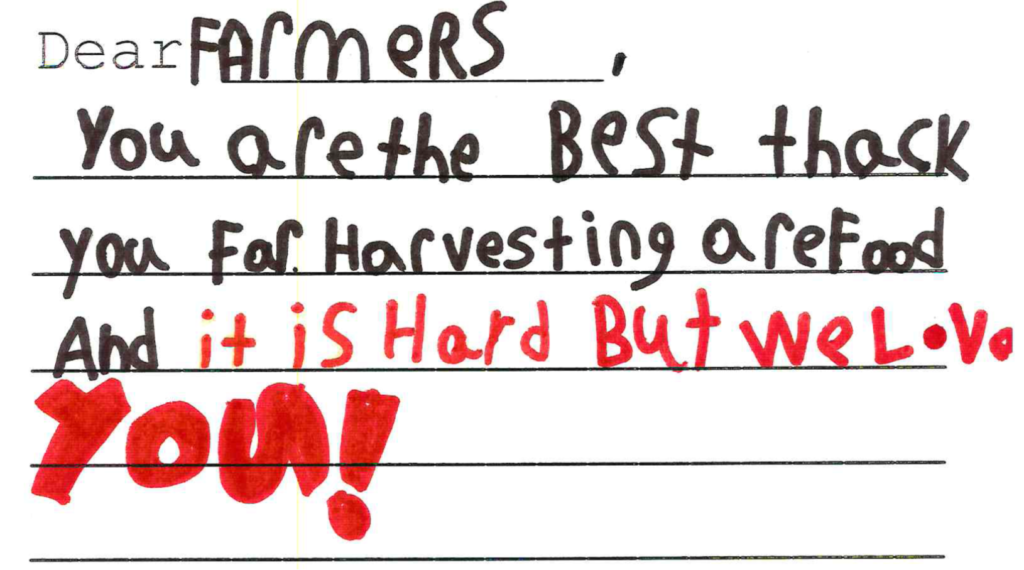 No, YOU are the best! We appreciate the love!
No, YOU are the best! We appreciate the love!
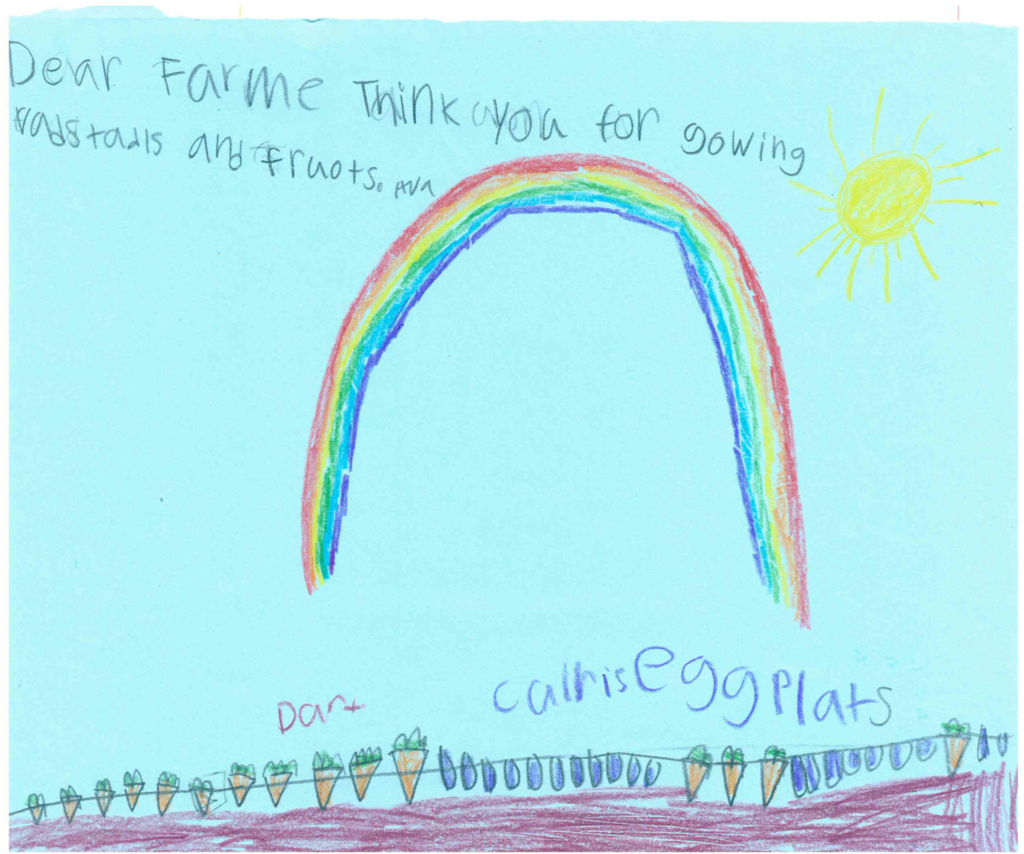 Dear Ava, we love your egplat illustration. Did you know egplats are really fruots?
Dear Ava, we love your egplat illustration. Did you know egplats are really fruots?
 Hey Natalia, we actually do grow a small number of grapes and also, Spike Cats rule.
Hey Natalia, we actually do grow a small number of grapes and also, Spike Cats rule.
 I'm good.
I'm good.
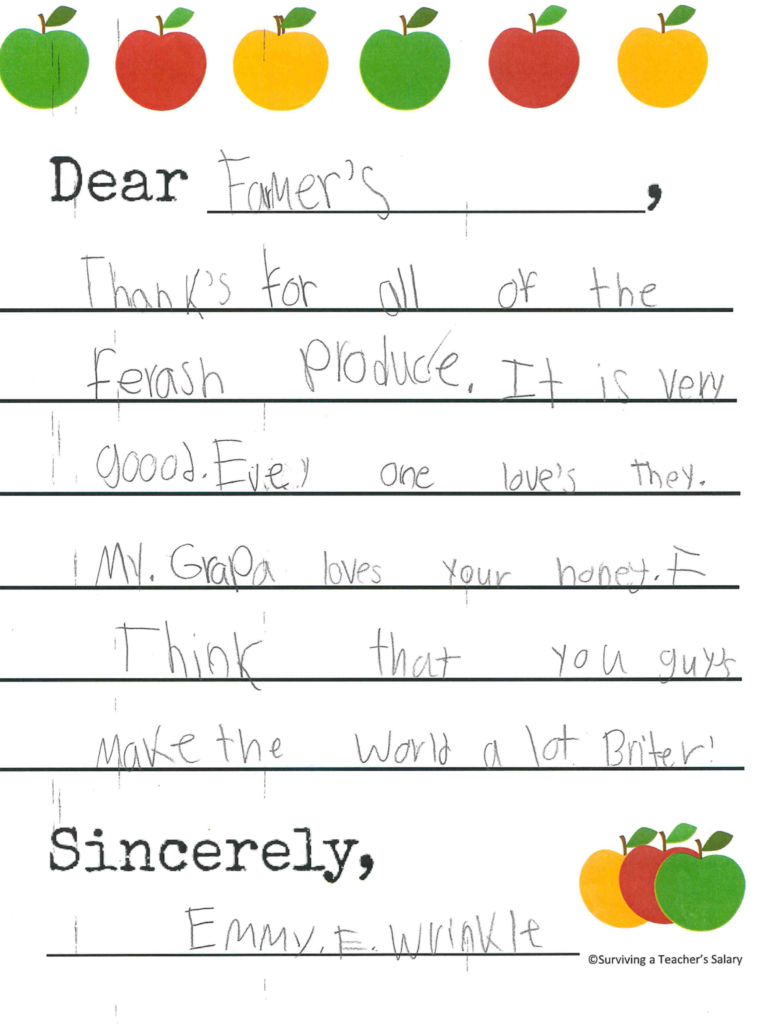 "Every one love's they." is music to our ears.
"Every one love's they." is music to our ears.
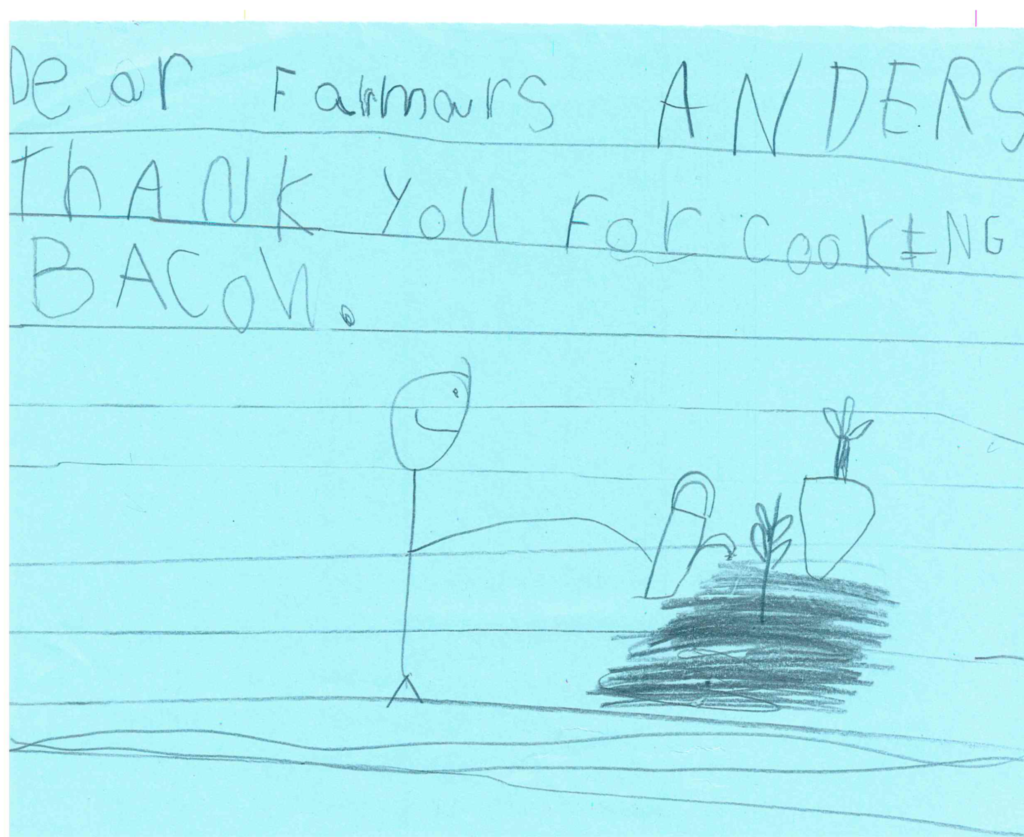 It's usually more of a weekend activity for us, but we never regret it.
It's usually more of a weekend activity for us, but we never regret it.
 Krop till we drop.
Krop till we drop.
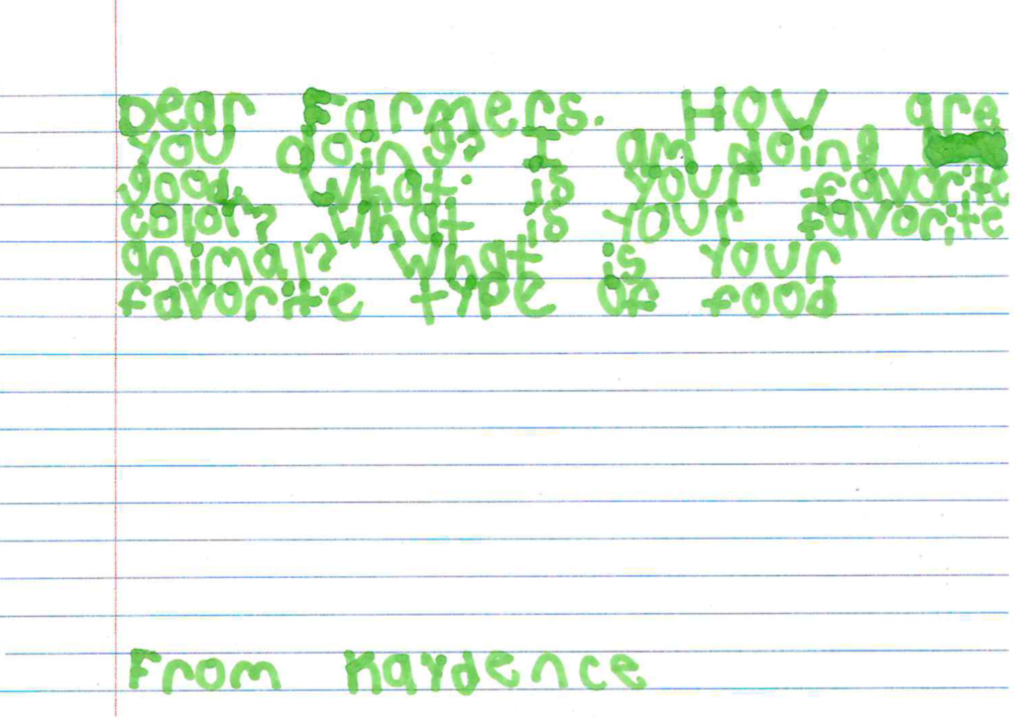 Doing good. Green. Dog. Italian.
Doing good. Green. Dog. Italian.CSA BOX CONTENTS WEEK OF SEPT 28TH
09/29/20 — Scott
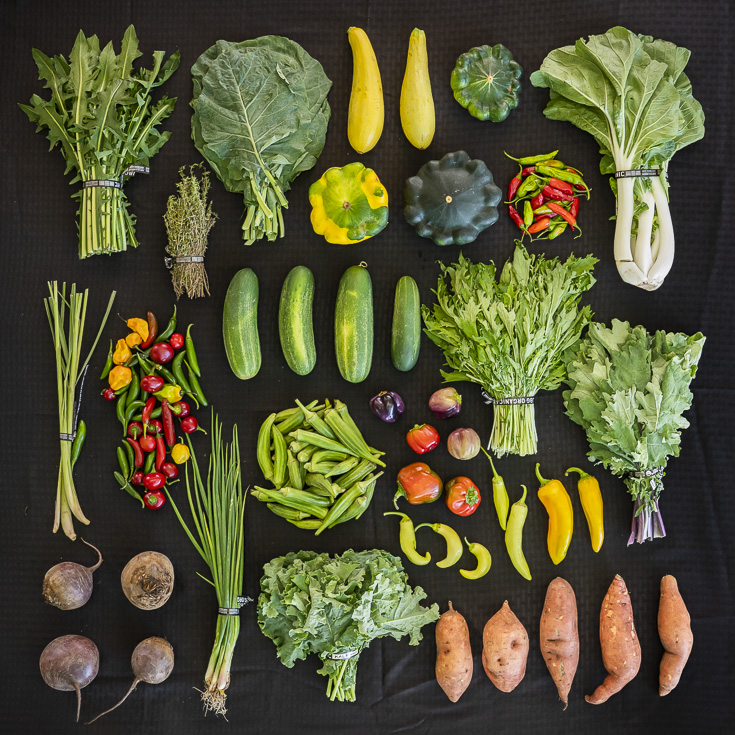 CSA Box Contents Week of Sept 28th
CSA Box Contents Week of Sept 28th
Individual Box - Bok Choy, Cucumber, Greens Farmers Choice, Multiplying Onion, Sweet Pepper Small Box - Beets, Bok Choy, Cucumber, Farmers Choice Greens, Dandelion, Herb, Summer Squash Medium Box - Beets, Bok Choy, Cucumber, Dandelion Greens, Herb, Braising Mix Lettuce, Multiplying Onion, Sweet Pepper, Sweet Potato, Summer Squash Large Box - Beets, Bok Choy, Cucumber, Farmers Choice Greens, Arugula, Dandelion Greens, Herb, Lemongrass Herb, Multiplying Onion, Shishito Pepper, Sweet Potato, Summer Squash
CSA BOX CONTENTS WEEK OF SEPT 28TH
09/29/20 — Scott
 CSA Box Contents Week of Sept 28th
CSA Box Contents Week of Sept 28th
Large Box
Beets
Bok Choy
Cucumber
Farmers Choice
Greens, Arugula
Greens, Dandelion
Herb
Herb, Lemongrass
Onion, Multiplying
Pepper, Shishito
Potato, Sweet
Summer Squash






 0 ITEMS IN CART
0 ITEMS IN CART 

